The material on this website is intended for educational use only and may not be reproduced for commercial purposes without express permission from the appropriate copyright holder.
Le contenu de ce site Web est destiné à des fins pédagogiques seulement et ne peut être reproduit à des fins commerciales à moins d'en avoir obtenu la permission du titulaire du droit d'auteur approprié.
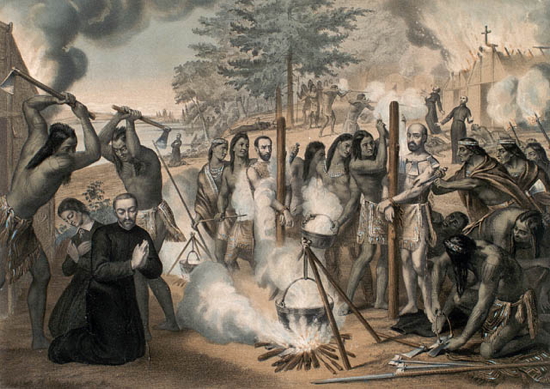
Mort héroïque de quelques pères de la communauté de Jésus en Nouvelle-France, 1642-49, LAC C-004462
This engraving portrays ten martyrdoms which took place in various places between 1646 and 1650. It was used to solicit funding to support the missions.
• Anne de Nouë de Champagne (1587-1646) was frozen to death while trying to
administer the sacrament to soldiers at Sorel.
• Isaac Joques (1607-1646) was killed by a hatchet blow to the head by Iroquois at
Ossernenon (Auriesville, New York).
• Two young Frenchmen who were killed.
• Antoine Daniel (1601-1648) was slain at the Saint-Joseph Mission II.
• Jean de Brébeuf (1593-1649) and Gabriel Lalemant (1610-1649).
• Charles Garnier (1605-1649) was slain by the Iroquois at Saint-Jean in the Huron
country.
• Noël Chabanel (1613-1649) died at the hands of a former convert.
• Joseph Onahare (d.1650) was a young Algonquin who was killed for refusing to
abandon Christianity.
[This engraving portrays ten martyrdoms which took place in various places between 1646 and 1650. It was used to solicit funding to support the missions. Torture was a common practice in Europe in the 16th and 17th centuries.]
"Aboriginal peoples . . . are still being hounded and haunted by White North America's image machine, which has persistently portrayed them in extremes as either the grotesque ignoble or noble savage. . . The Civ/Sav doctrine (Civilization/Savage) permeates Canadian culture and is obviously very powerful . . . it dichotomizes Native-White relations in terms of civilization inevitably winning over savagery. . . Aboriginal Nations fighting to save their persons, communities, cultures, and lands was propagandized as simple irrational violence of bloodthirsty savages."
Emma LaRocque, When the Other is Me Native Resistance Discourse 1850-1990
Louis XIV authorized slavery in New France.
In New France, the buying and selling of Black men, women and children and the non-consensual unpaid labour extracted from approximately four thousand Indigenous and Black enslaved people helped build infrastructure and wealth for white settlers during the seventeenth and eighteenth centuries. (Marcel Trudel)
Policing Black Lives, Robyn Maynard
"The practice of Black enslavement was expanded and consolidated under British rule."
Policing Black Lives, Robyn Maynard
[Approximately 3,000 Blacks immigrated to Nova Scotia during and after the American Revolution (Black Loyalists). Thousands more enslaved Blacks arrived into Nova Scotia as the property of white Loyalist slaveholders and settlers.]
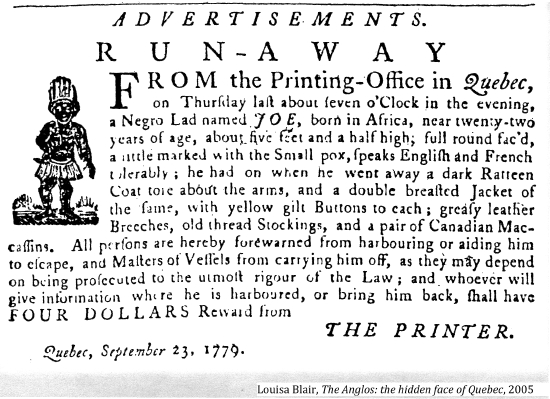
"An Act to prevent the further introduction of Slaves, and to limit the Term of Contracts for Servitude within this Province."
Passed by Upper Canada, 1793

Upper Canada Gazette, 10 February 1806
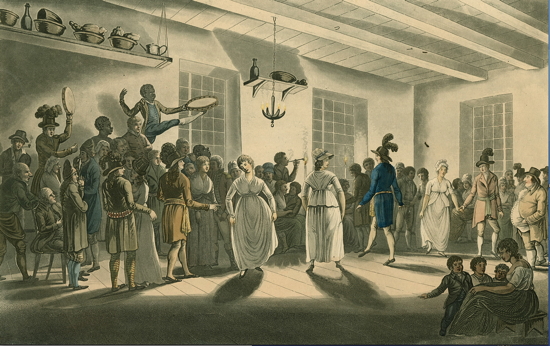
Minuets of the Canadians (Québec). Canadian Minuets. George Heriot, Travels Through the Canadas, London, 1807, Toronto Reference Library, Baldwin Collection JRR 2026 Cab II

British Warfare in 1812, 1837-38. Les Britanniques à la guerre, 1812 et 1837-1838. Henry R. Robinson, New York, LAC Acc. No. 1970-188-2011 W.H. Coverdale Collection of Canadiana, ca.
[Thousands of Black volunteers fought for the British]
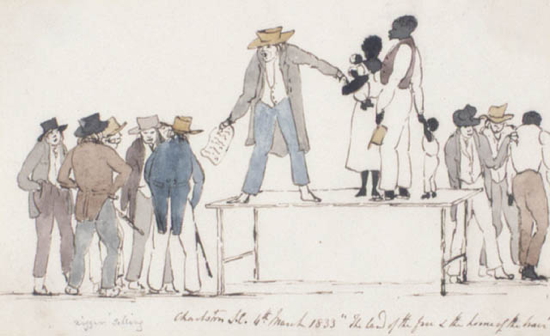
The land of the free and the home of the brave. (Slave market), Charleston, South Carolina. Le pays des hommes libres et la patrie des braves (marché aux esclaves). Sir Henry Byam Martin, LAC Acc. No. 1981-42-42 Source: Dr. Nigel Davies, Gelati, Mexico, 4 March 1833
"It was the 18th of October 1830, in the morning, when my feet first touched the Canada shore. I threw myself on the ground, rolled in the sand, seized a handfuls of it and kissed them, and danced around till, in the eyes of several who were present, passed for a madman."
Josiah Hanson, A liberated slave [Uncle Tom]
[Slavery formally ended in Canada in 1834 after the British Parliament passed an act abolishing the institution throughout the Empire.]
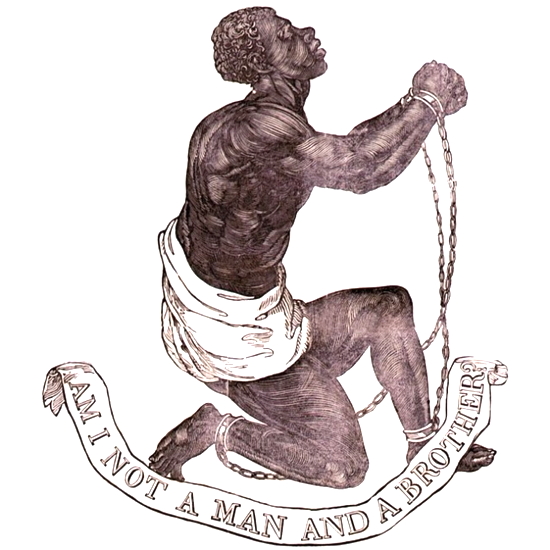
Official medallion of the British Anti-Slavery Society, Josiah Wedgwood, William Hackwood, or Henry Webber, 1834 [Emancipation Day, Canada]

Black Settlers at Bedford Basin, NS, Robert Petley, LAC 1938-220-1
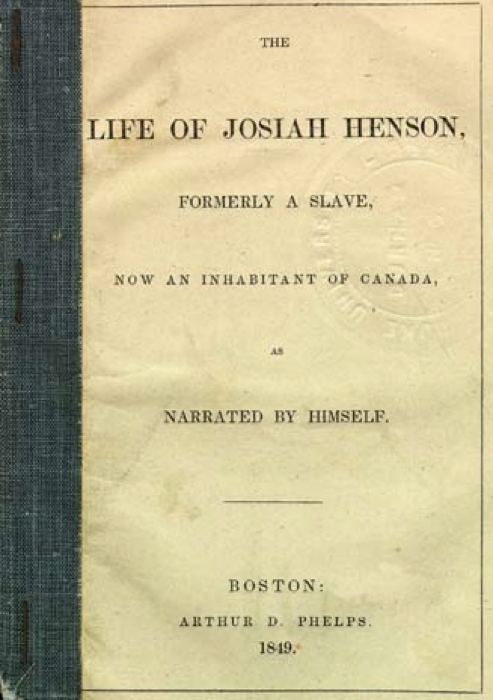
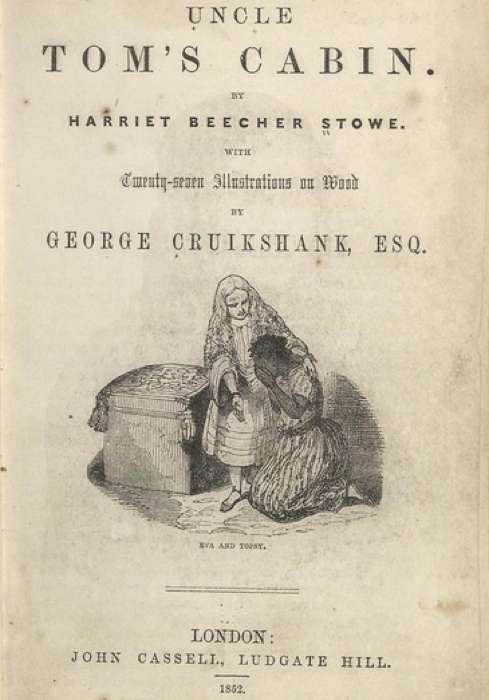
https://www.heritagetrust.on.ca/en/properties/uncle-toms-cabin
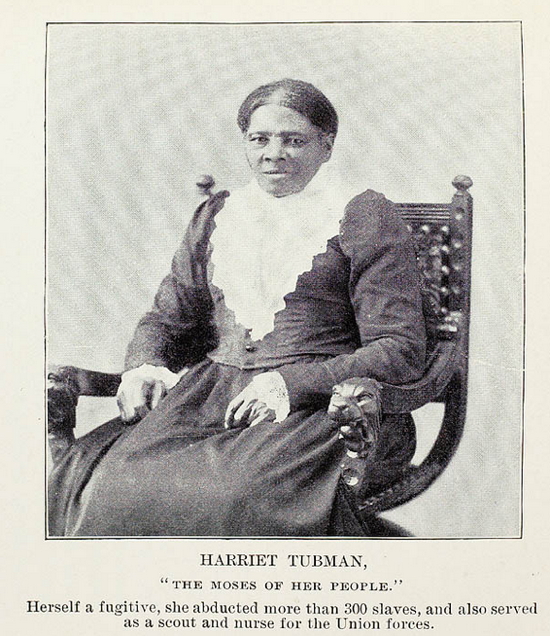
[Working from St. Catharines, Ontario, in the 1850s, Harriet Tubman (1820-1913) was the best known "conductor" of the "Underground Railroad." She returned to the United States shortly before the outbreak of the American Civil War and served the Union cause. Wilbur H. Siebert, The Underground Railroad from Slavery to Freedom, The Macmillan Company, 1898]
[The Underground Railroad does not depict an actual event; instead, it was created as a celebration of the abolitionists’ labors and their moral struggle against slavery.]
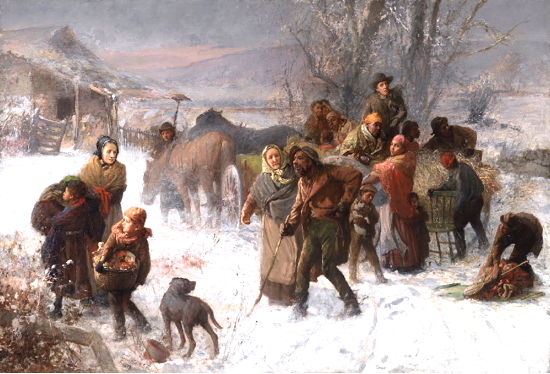
Charles T. Webber, The Underground Railway, Cincinnati Art Museum, 1893
"Separate colored schools and churches are nuisances that should be abated as soon as possible, they are dark and hateful relics of Yankee Negrophobia, contrary to that healthy, social and political equality recognized by the fundamental principles of British common law, and should never be permitted to take root upon British soil."
Canadian Freeman, 28 March 1857
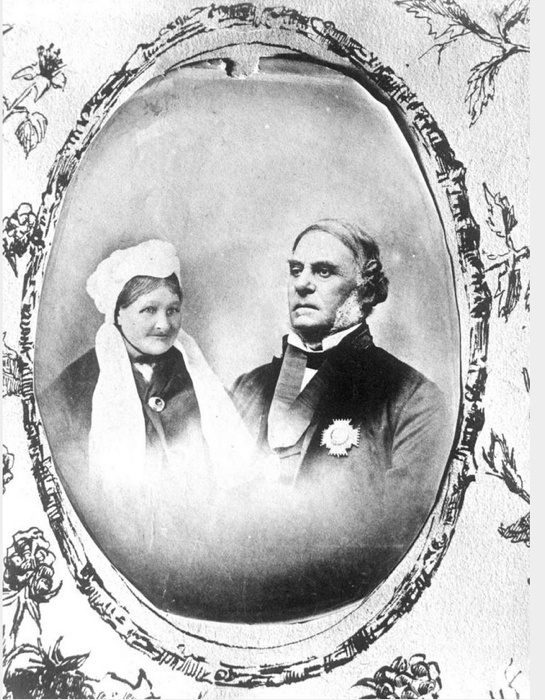
Sir James and Lady Douglas; composite photo ca. 1880 based on 1860s photos, BC Archives A-01230
[Governor James Douglas was born in British Guiana. His father was a Scottish planter and merchant from Glasgow. His mother was a Barbadian Creole (someone of mixed African and European ancestry who was not a slave), making him a "Scotch West Indian". Douglas married Amelia Connolly, the half Indian daughter of the chief factor of Fort St. James (Cree and Metis).]
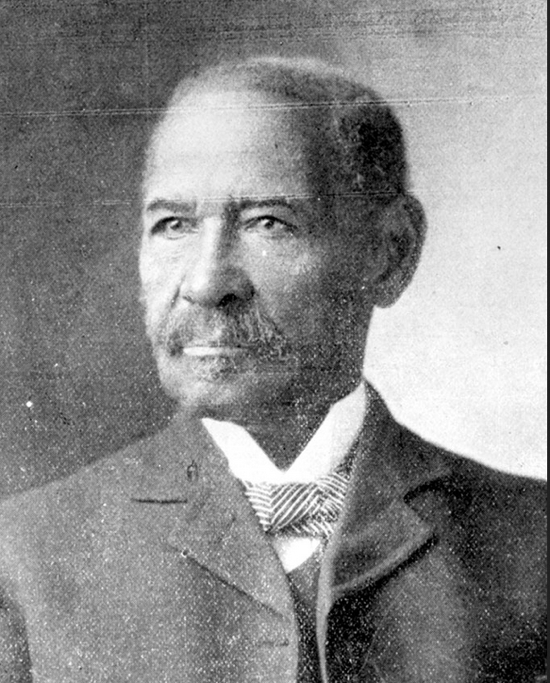
Mifflin Gibbs, BC Archives B-01601
[At the invitation of Governor James Douglas, Mifflin Gibbs brought 600 black families from California to Victoria in 1858. Gibbs was a successful black activist, businessman and politician.]
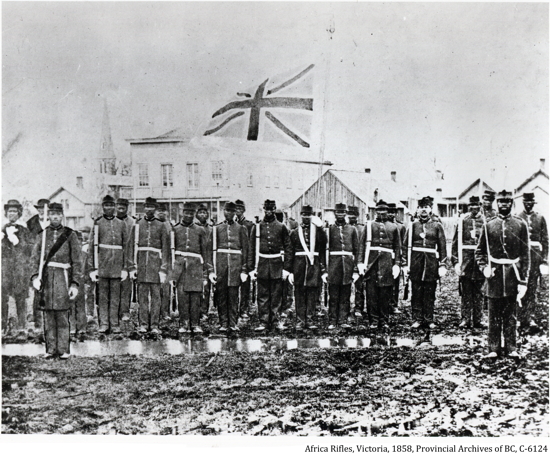
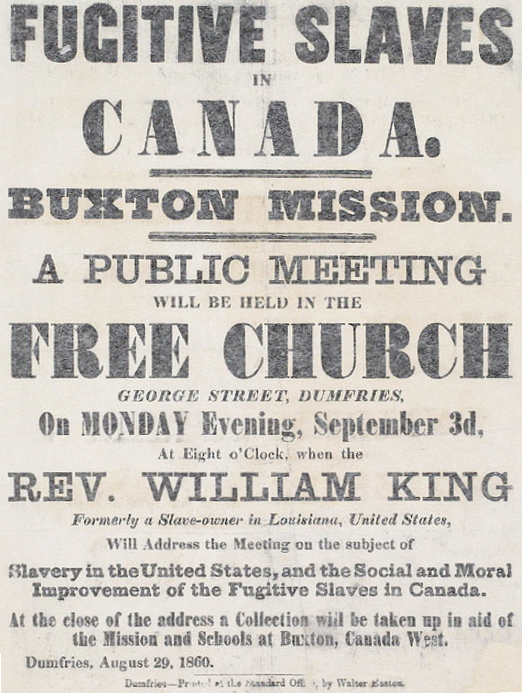
Fugitive Slaves in Canada, Buxton Mission, 1860, LAC William King fonds MG 24 J 14, p.860 617127
Song of the Free, 1860
The song's first two stanzas
Tune Oh! Suzannah:
I'm on my way to Canada,
That cold and dreary land,
The dire effects of slavery
I can no longer stand,
My soul is vexed within me sore
To think that I'm a slave,
I'm now resolved to strike the blow
For freedom or the grave.
Oh, righteous father, wilt thou not pity me,
And aid me on to Canada, where colored men are free.
I heard the Queen of England say
If we would all forsake
Our native land of slavery
And come across the lake,
That she was standing on the shore
With arms extended wide,
To give us all a peaceful home
Beyond the rolling side.
Farewell old master, that's enough for me,
I'm going straight to Canada where colored men are free.
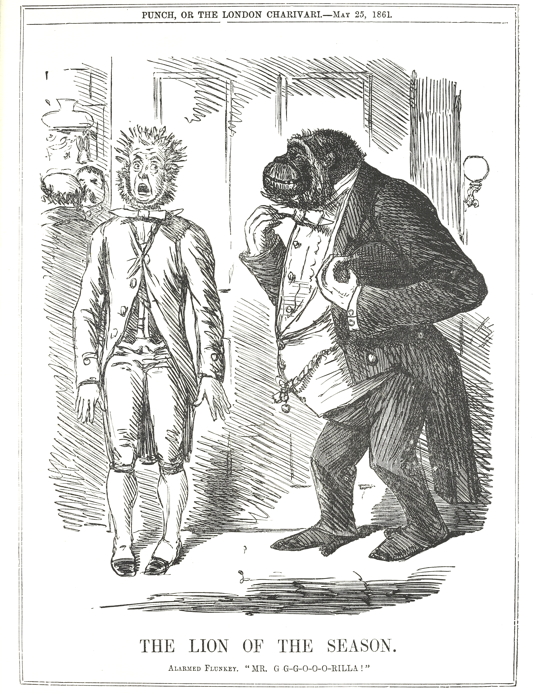
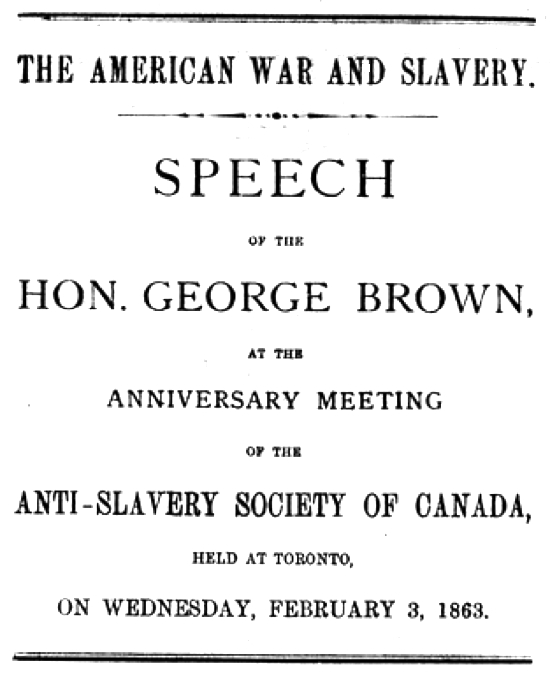
As editor of the newspaper The Globe, George Brown (1818-1880) vigorously promoted the anti-slavery movement in Ontario. He co-founded with his family and associates, the Anti-Slavery Society of Canada in Toronto. He was active in the Anti-Slavery Society of Canada and he later became one of the Fathers of Confederation. 1862, William Ellisson, 1862, LAC C-008359
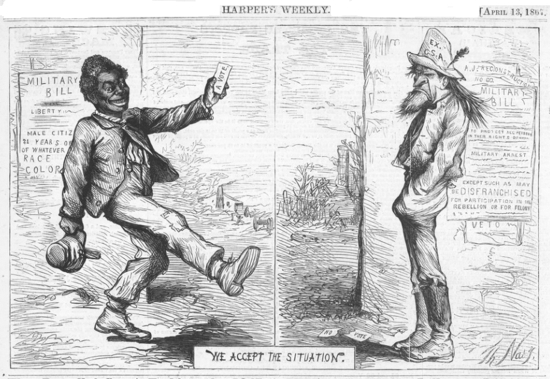
Harper's Weekly, New York, 27 April 1867
[Black Canadian men received the vote with the abolition of slavery in 1834]
"Columbus or the Jesuits were but the beginning of an endless string of White heroes who filled the pages of my comics and my school textbooks. The Explorers, the Conquistadores, the Missionaries, the Fur Traders, the Pilgrims and Puritans, the Daniel Boones, the American Cavalry and the Cowboys, the Fathers of Confederation––they were all presented as 'great' and their greatness was and still is directly related to the degree to which they othered, killed, dehumanized or de-Indianized Indians."
Emma LaRocque, When the Other is Me Native Resistance Discourse 1850-1990"
"In retrospect, the most striking feature of colonialism in the 19th Century seems to be its overt, pervasive, extraordinarly confident racism."
Nicholas Thomas
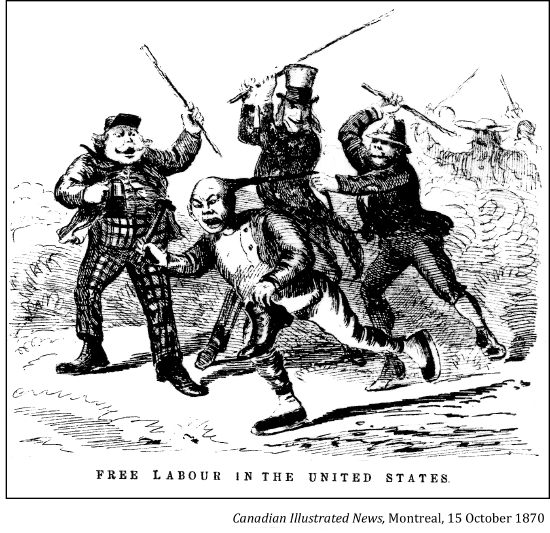
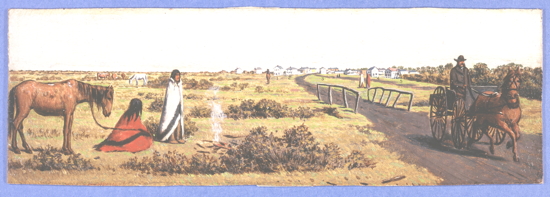
Barbarism and Civilization, 1870, MTPL
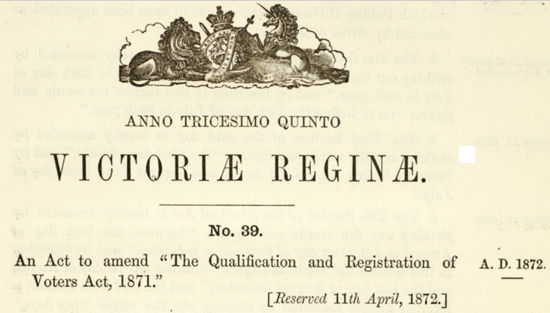

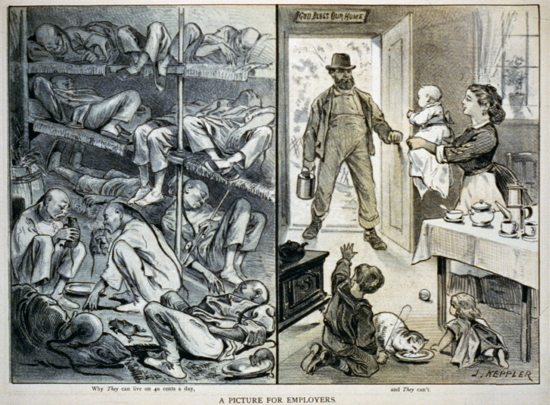
Puck, New York, 28 August 1878
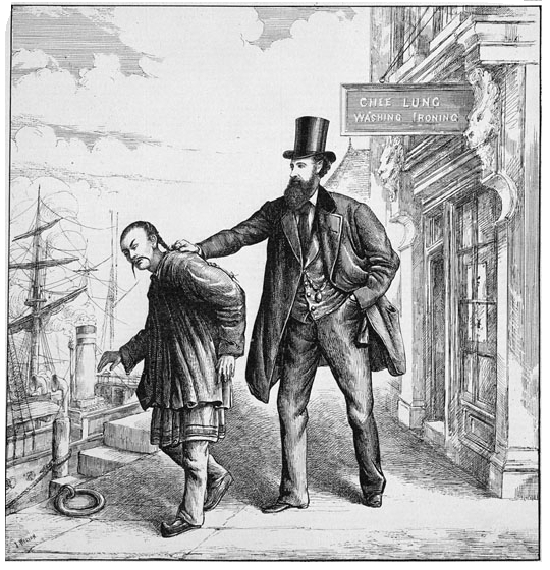
THE HEATHEN CHINESE OF BRITISH COLUMBIA
AMOR DE COSMOS: "The Love of the World or the Lover of Mankind."
HEATHEN CHINEE: "Why you sendee me offee?"
A. D. C.: "Because you can't or won't 'assimilate' with us."
HEATHEN CHINEE: "What is datee?"
A. D. C.: "You won't drink whiskey, and talk politics and vote like us."
LAC, C-072064 J. Weston, Canadian Illustrated News, 26 April 1879
"John Chinaman
They are coming, they are coming,
Every week a thousand more,
From the crowded towns of Asia,
And the great Mongolian shore . . ."
The Colonist, Victoria, November 1881
"Industry, economy, sobriety and law-abidingness are exactly the four prominent qualities of Chinamen as asserted by their advocates and their adversaries. Lazy, drunken, extravagant and turbulent; this is, by the voices of their friends and foes, exactly what a Chinaman is not. This, on the whole, I think, the real cause of their unpopularity."
Sir Matthew Baillie Begbie, comment on the Royal Commission on Chinese Immigration, 1884
The $10 head tax was imposed on all Chinese immigrants except diplomats, students, tourists, and merchants.]
Chinese Immigration Act of 1885
"Discrimination based on race, colour, creed or sex [was] contrary to the spirit of Christianity."
George Monro Grant
"A 'Person' is a male person, including an Indian and excluding a person of Mongolian or Chinese race."
Electoral Francise Act, 1885, Statutes of Canada, 47/48 Vic. C.40, s.2
"The Chinese are foreigners. If they come to this country, after three years' residence, they may, if they choose, be naturalized. But still we know that when the Chinaman comes here he intends to return to his own country; he does not bring his family with him; he is a stranger, a sojourner in a strange land, for his own purposes for a while; he has no common interest with us, and while he gives us his labor and is paid for it, and is valuable, the same as a threshing machine or any other agricultural implement… a Chinaman gives us his labor and gets his money, but… he does not invest it here, but takes it with him and returns to China… he has no British instincts or British feelings or aspirations, and therefore ought not to have a vote.
Sir John A. Macdonald, Commons Debate, 4 May 1885
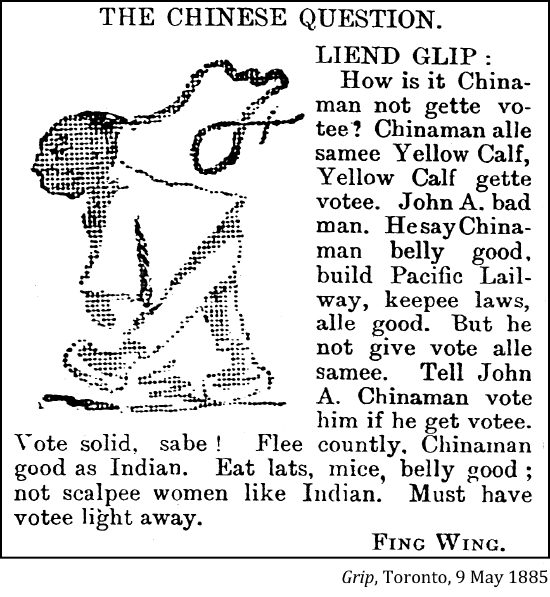
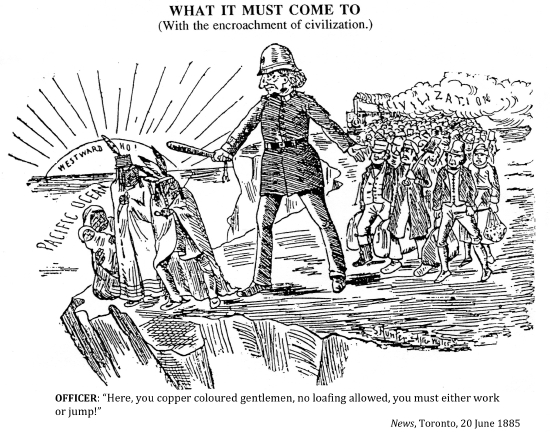
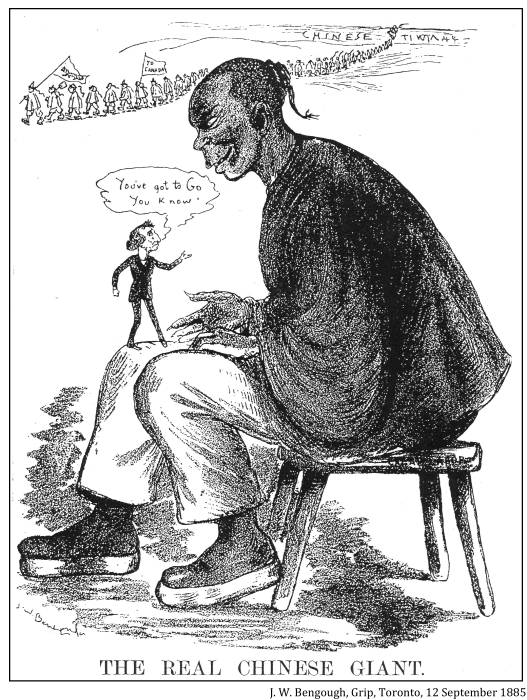
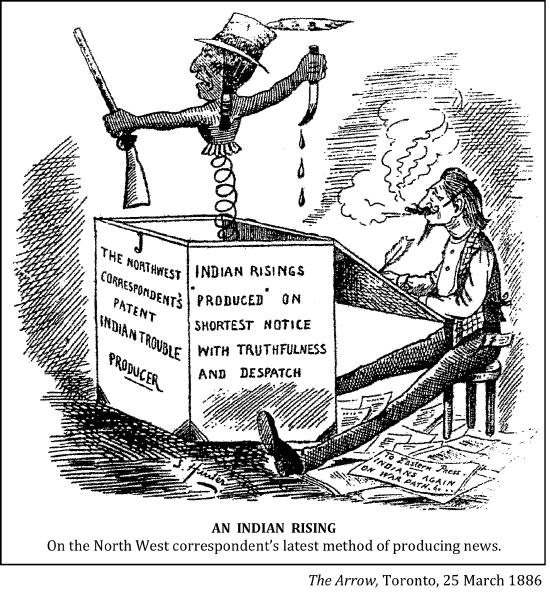
“Science, which excludes Christian morals from its code, tells us that the annihilation of the savage is decreed and carried out by the operation of a law ordaining the survival of the fittest; and that the drunkenness, debauchery, and disease which attack him simultaneously with our appearance are merely the instruments which nature employs in the execution of her remorseless purpose.”
Toronto Mail, "The Condition of the Indians," 3 February 1886 [an example of racist thinking at the time]
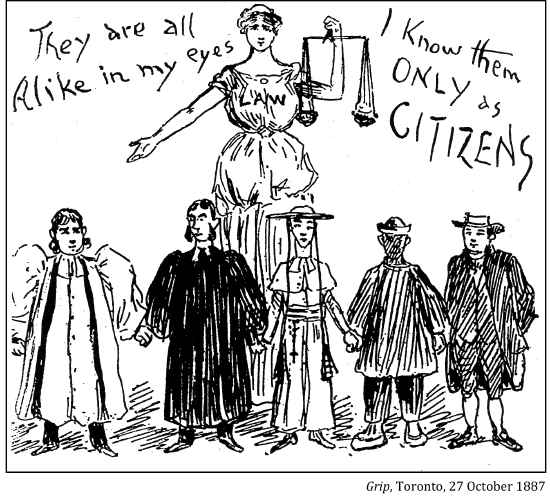
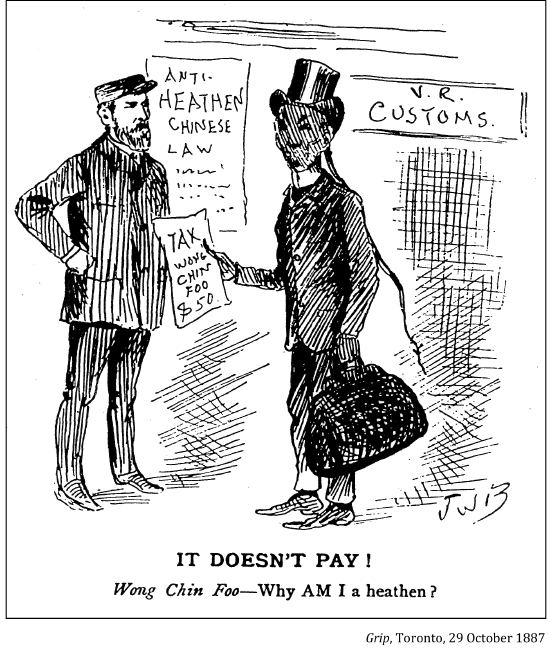
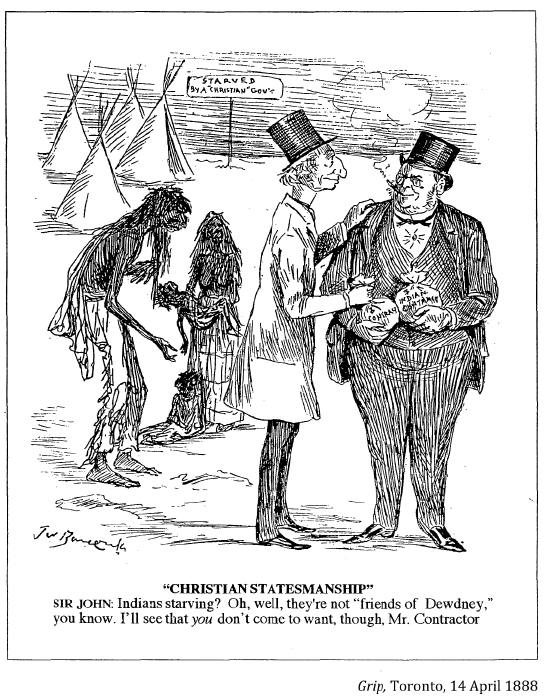


1895, BC Sugar, Courtesy of Brent Axelson
[In 1890 Vancouver City Council supported B. T. Rogers efforts to establish a sugar refinery in the city provided he did not employ any Chinese.]
[1895 – BC disenfranchised Japanese.]
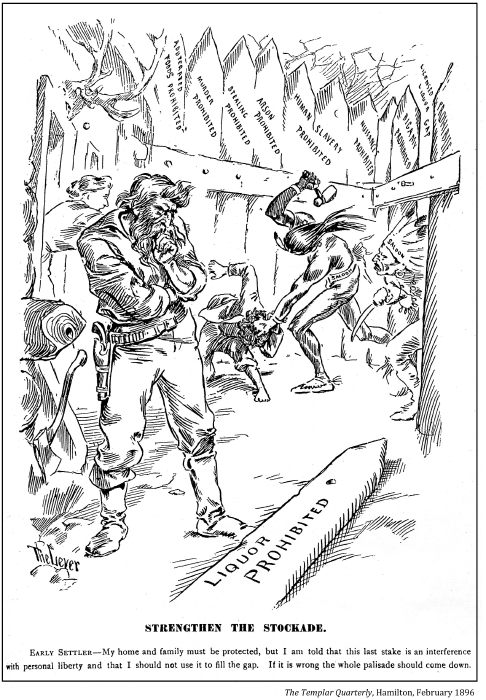
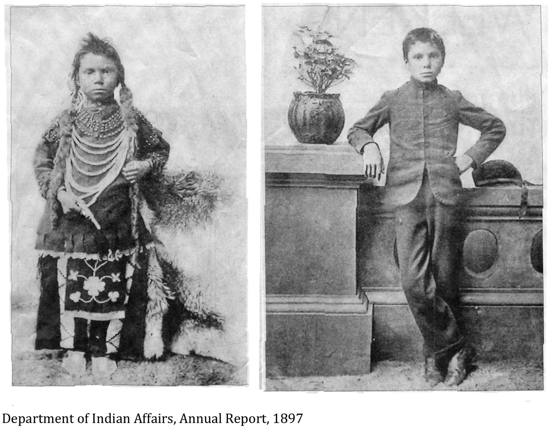
"I have visited in England one of those models of Gothic architecture which the hand of genius, guided by an unerring faith, has molded into a harmonious whole. This cathedral is made of marble, oak and granite. It is the image of the nation I would like to see Canada become. For here, I want the marble to remain the marble; the granite to remain granite; the oak to remain the oak; and out of all these elements I would build a nation great among the nations of the world."
Sir Wilfrid Laurier, 1897?
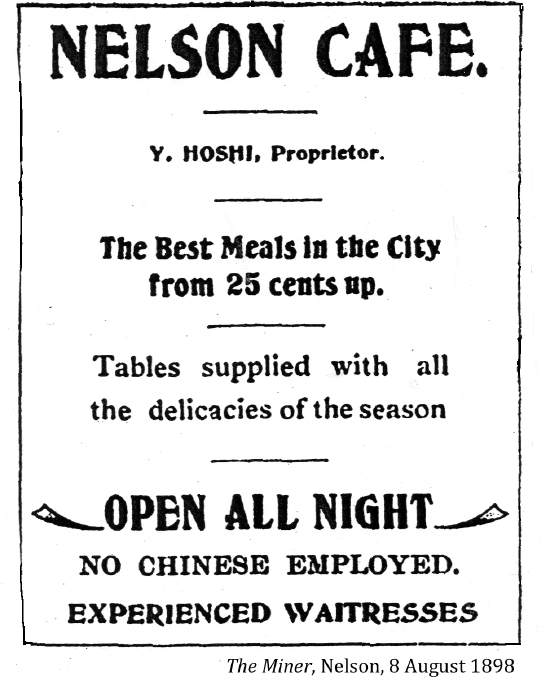
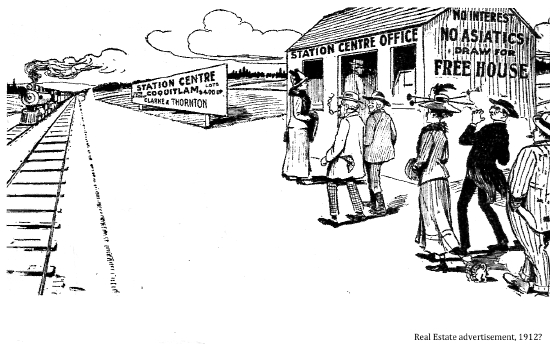
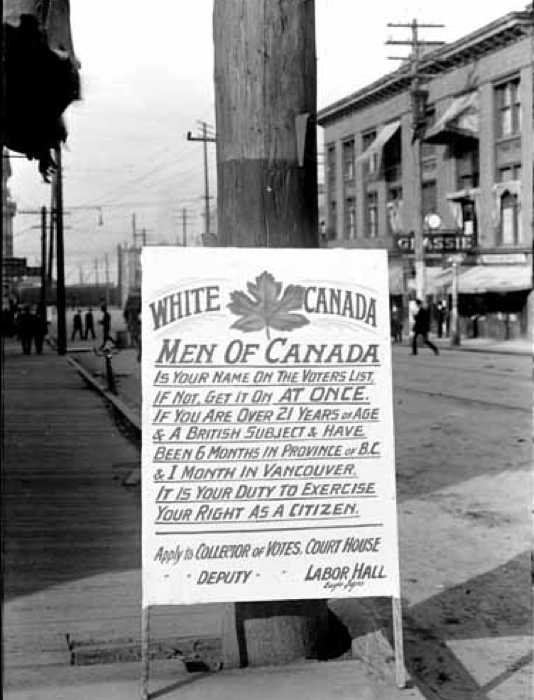
White Canada, Men of Canada ...', with respect to voters list. Philip Timms, VPL 78423
"My countrymen are not only those in whose veins runs the blood of France. My countrymen are all those people, no matter what their race or language, whom the fortune of war, the twists and turns of fate, or their own choice, have brought among us."
Wifrid Laurier, speech, 14 May 1900
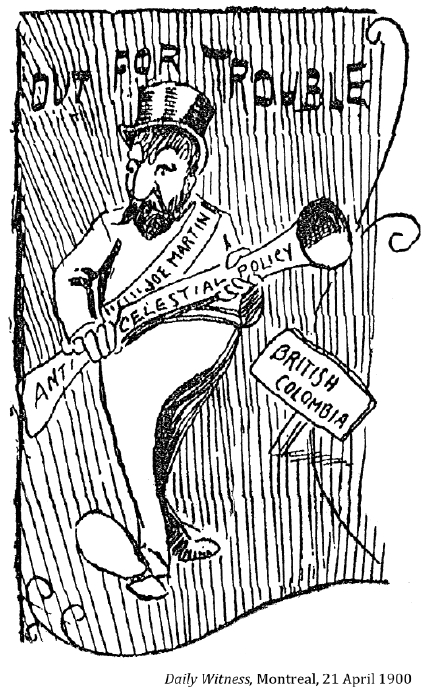
[As Attorney-General of British Columbia Joe Martin passed an Alien Exclusion Act to prevent Chinese from owning mining claims. The federal government disallowed the legislation.]
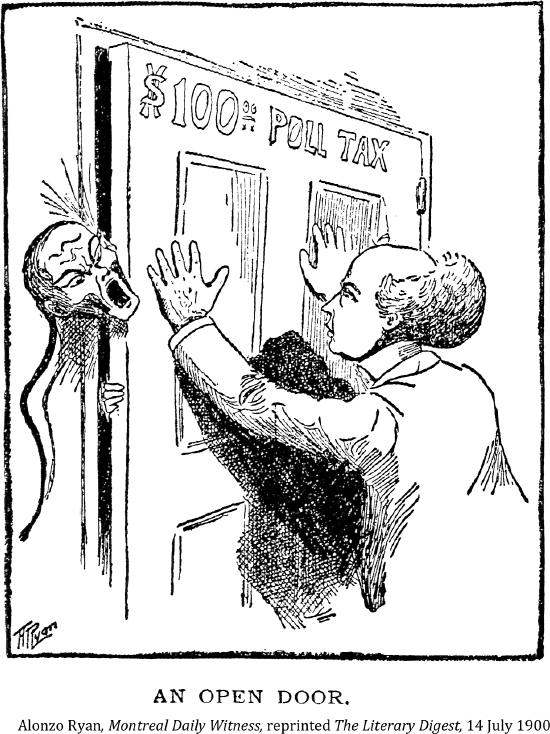
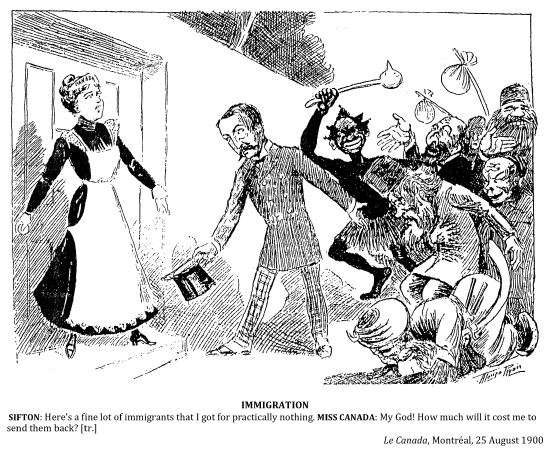
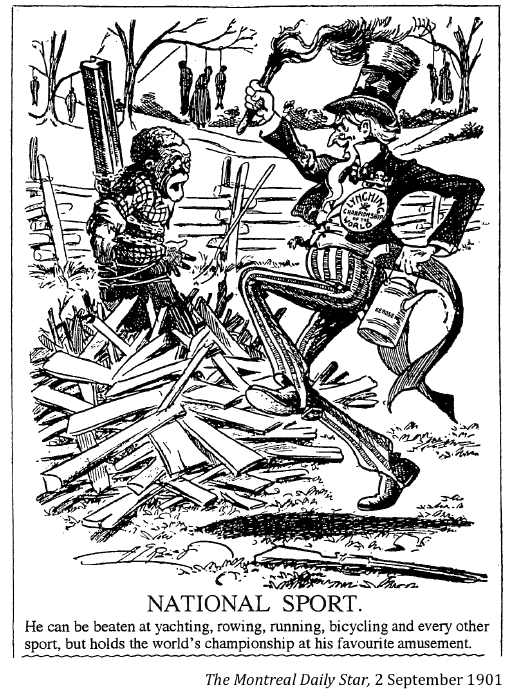
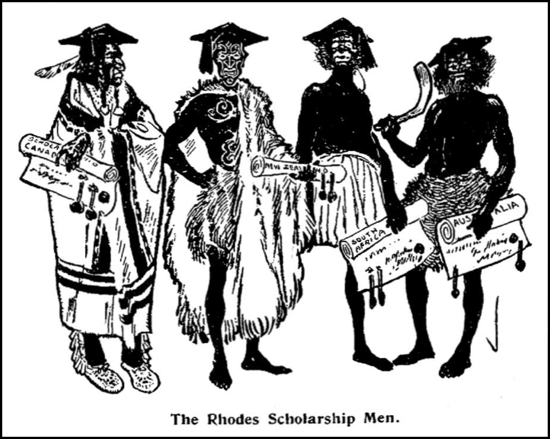
The Moon, Toronto, 30 August 1902



To Canada, Minister of the Interior, Ottawa, 1903
"We cherish . . . British institutions which accord equal rights to all, and under which every man, regardless of origin, creed or race, is sure to find an equal share of liberty, justice, equality and sunshine."
Sir Wilfrid Laurier, November 1905 [comment made on Jewish massacres in Russia]
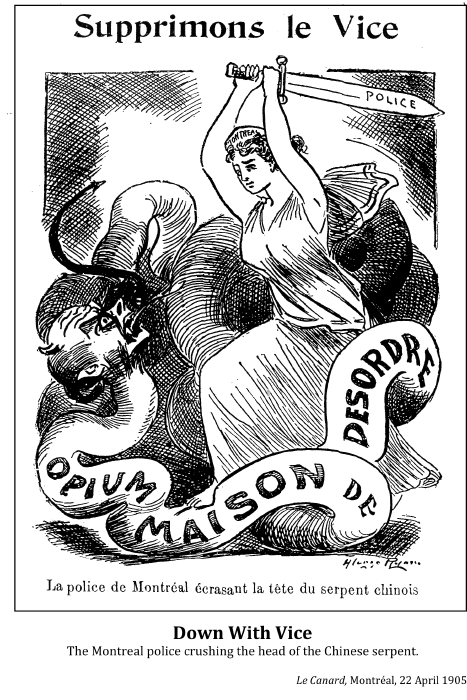
"From many people strength."
Saskatchewan motto, 26 August 1906
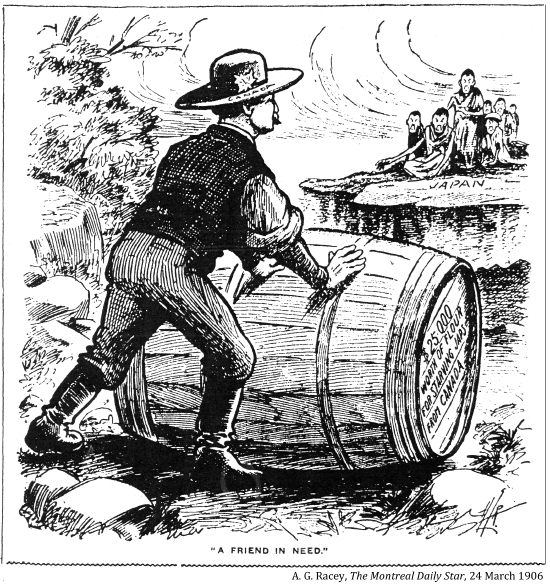
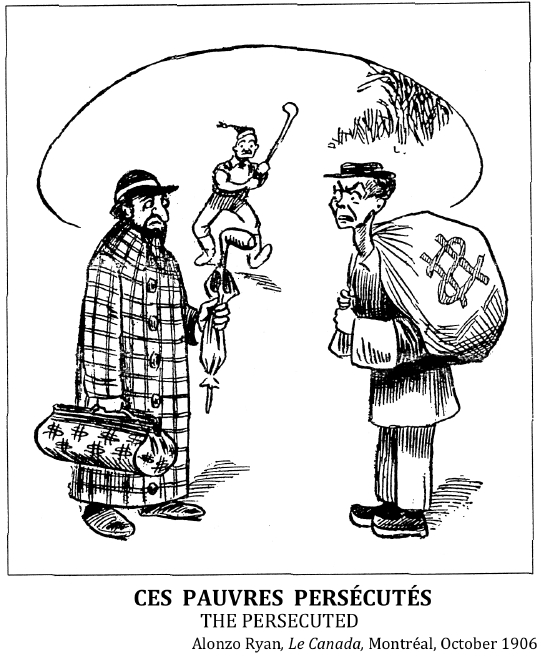

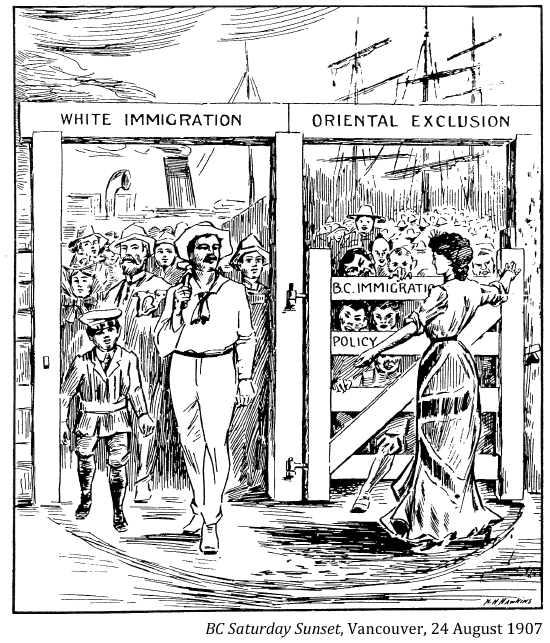
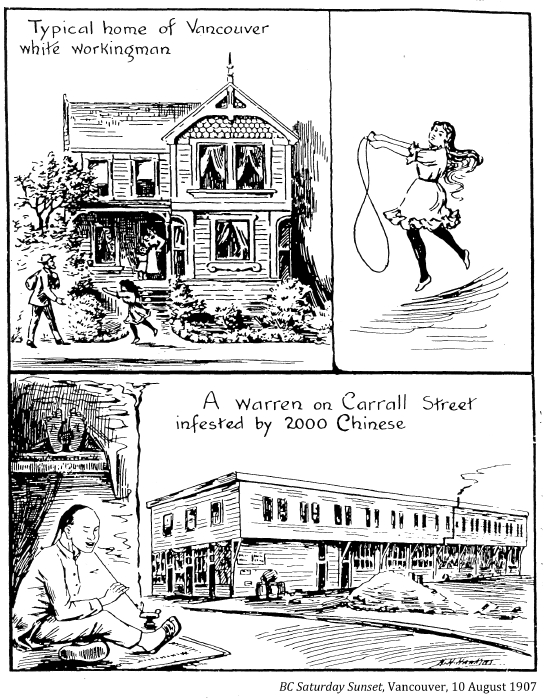
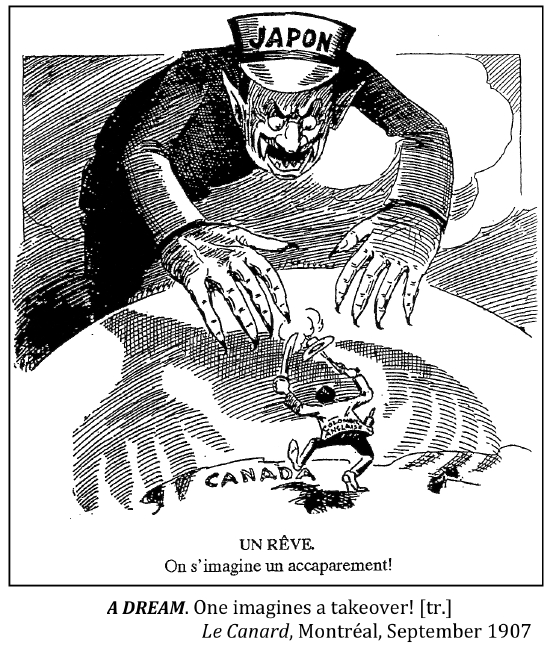
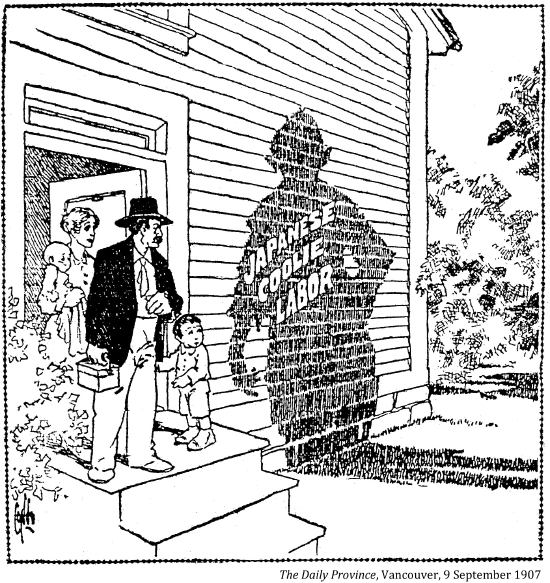
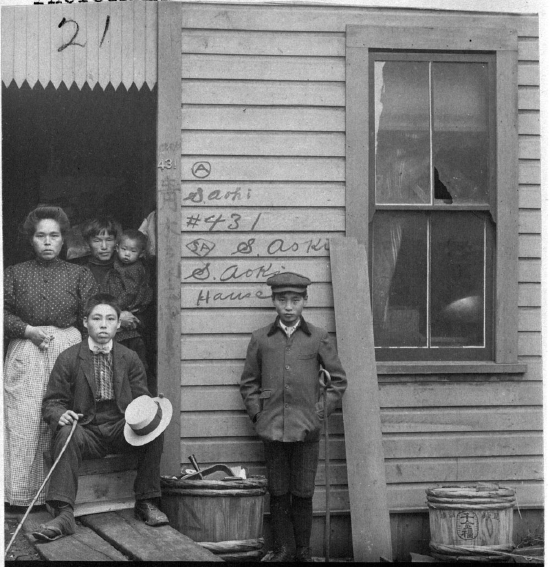
Damage to property of Japanese residents (Nishimura Masuya, Grocer, at 130 Powell Rd. S.) (Vancouver, B.C.). LAC C-014118, Lyon Mackenzie King, 8-9 September 1907

Sajiro Aoki, 431 Powell Street, Vancouver, B.C. LAC PA-066890, William Lyon Mackenzie King, 8-9 September 1907
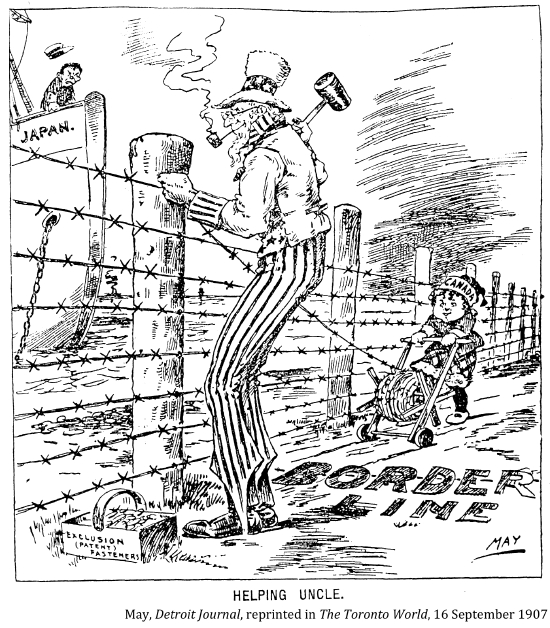
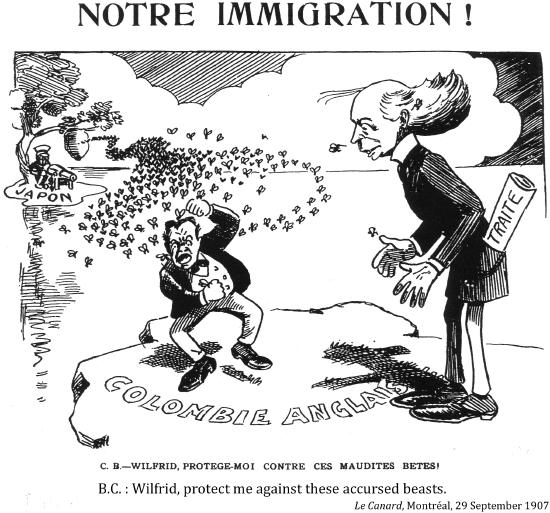
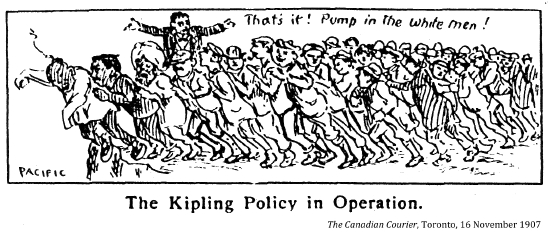
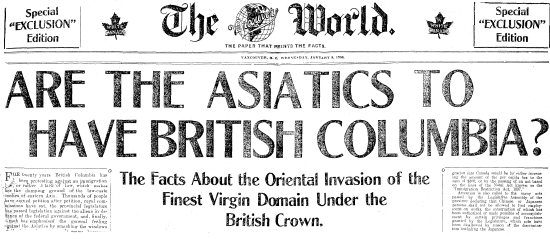
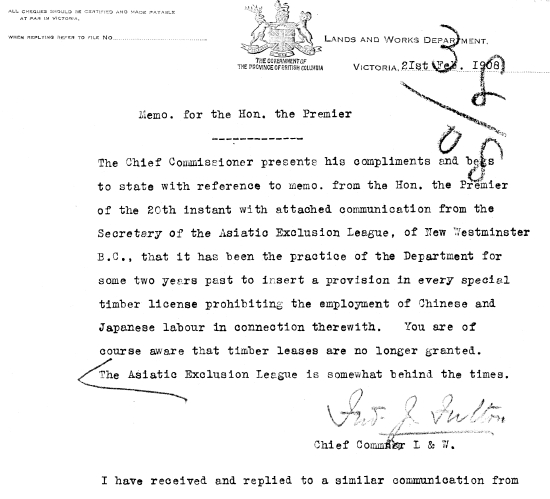
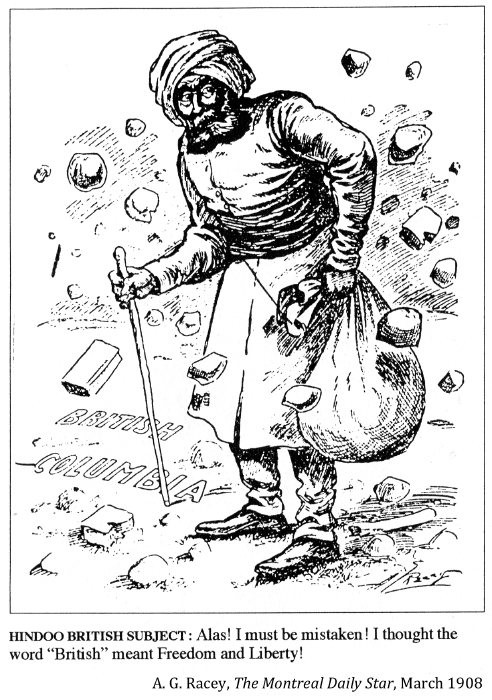
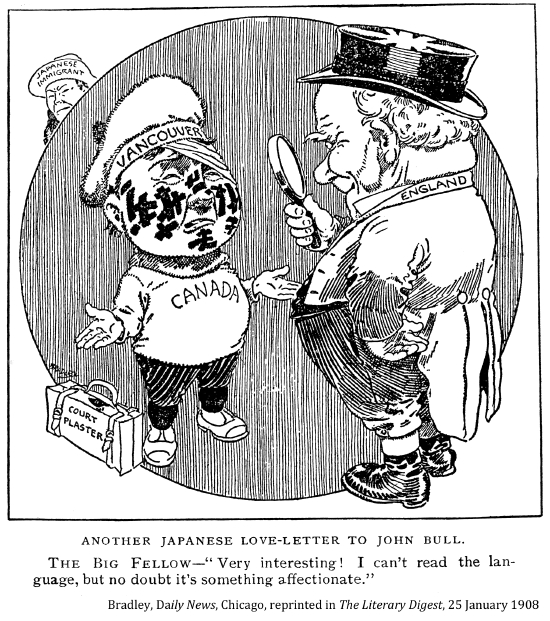
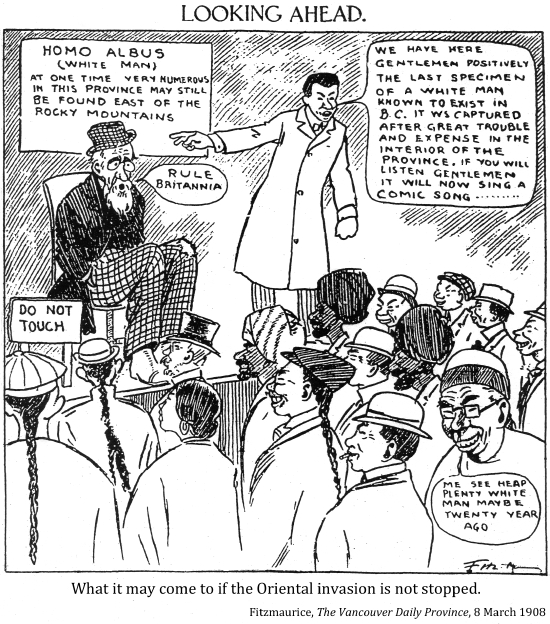
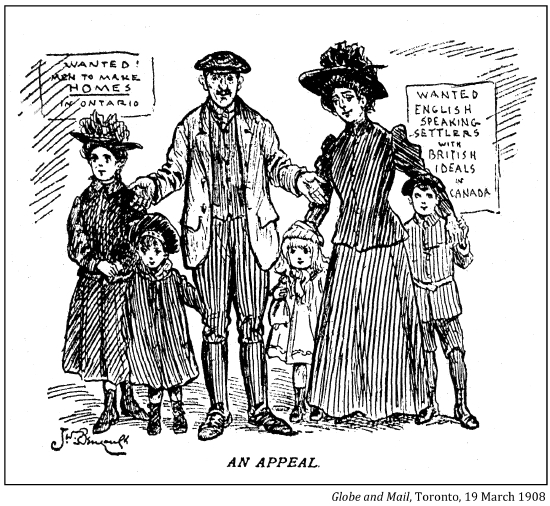
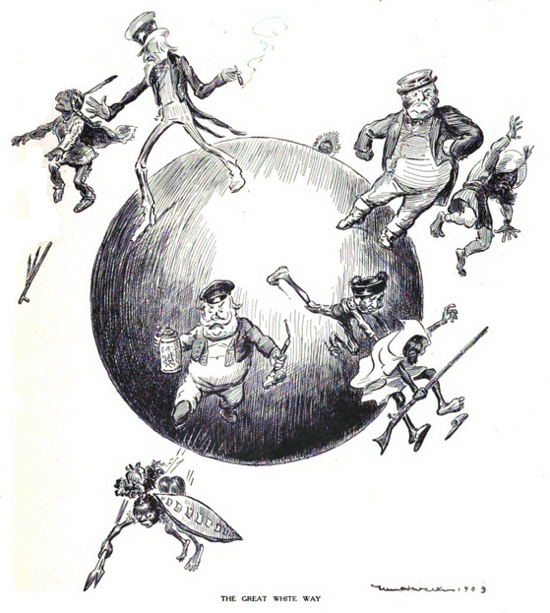
Life, New York, 4 November 1909
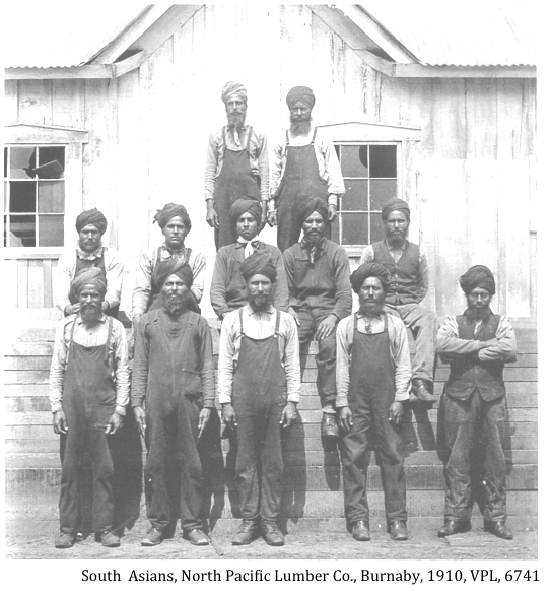
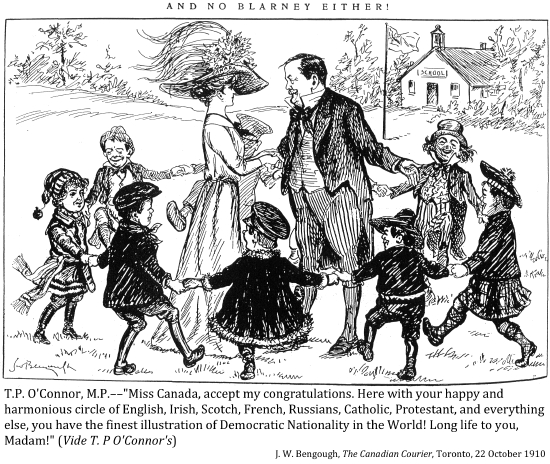

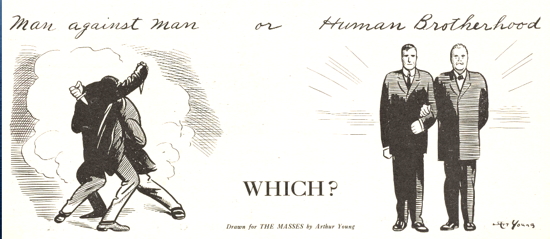
Art Young, The Masses, New York, June 1911
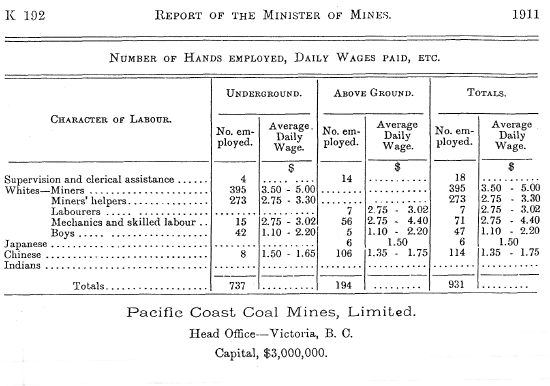
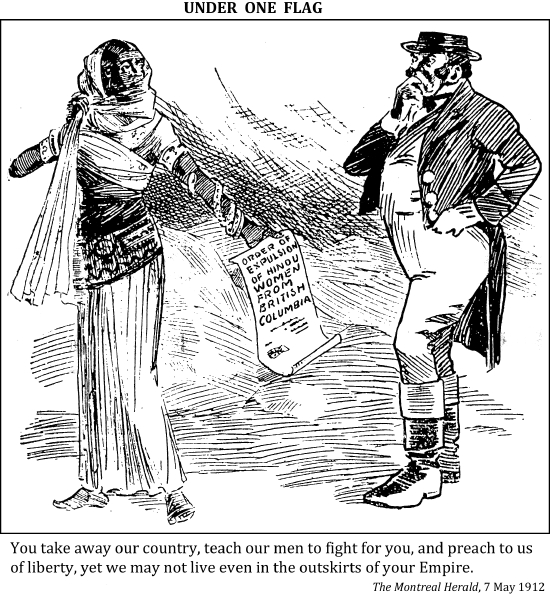
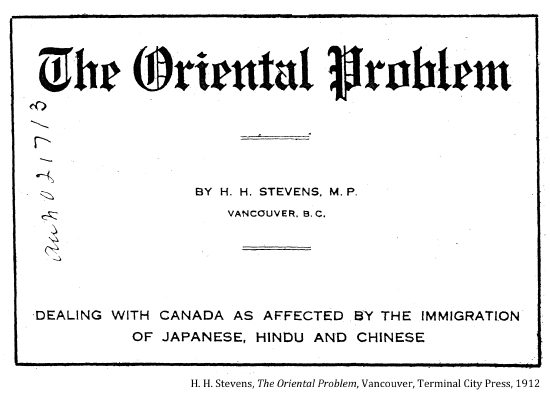
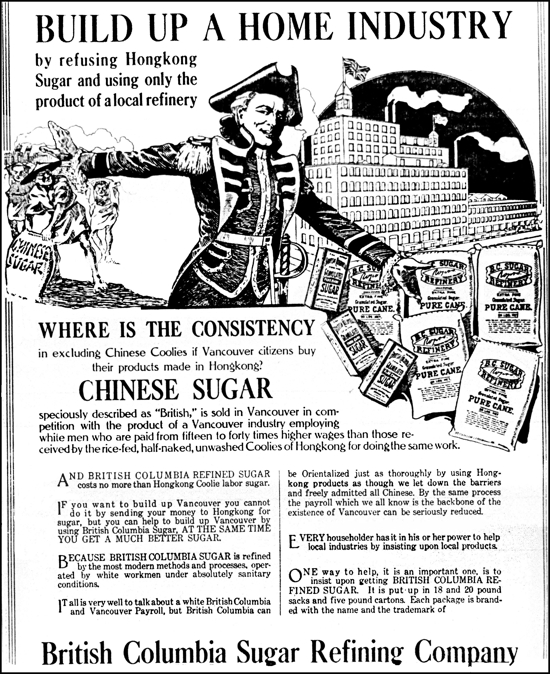
"The first and most imperative condition is that the immigrant shall give this country his first allegiance . . . unless he is prepared to be a Canadian first . . . he is in this country under false pretence. He should pack his trunk and go back to where he belongs. He is not wanted here."
John W. Dafoe, Winnipeg Free Press, 1913
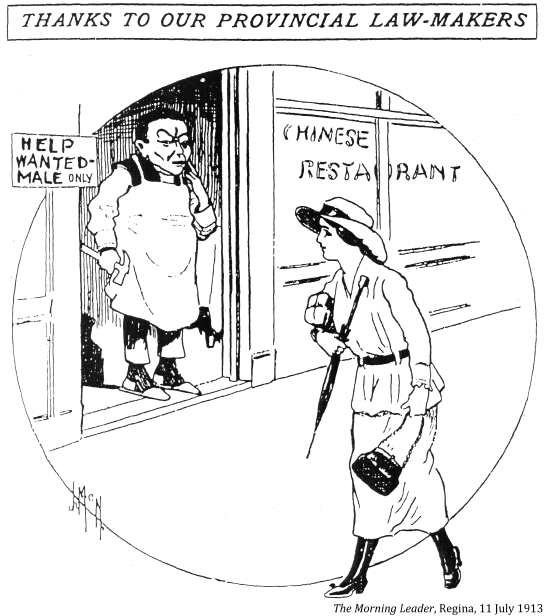
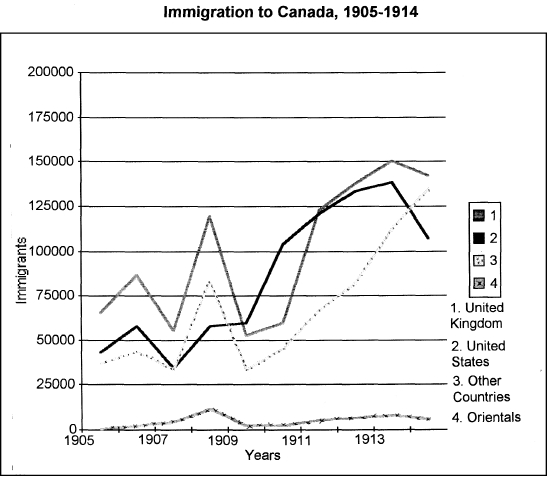
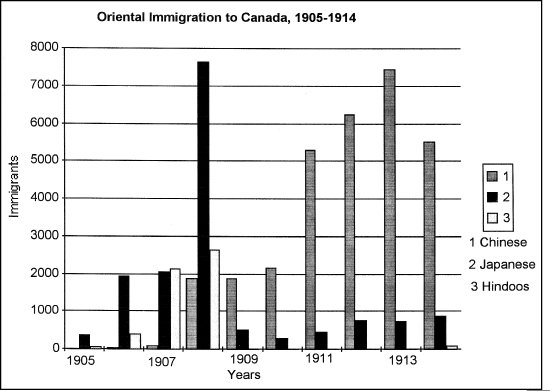
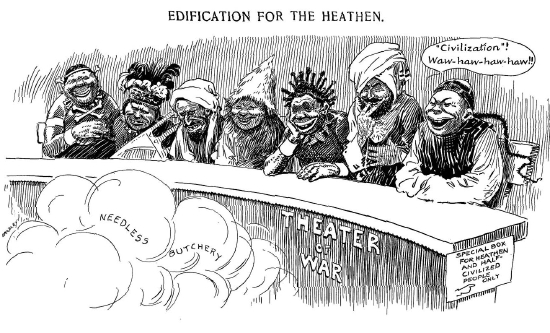
Edification for the heathen, Luther D. Bradley, Chicago Daily News, 1914
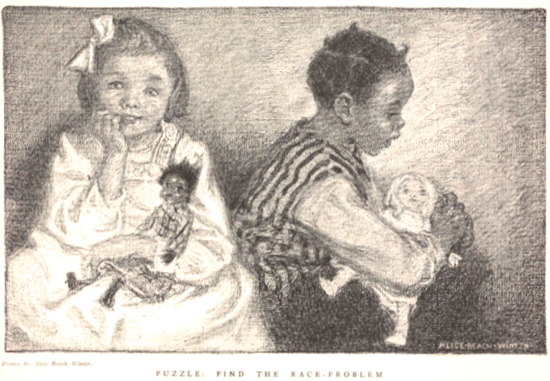
New Masses, New York, March 1933
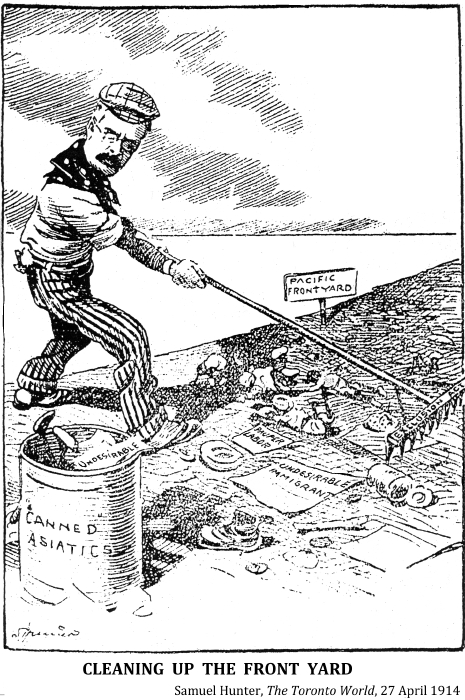
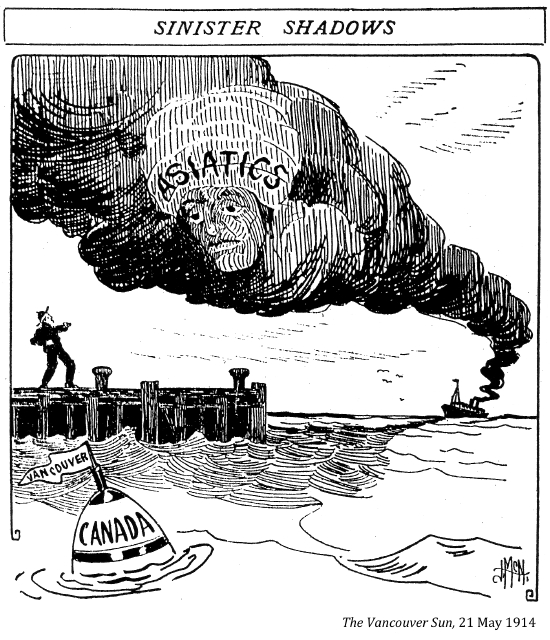
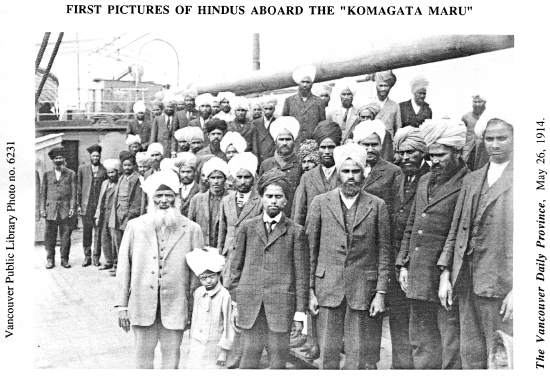
Link to "Komagata Maru essay"
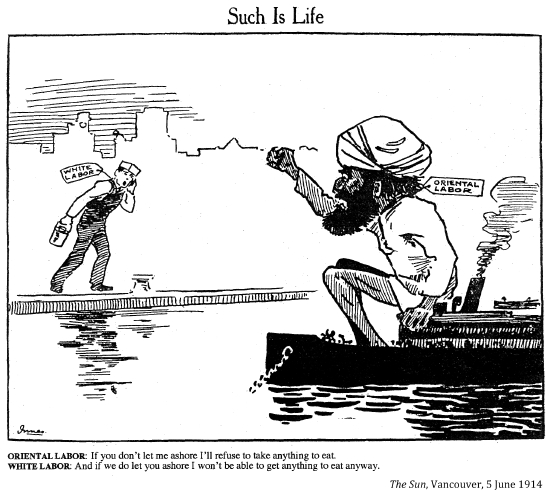
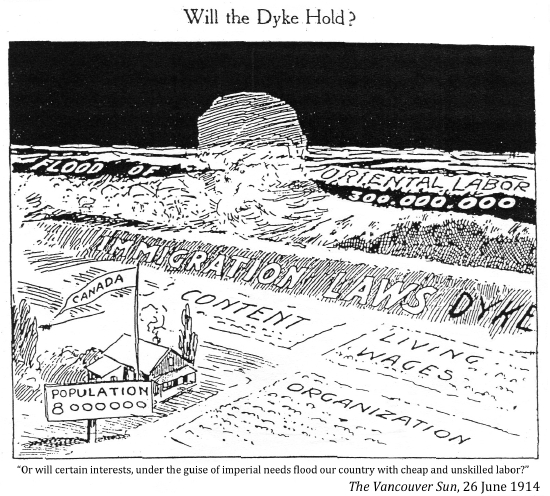
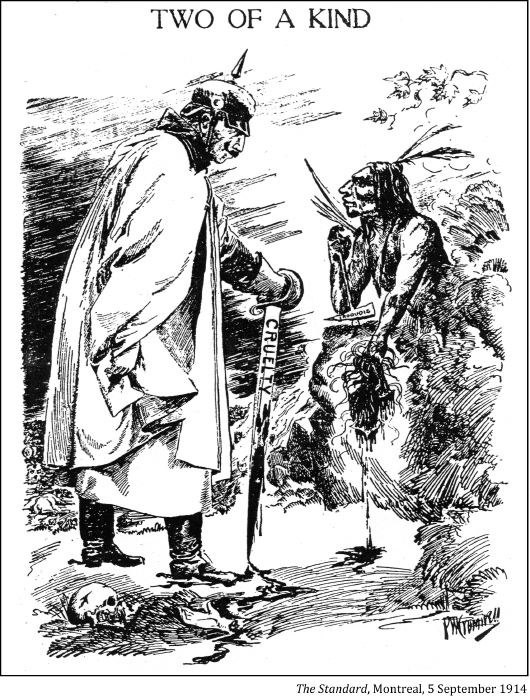
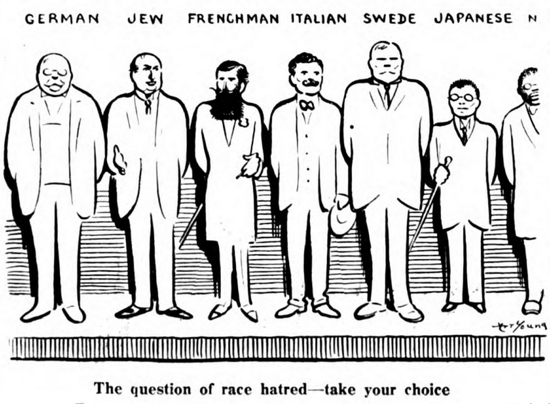
Art Young, Metropolitan, New York, November 1914
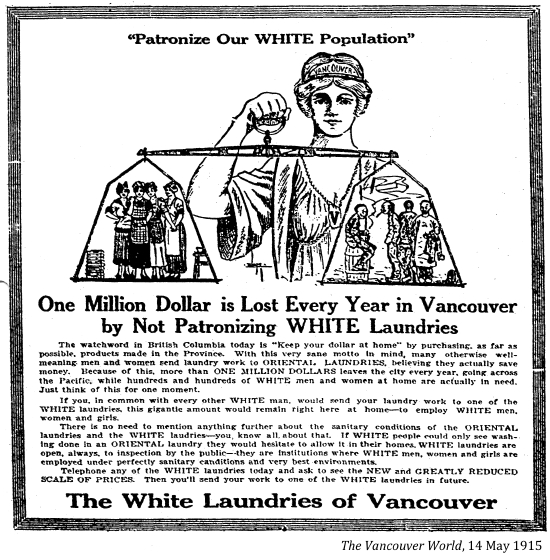

CANADIAN PATRIOTIC FUND, 1916. « Moo-che-we-in-es. Pale Face, My skin is dark but my heart is white for I also give to Canadian patriotic fund »,LAC no d'acc 1989-378-1
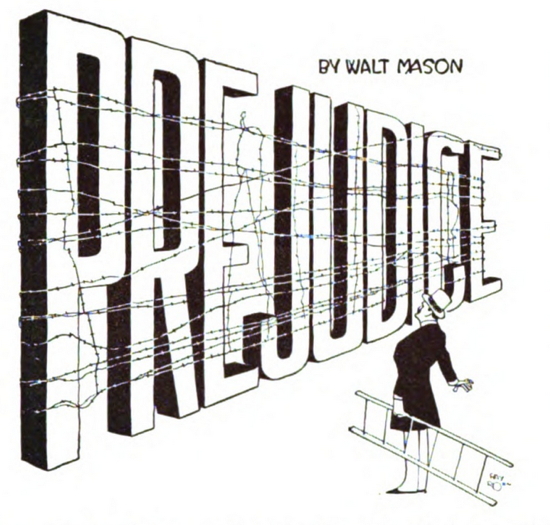
Judge, New York, 22 July 1916
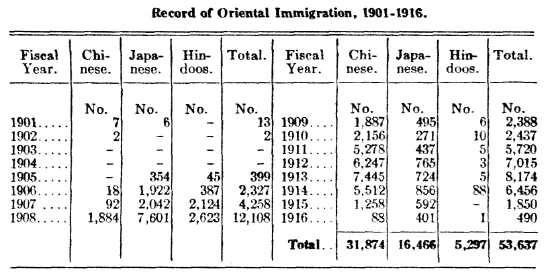
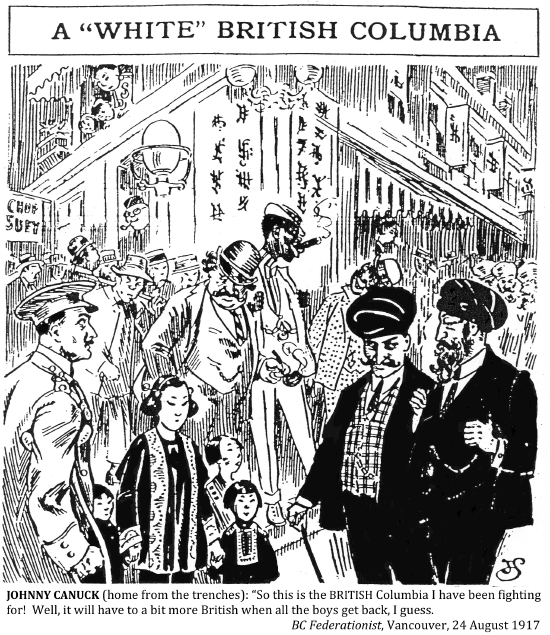
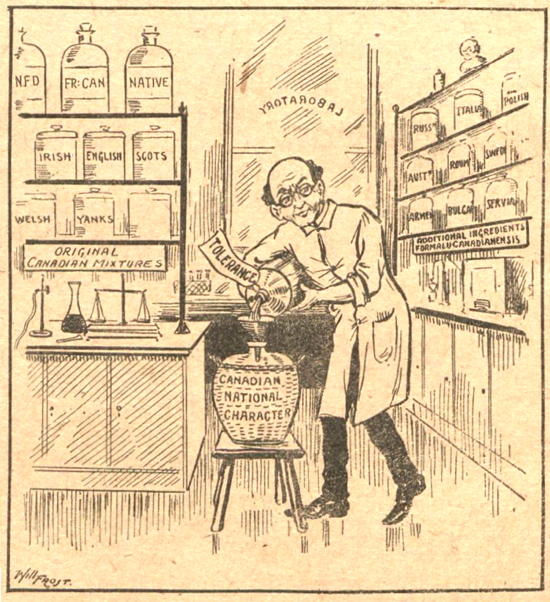
The Canadian Courier, Toronto, 1 September 1917

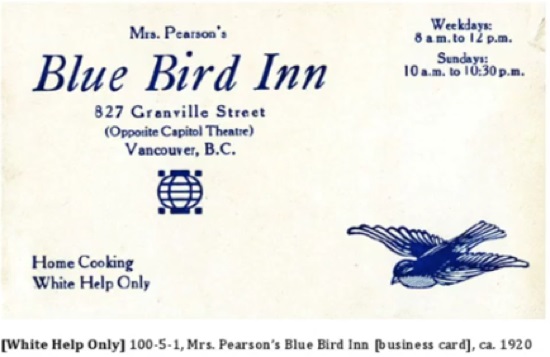
Henry Yu, A Seat at the Table, 1920
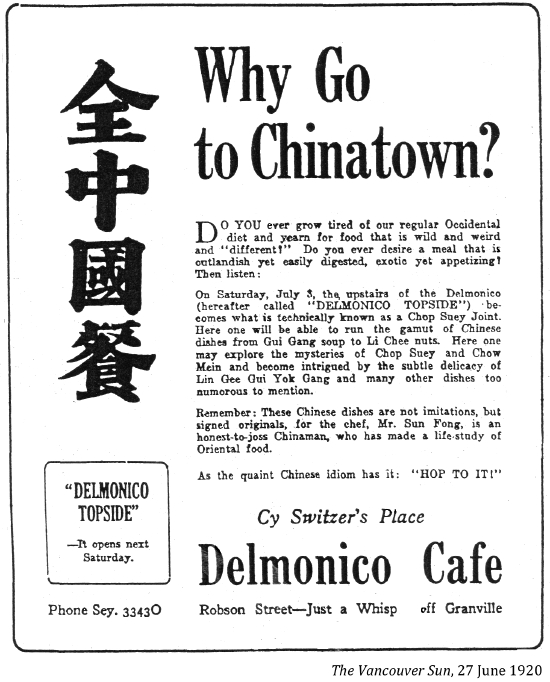
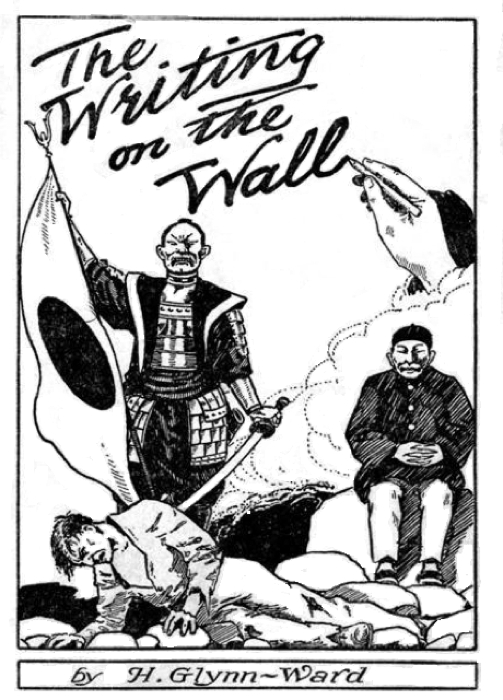
Novel 1921
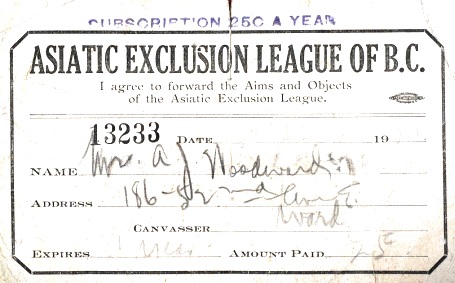
The Asiatic Exclusion League claimed a membership of 40,000, Membership Card, 1921
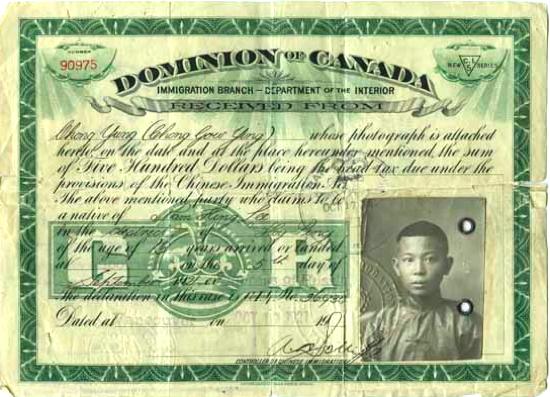
VPL 88382
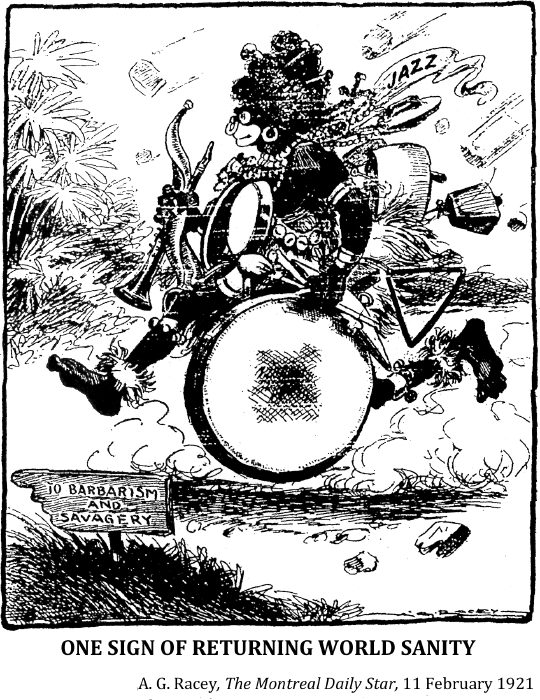

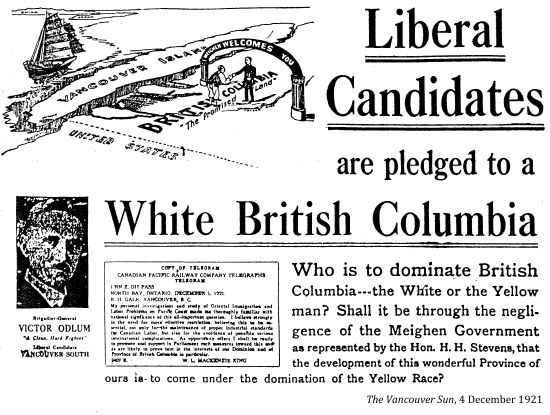

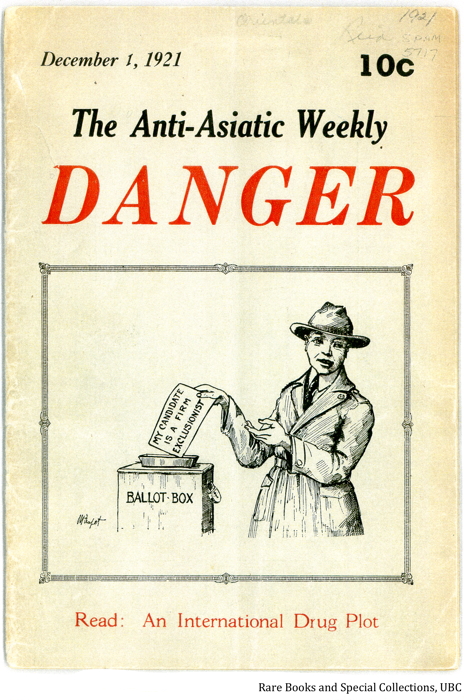
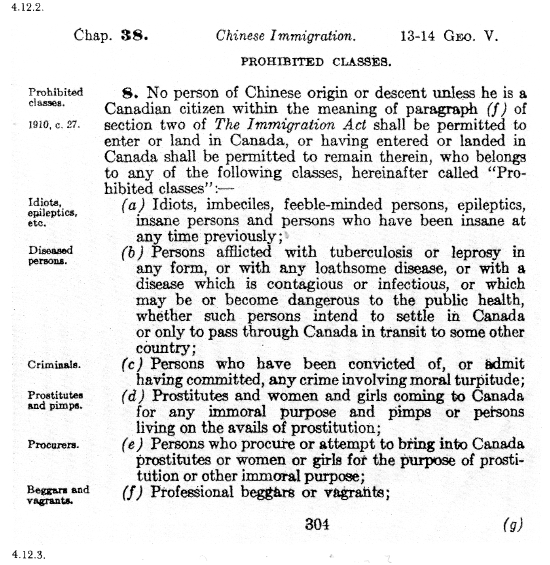
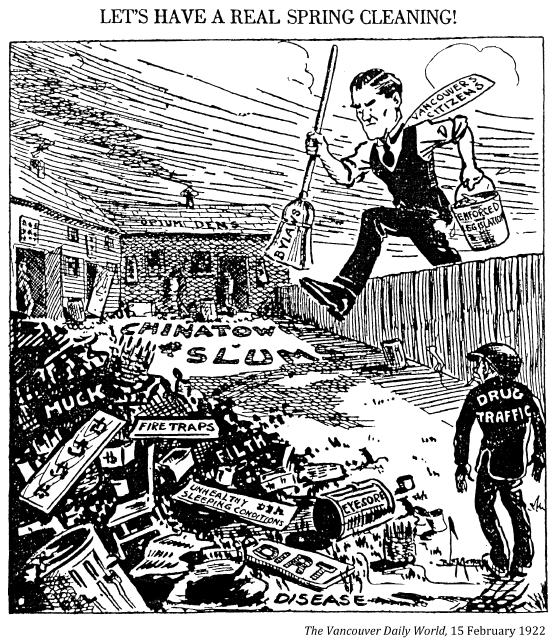
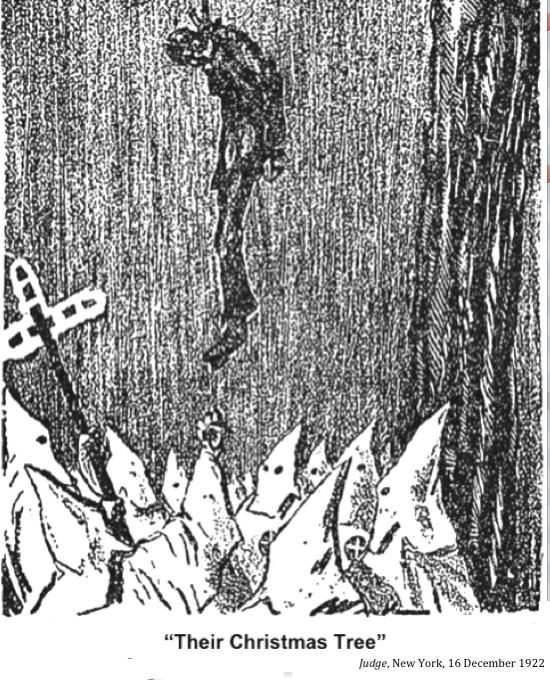
"It has been a proud boast of the United Farmer's Organization that in it people of every race, colour and creed can meet on terms of perfect equality."
Agnes Macphail
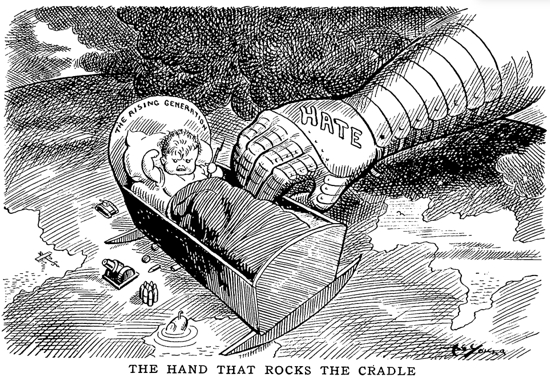
Art Young, Life, New York, September 1923
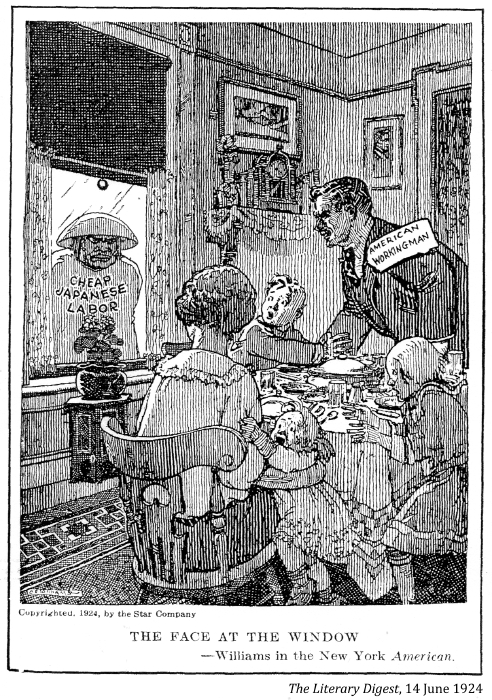
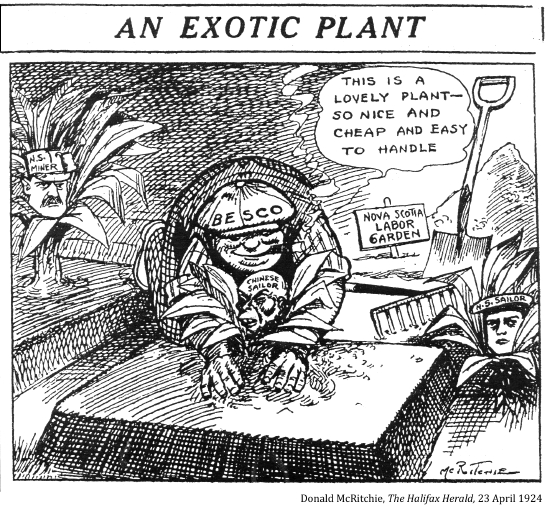
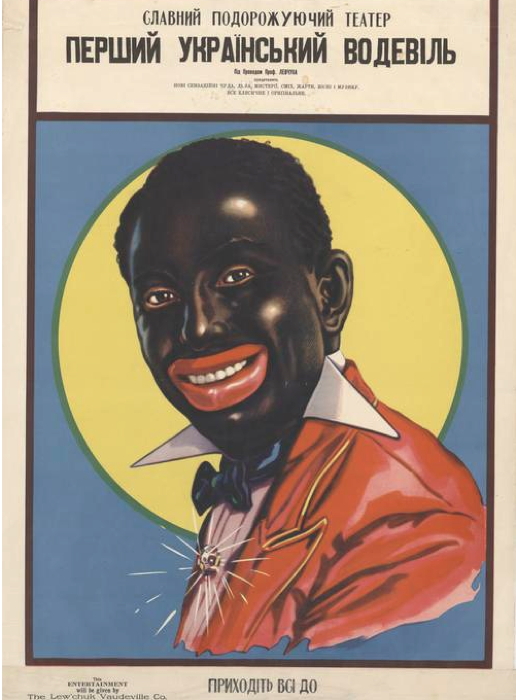
Kew-chuck Vaudeville poster in Ukrainian, 1925?, University Library, University of Saskatchewan, spcoll;8144
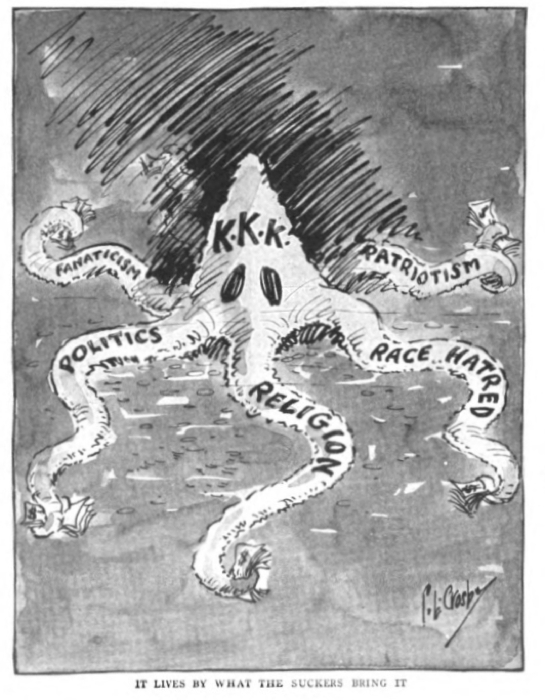
Life, New York, 11 December 1924
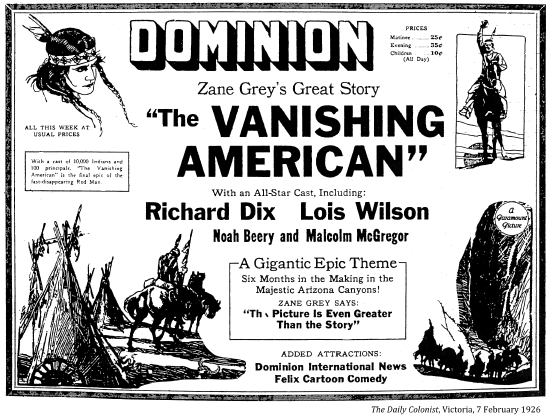
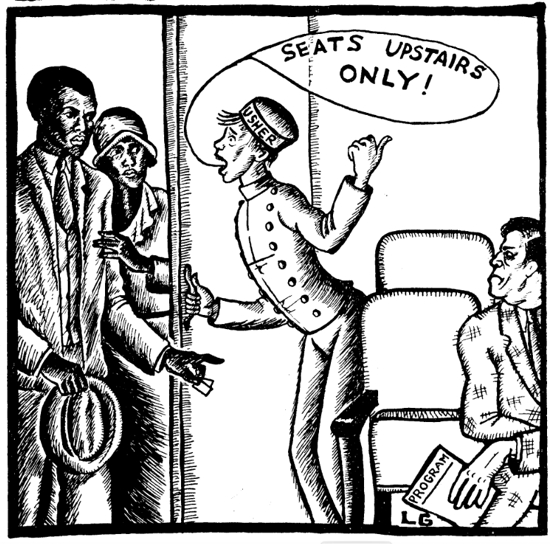
The Way It's Done
Lydia Gibson,The Daily Worker, Chicago, 31 July 1926
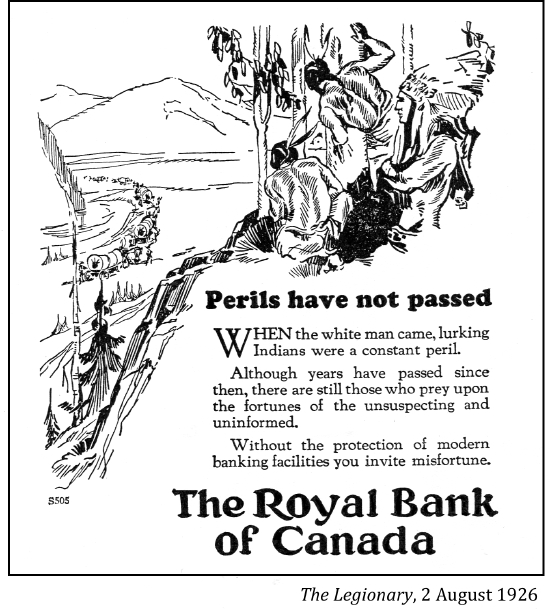

Ku Klux Klan, 1927 John Boyd, LAC PA-087900
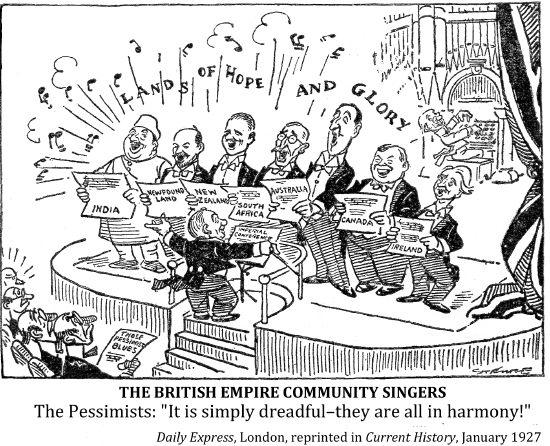
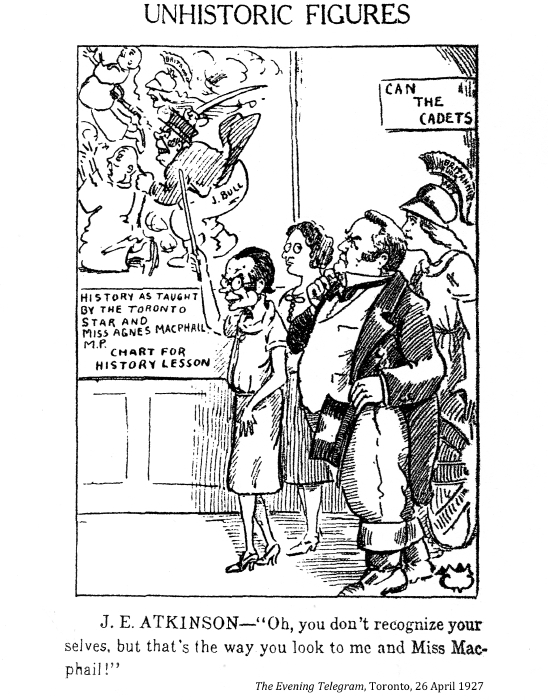
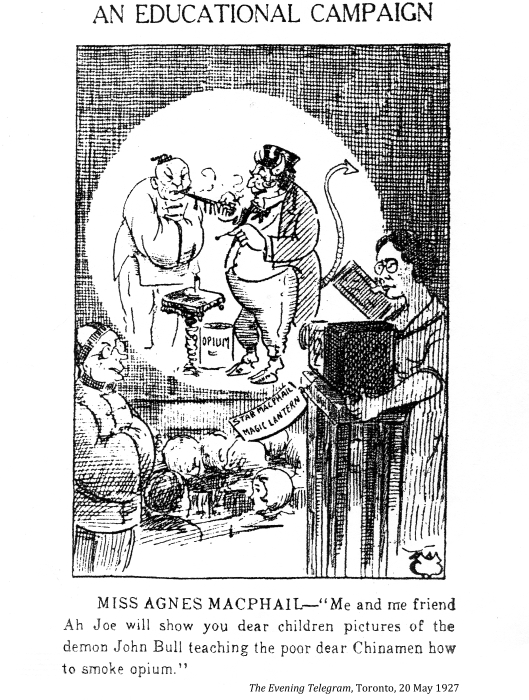
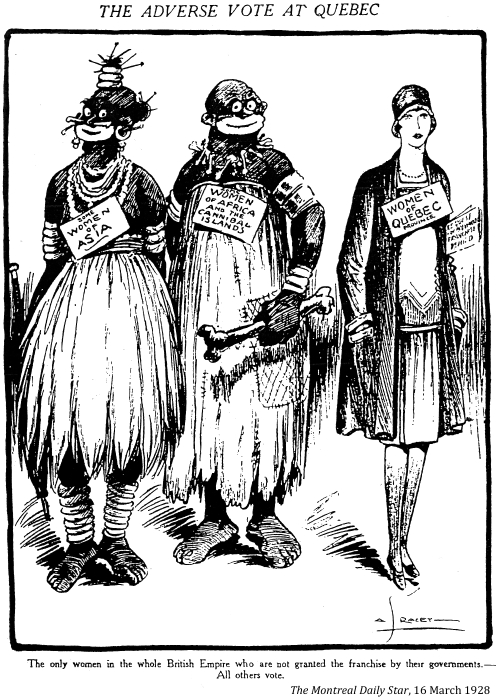
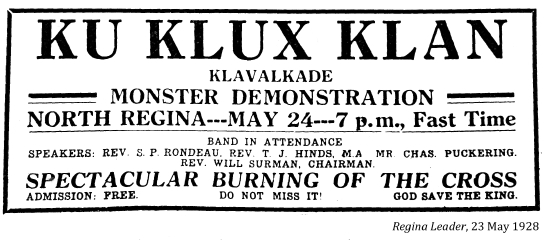
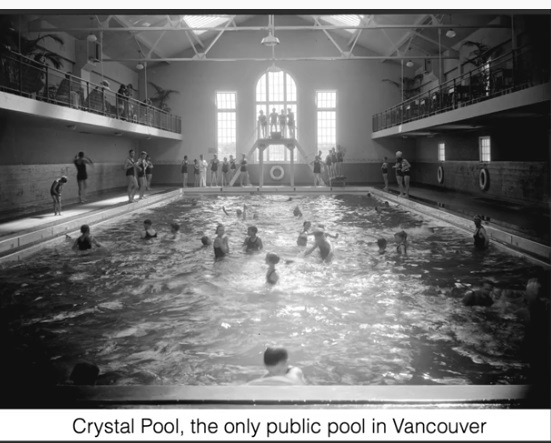
Henry Yu, A Seat at the Table, 1928 – 1945
[Chinese were barred from the only swimming pool in Vancouver, except for one day a week from 1928 until 1945]
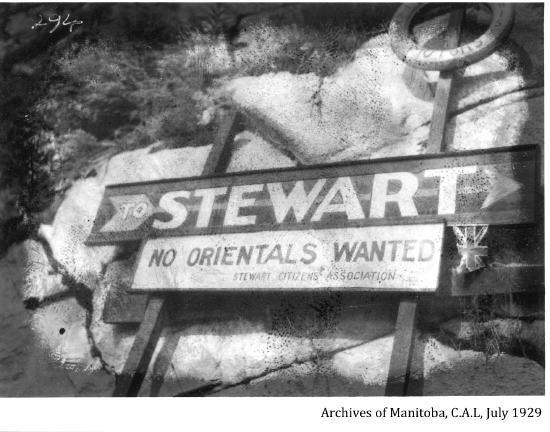
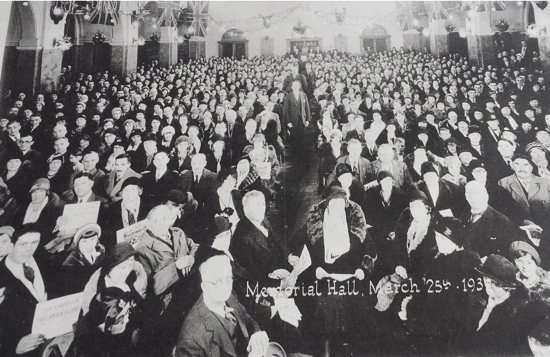
Edmonton Mayor Dan Knott pictured at 1931 Ku Klux Klan convention, Royal Canadian Legion's Memorial Hall, 25 March 1931, Unknown author, Provincial Archives of Alberta reference code BL 102, CC BY-SA 4.0
<https://creativecommons.org/licenses/by-sa/4.0>, via Wikimedia Commons
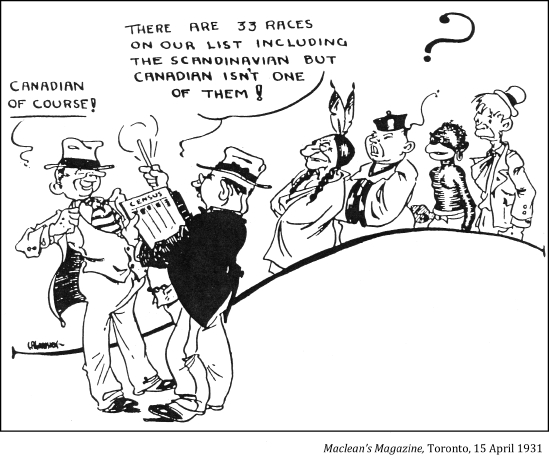
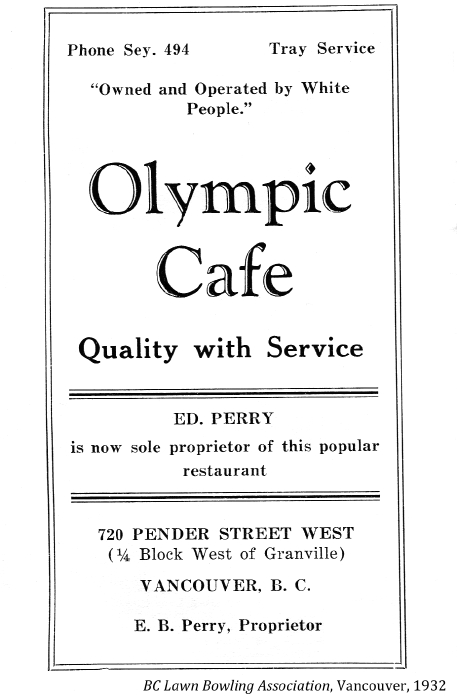
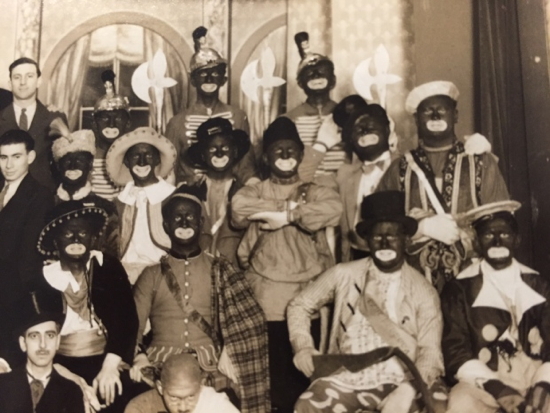
The Montreal YMHA Minstrel Show "Razin a Racket", Jewish Public Library Archives, February 1934
[Blackface minstrel shows were common in Canada until the 1960s. They ended after Black community members campaigned against them.]
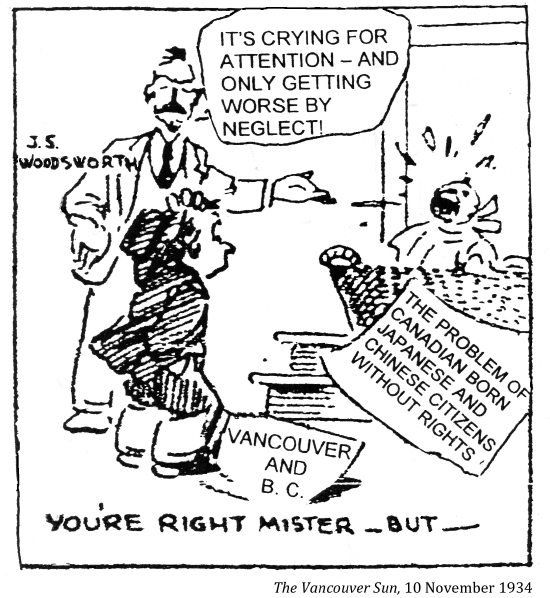
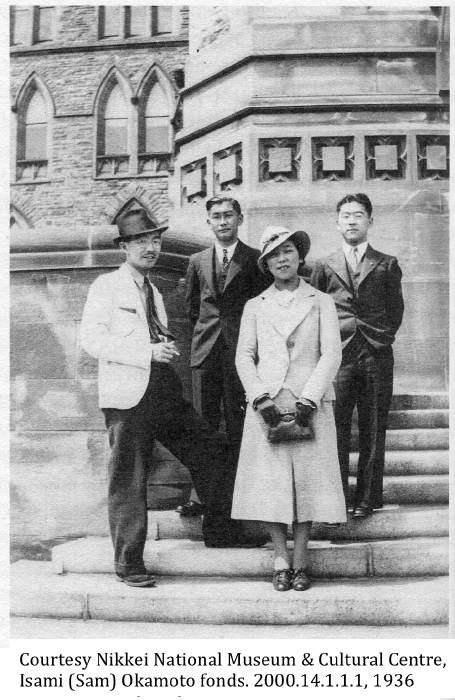
[Vancouver teacher Hideko Hyodo (the woman) was one of three Japanese Canadians who spoke in favour of enfranchisement at a federal Special Committee on Elections and Franchise Acts in 1936]
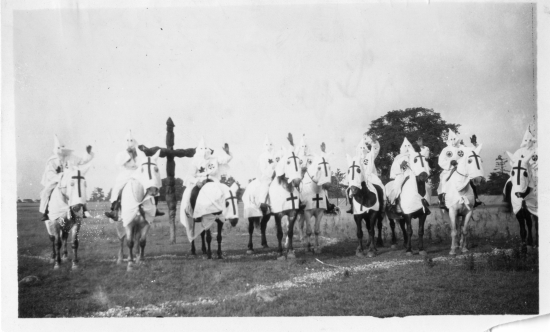
Hooded members of the Ku Klux Klan sitting on hooded horses next to a cross near Belleville, Ontario., 1 January 1935, Hastings County Archives, Community Archives, Public domain, via Wikimedia Commons
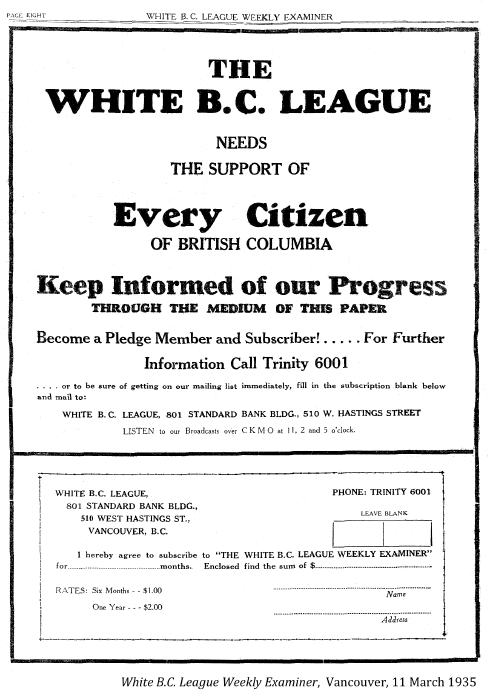
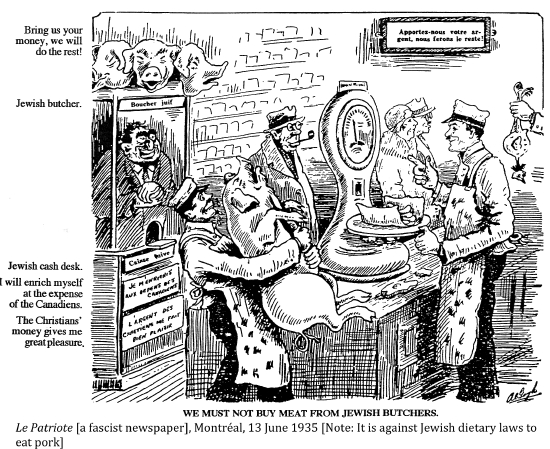
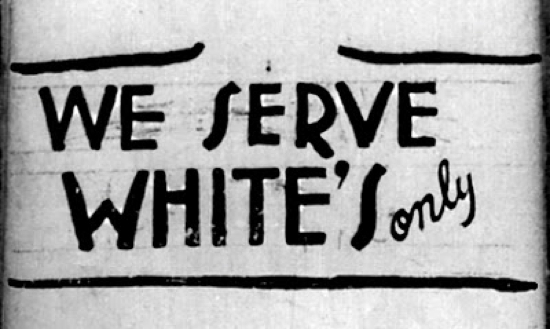
Google "Fred Christie discrimination" for more information, 1936
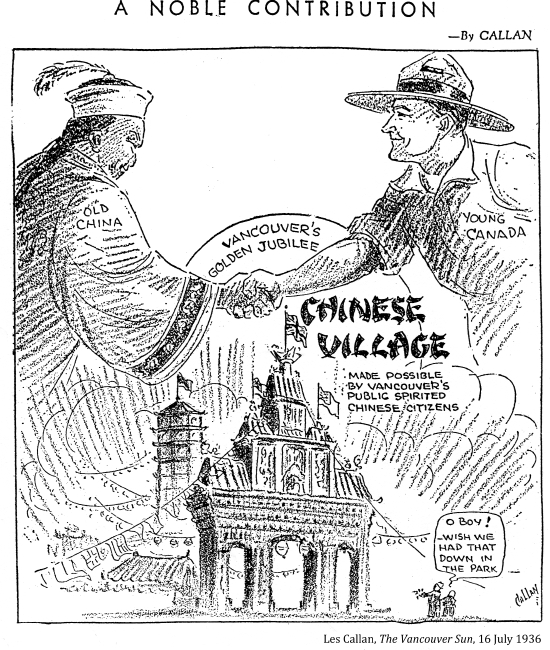
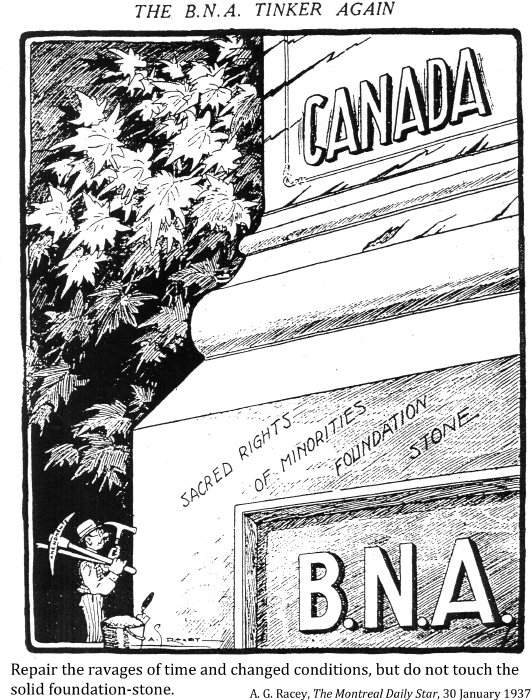
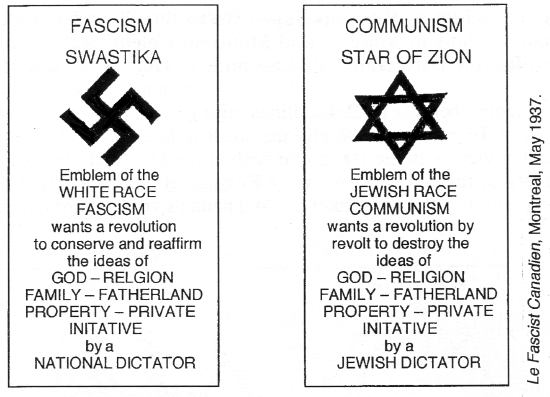
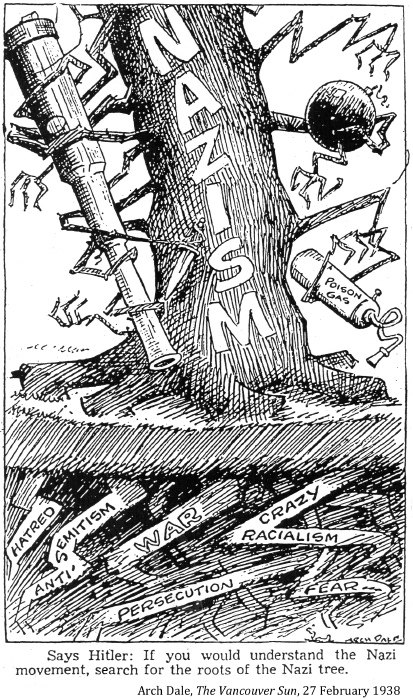
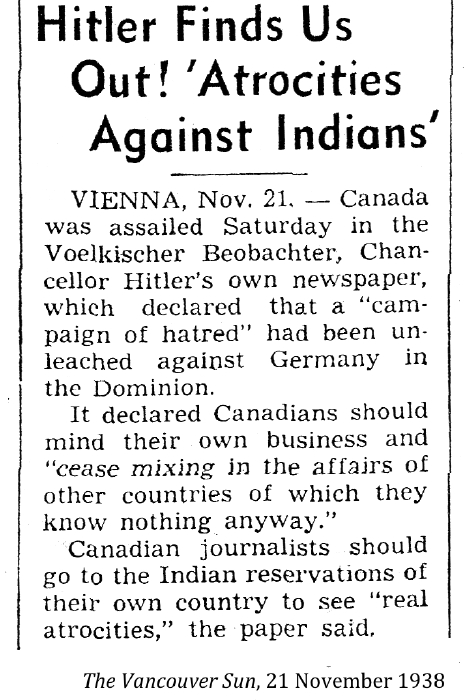
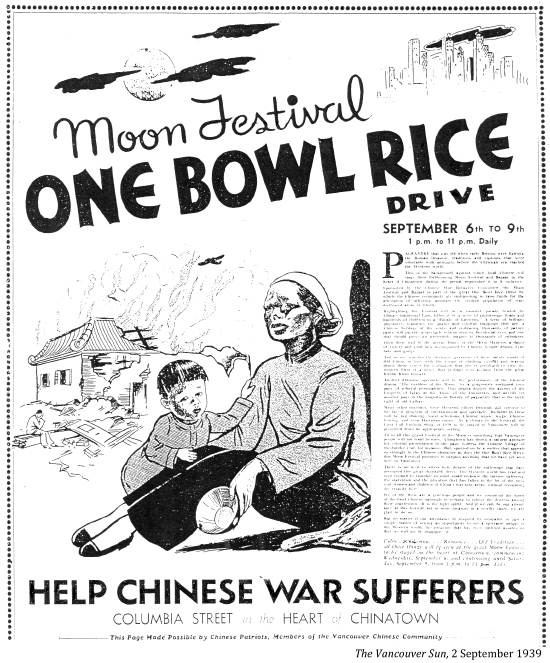
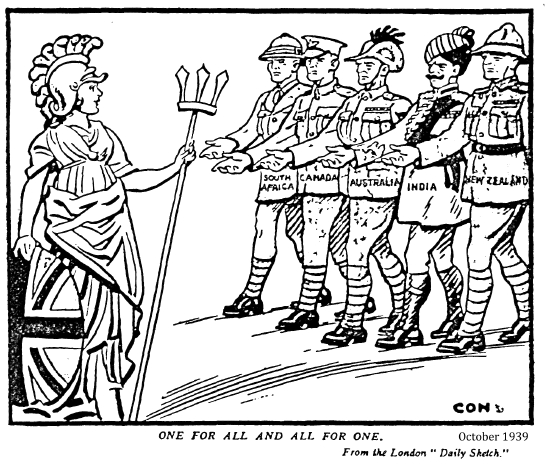
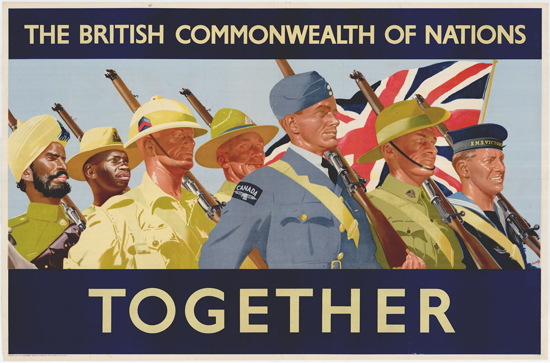
The British Commonwealth of Nations Together, The group includes (from left to right): a soldier from India, a soldier from East Africa, a soldier from South Africa, a soldier from New Zealand, an airman from Canada, a soldier from Australia, and a sailor from the Royal Navy. LAC, Acc. No. 1983-28-1523, Luntz, 1941
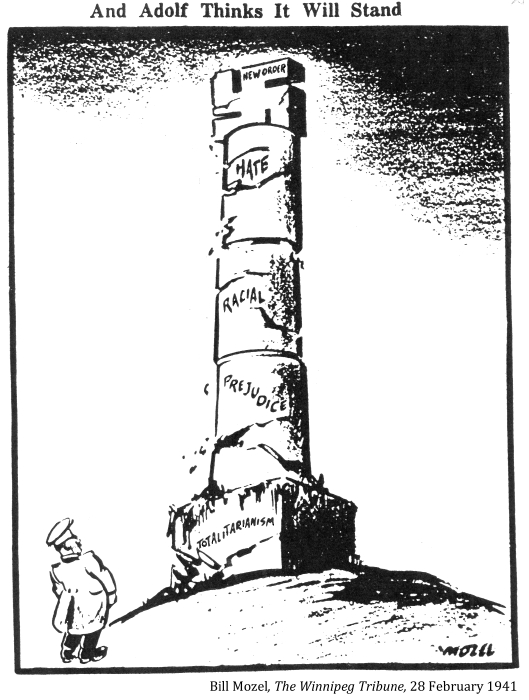
WHAT WE ARE FIGHTING FOR
"Liberty for All Canadians Knows No Bar of Race, Color"
Perhaps at this time it is a good thing for us to remember what we Canadians are fighting for…
We are fighting to maintain the liberty we now have and for the opportunity of broadening and deepening our conception of that liberty in the future…
Canadian liberty extends to us all, whatever may be the color of our skin, our racial stock, our creeds. All citizens of Canada, even though their skin be yellow, are the children of liberty…
To those who suggest that we select one group of Canadians, deprive them of their freedom, shuttle them like cattle from their homes to distant parts, we ask, is it for this we are fighting?
Dennis Murphy, Jr. The Vancouver Daily Province, 3 February 1942
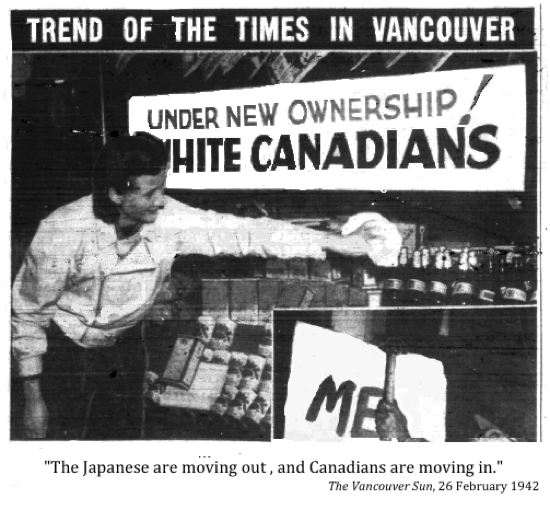
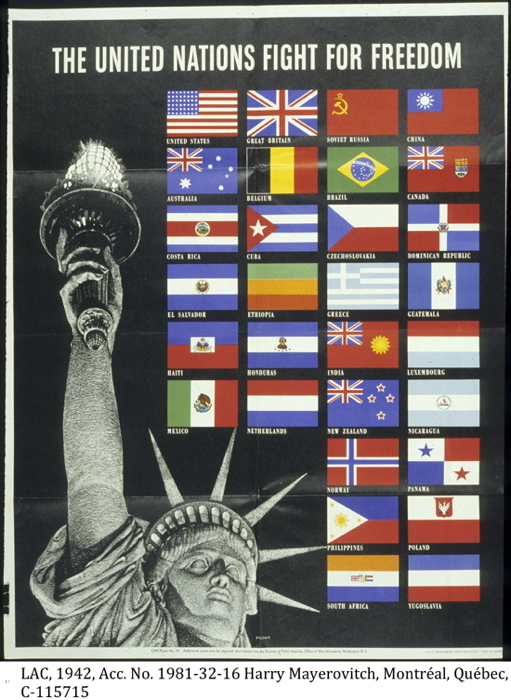
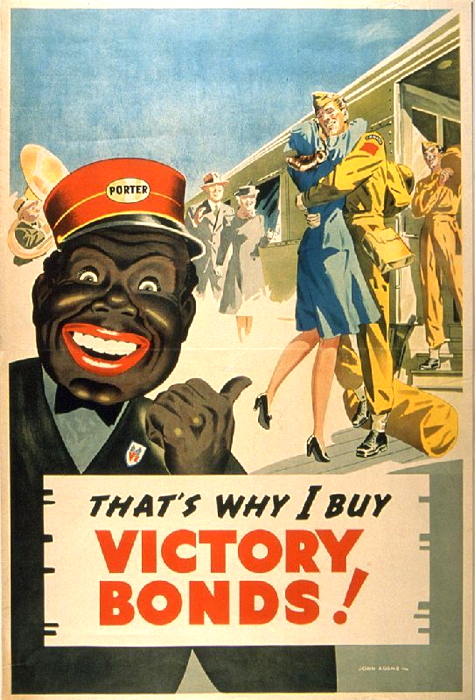
Archive of Ontario, Poster collection, 1942
[Sleeping car porters were mostly all Black men, as Black men had very few job opportunities open to them.]
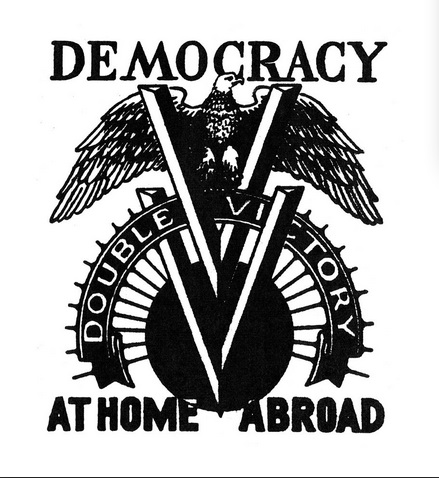
In 1942 African Americans began to question why they should fight in a war for a country that treated them like second class citizens. They began a Double V Campaign, demanding equality for all at the end of the war. They were fighting for freedom overseas and at home.
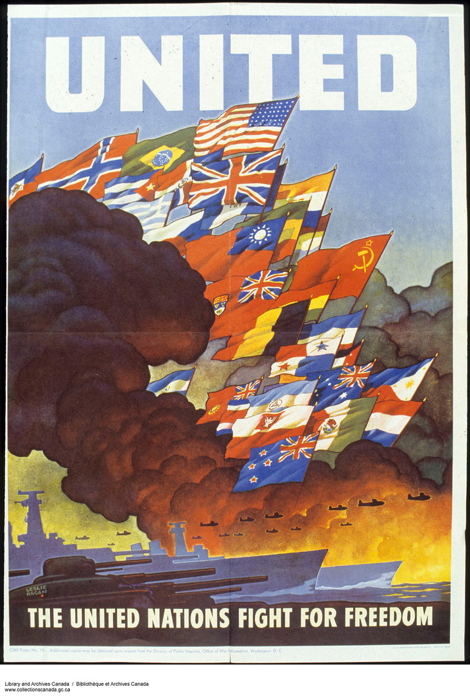
United : the United Nations fight for freedom. Acc. No. 1981-32-23 Source: Harry Mayerovitch, Montréal, Québec., Leslie Ragan, 1943
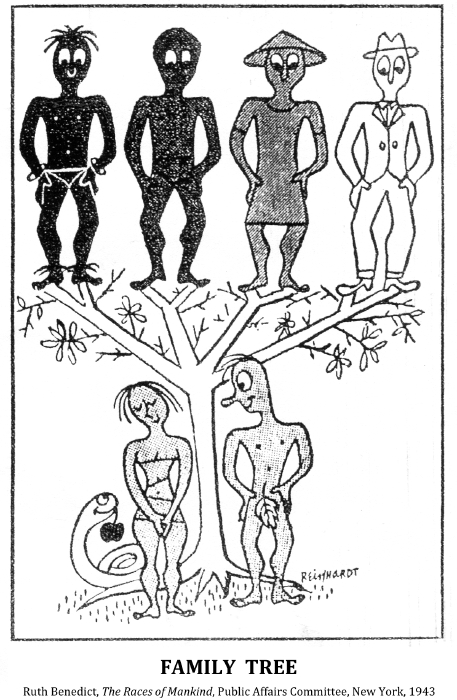

Brotherhood Week, Office for Emergency Management, Office of War Information, Domestic Branch. Branch of Special Services, 19 February 1943, USA
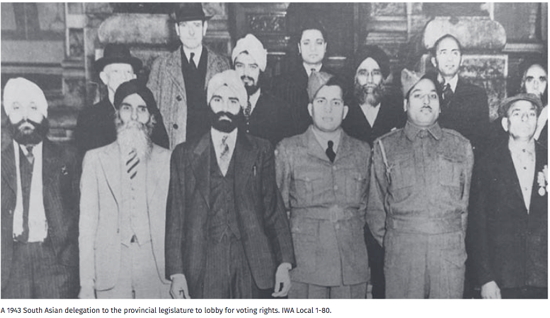
Challenging Racist "British Columbia" 150 Years and Counting, 2021, The Canadian Centre for Policy Alternative
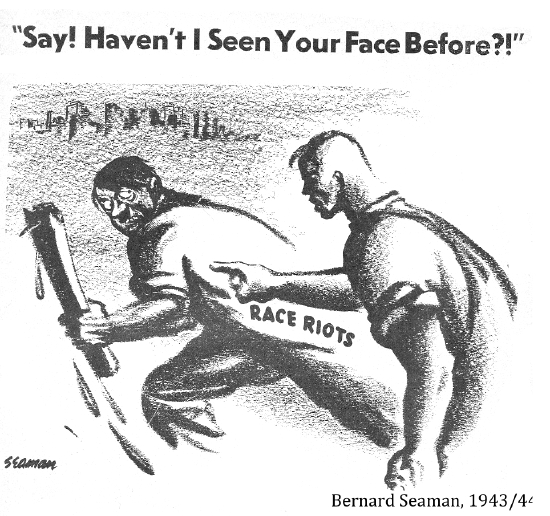
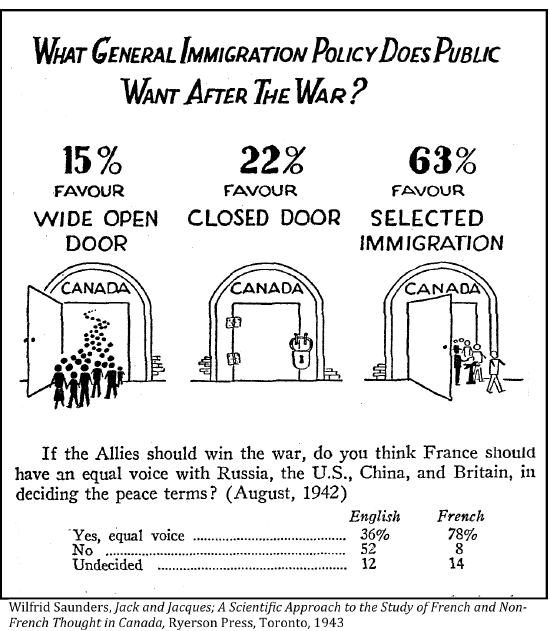
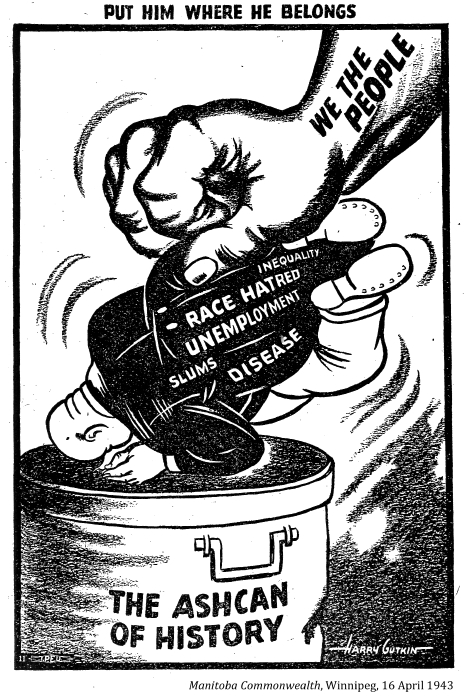
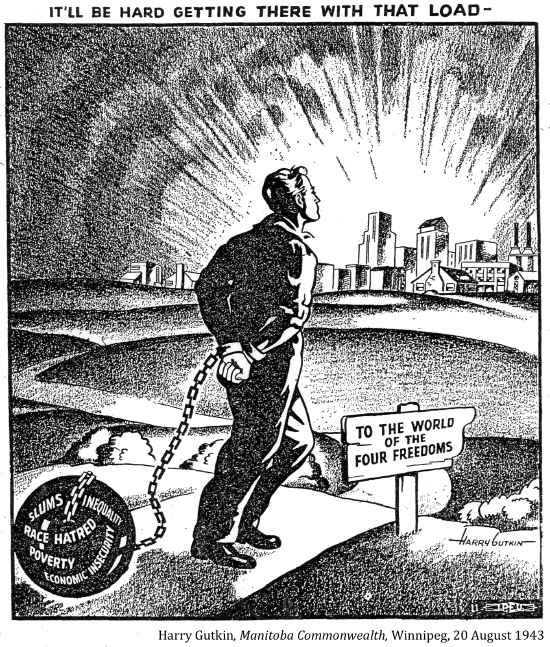
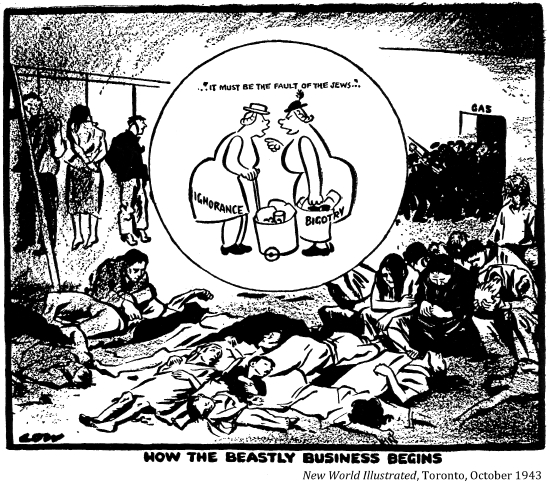

"No Vote – No War."
Reaction of both Chinese and South Asian men when Canada adopted conscription in November 1944
"When my people [First Nations] went into Vanderhoof, they were not allowed to go into restaurants, use public toilets, and had to come in the back door of a grocery store to buy groceries. We [Dick Patrick and King George] spoke for a long time about the injustice to my people. He told me he would endeavor to help my people."
Dick Patrick, awarded the Military Medal in 1944.
[After the war Dick was arrested, charged with disturbing the peace, and sentenced to six months in prison on nine different occasions for entering a restaurant in Vanderhoof that refused to serve First Nations people. He was never served a meal. – see Eric Jamieson, The Native Voice, pp.103-05]
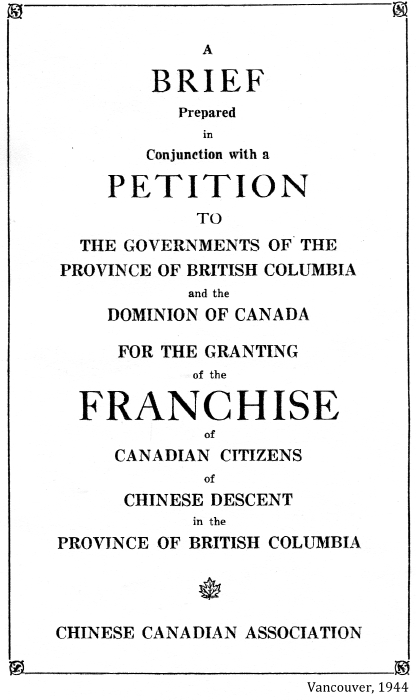
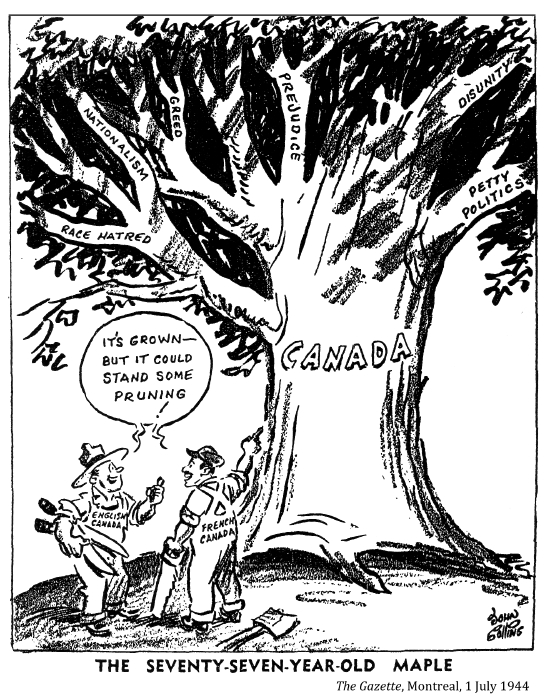
"We are not fighting today merely to defeat Germany and Japan; we are fighting in defence of definite principles. We are fighting for a peace based on justice, and justice must be granted to minorities as well as majorities."
Victor Quelch, Hansard, 17 July 1944
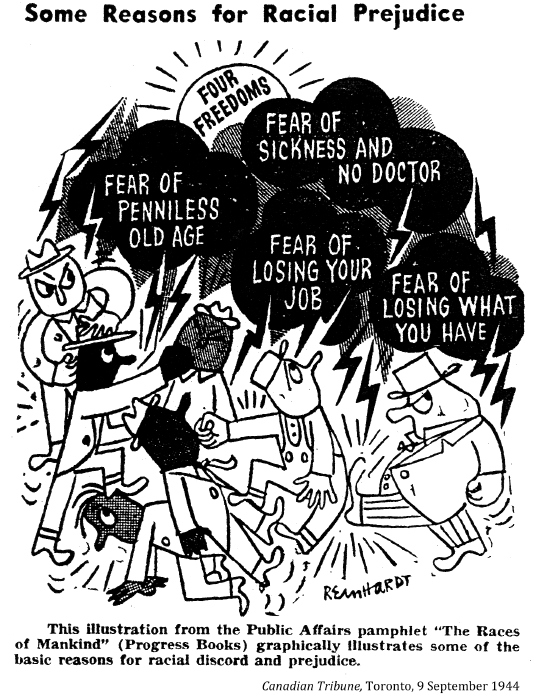
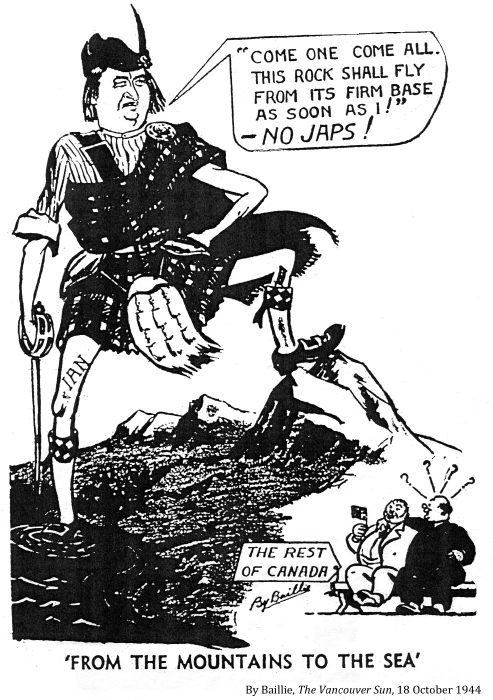
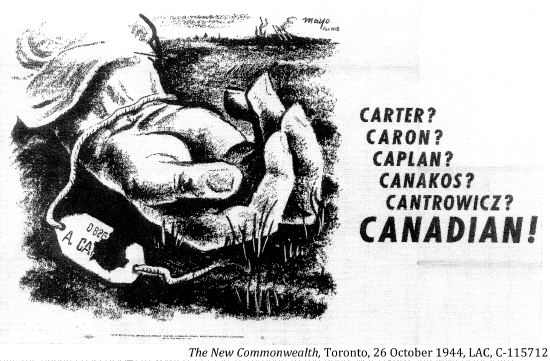
"I had as comrades in my section, men whose names were: Cameron, Kimora, English, Gleidenstein, de Chapin, O'Shaughnessy. We didn't fall out as Irish Canadians, French Canadians, Dutch Canadians, Japanese Canadians. We wore the same uniform, with the same maple leaf badge."
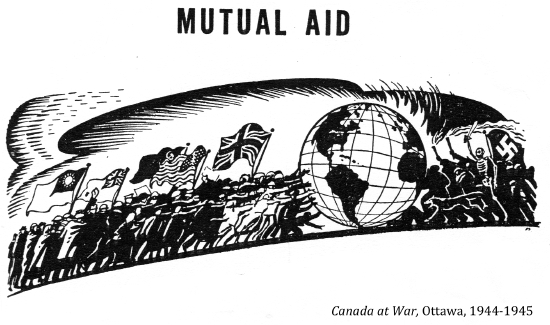
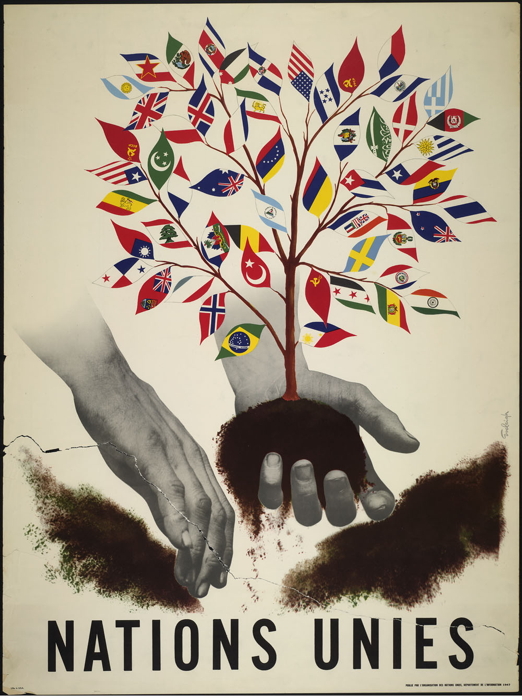
1945 United Nations e010750129
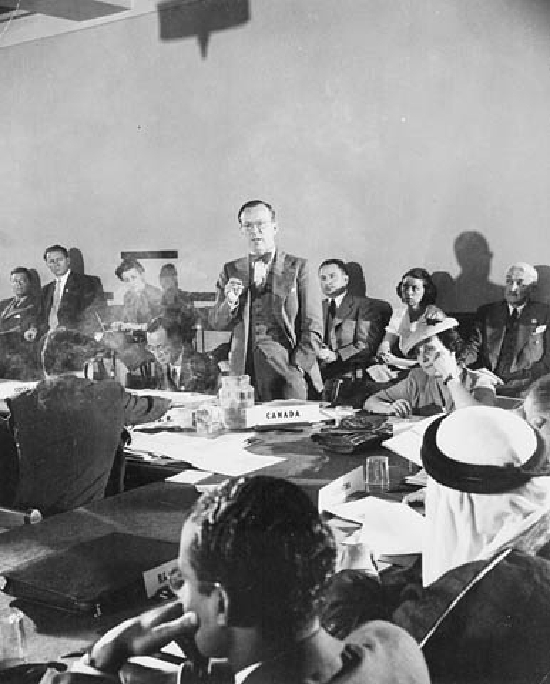
Mr. Lester B. Pearson addressing one of the committees at the United Nations Conference on International Organization in San Francisco, 1945, LAC - C-018532

"Canada must not sabotage the efforts on the field of battle by practicing racial intolerance at home while they fight it abroad."
The Vancouver Province, editorial, 16 March 1945
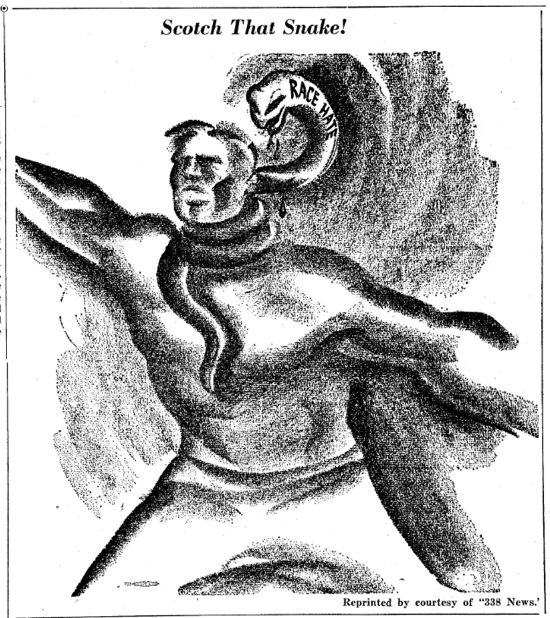
The Militant, New York, 19 May 1945
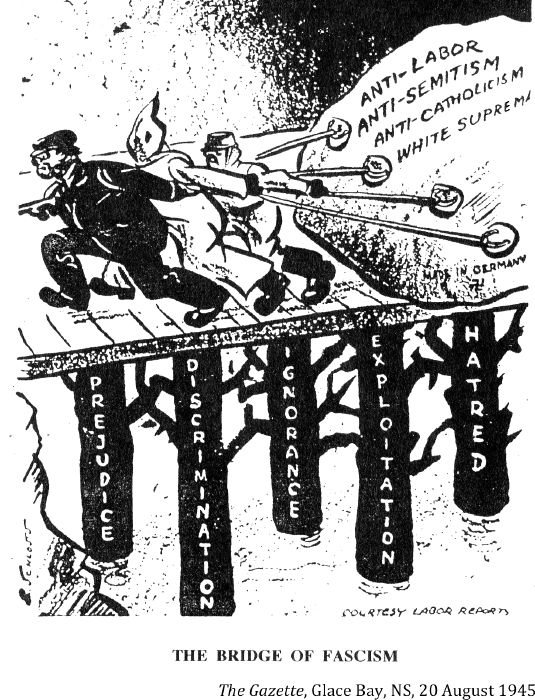
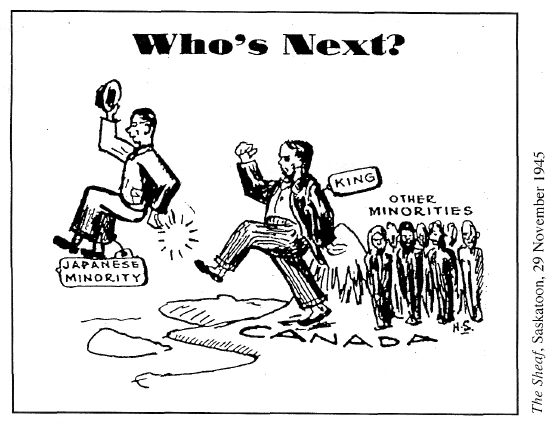
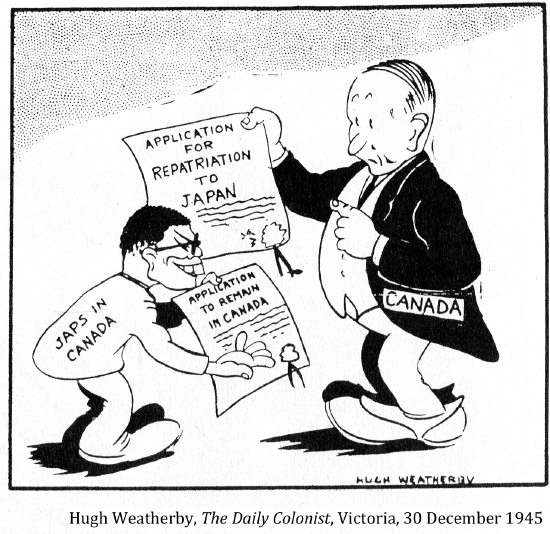
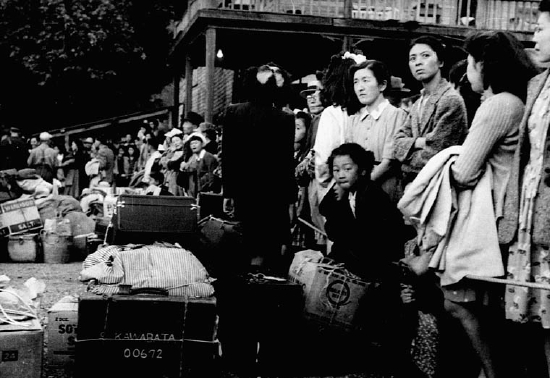
Group of Japanese immigrants who had been interned during WW II, waiting for a train to take them to ships, which will take them to Japan. 1946. Groupe d'immigrants japonais qui ont été internés lors de la Deuxième Guerre mondiale, attendant un train qui les emmènera à des navires en partance pour le Japon, 1946. LAC C-047398, Tak Toyota, 1946
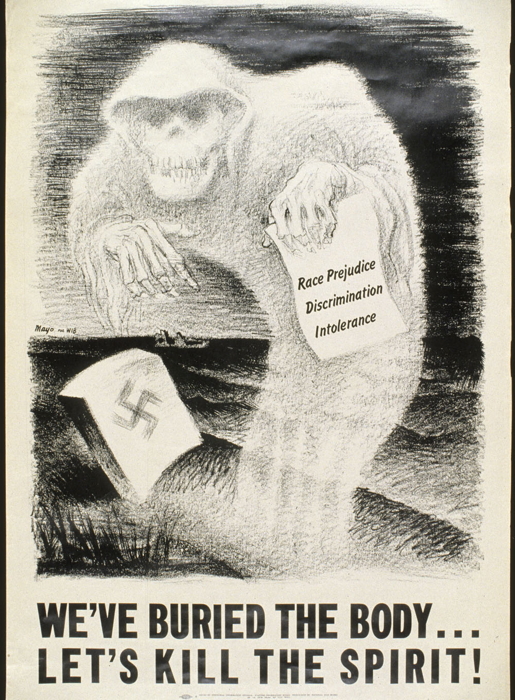
We've Buried the Body...Let's Kill the Spirit! : propaganda war poster. LAC Acc. No. 1981-32-8 Source: Harry Mayerovitch, Montréal, Québec, 1944-45
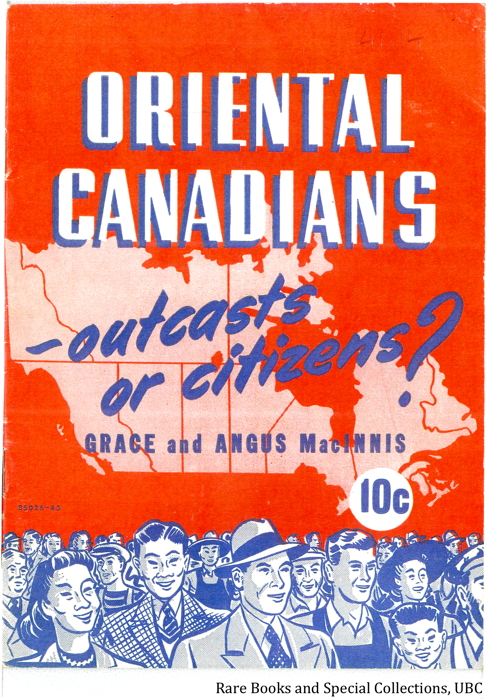
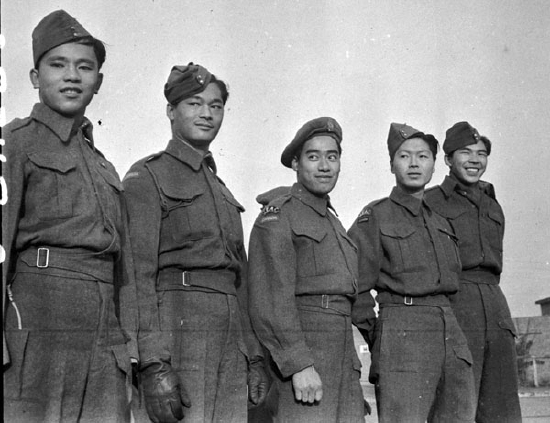
Five Chinese-Canadian soldiers who served with the South East Asia Command (SEAC) as guerilla fighters an are awaiting repatriation to Canada, No.1 Repatriation Depot (Canadian Army Miscellaneous Units), Tweedsmuir Camp, Thursley, England, 22 November 1945. Cinq soldats canadien-chinois qui ont servi sous le Commandement d'Asie sud-est (SEAC) comme combattants guérillero et qui attendent leur rapatriement au Canada au dépot de rapatriation no.1 (Unités diverses de l'Armée canadienne), camp Tweedsmuir, Thursley, Angleterre, 22 novembre 1945. LAC PA-211879, Department of National Defence, Karen M. Hermiston, 22 November 1945
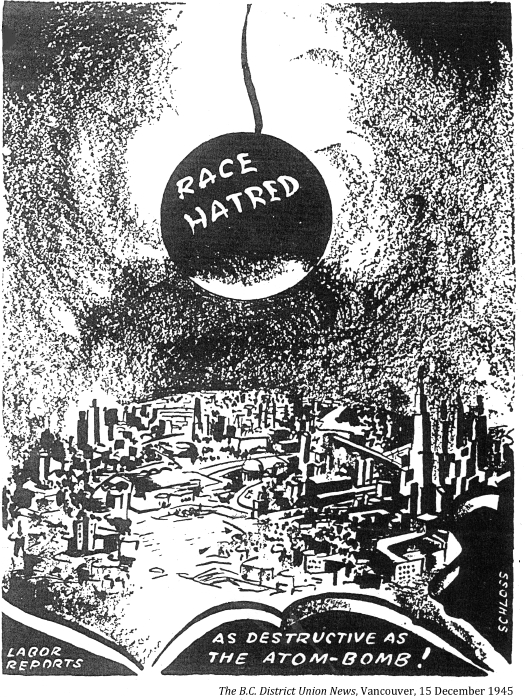
"One day back in Canada my buddies took me down to a hotel. I had been a soldier for one year and I had on my uniform. I went into the hotel with them and sat down and they would not serve me because I was an Indian. The law at that time was that they were not supposed to serve an Indian. Just think, I was a soldier."
Andrew George, 1946
"B.C. is being held up to ridicule all across Canada! It denies full rights of citizenship to those of minorities which have colored skins."
Montreal Standard, 4 January 1946
The first issue of The Native Voice (Canada's first native newspaper) appeared in December of 1946. It was a response to the resentment and cynicism expressed by returning World War II Aboriginal veterans. It publicized the realities of aboriginal life and a vision for the future.
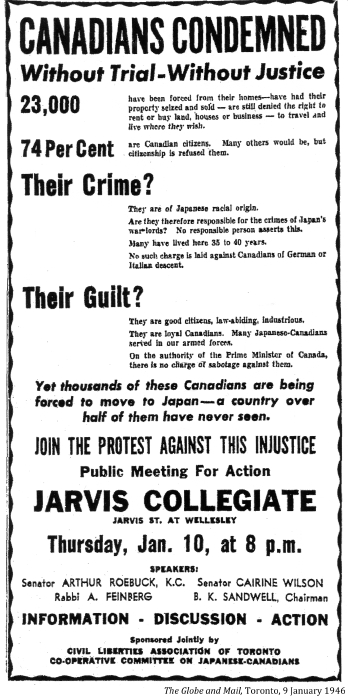
HUGE MAJORITY OPPOSE BARRIERS OF RACE OR COLOUR IN DANCE HALLS
"When someone is given a license to run a place of entertainment, dance hall or skating rink; should he have the right to keep out certain races, say Negroes, or should he be compelled to admit everyone, as long as they behaved themselves?"
To the first question, Canadian opinion says:
Have right to keep out . . . . . . 19%
Admit everyone . . . . . . . . . . . 77
Undecided . . . . . . . . . . . . . . . 4
To the second question, the answer was even more emphatic:
Have right to keep out . . . . . . 12%
Admit everyone . . . . . . . . . . . 86
Undecide . . . . . . . . . . . . . . . . 2
Canadian Institute of Public Opinion, Gallup Poll of Canada, 9 January 1946

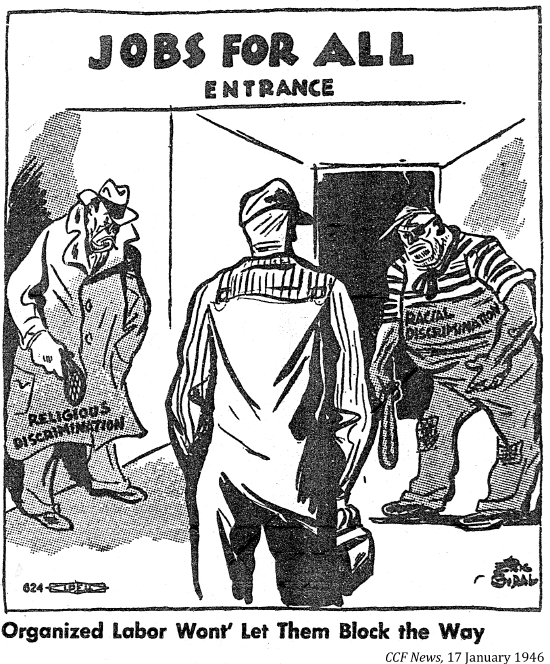
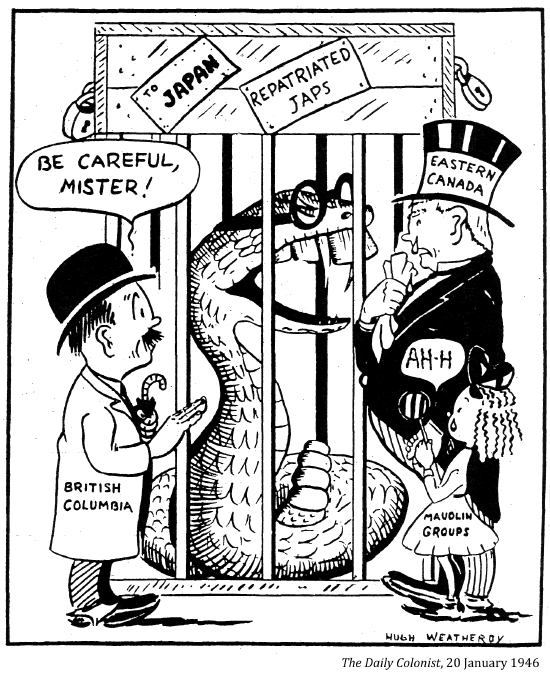
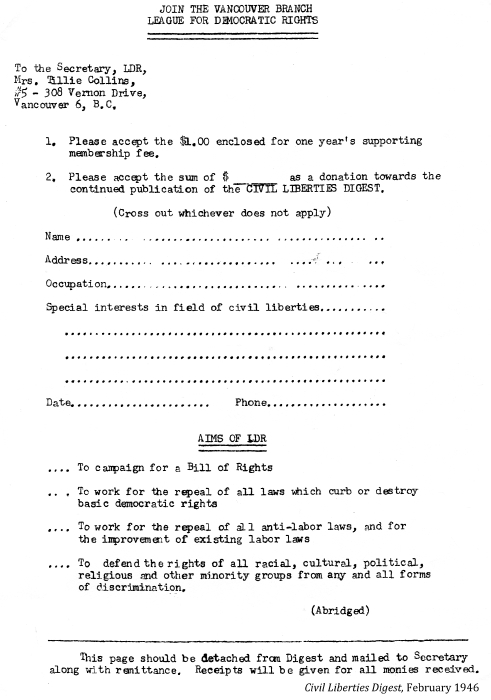
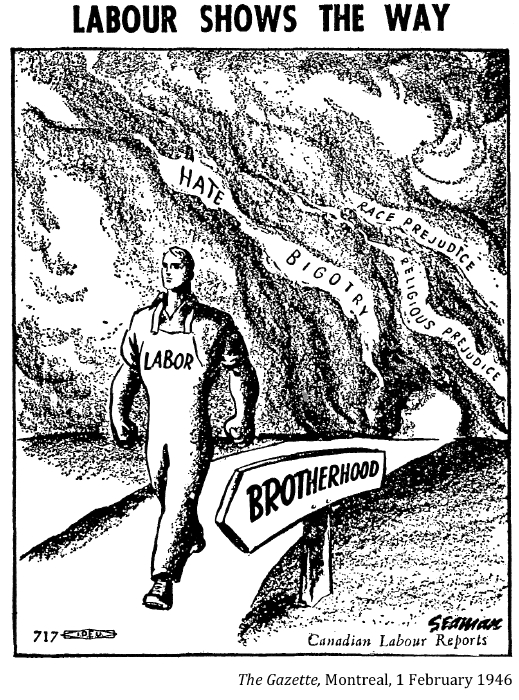
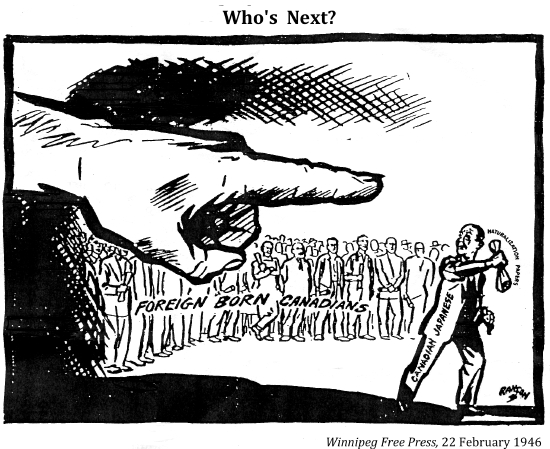
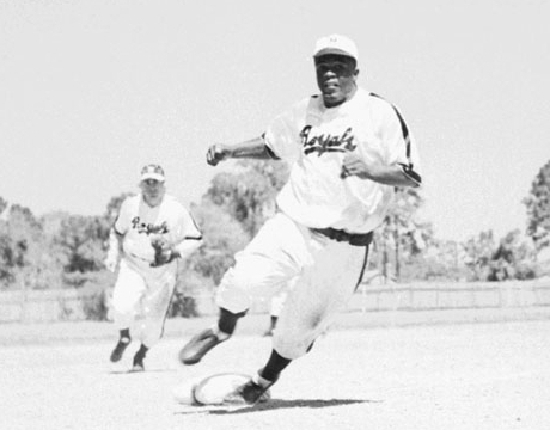
Jackie Robinson circles third base all-out, bound for home plate during game, LAC PA-201547
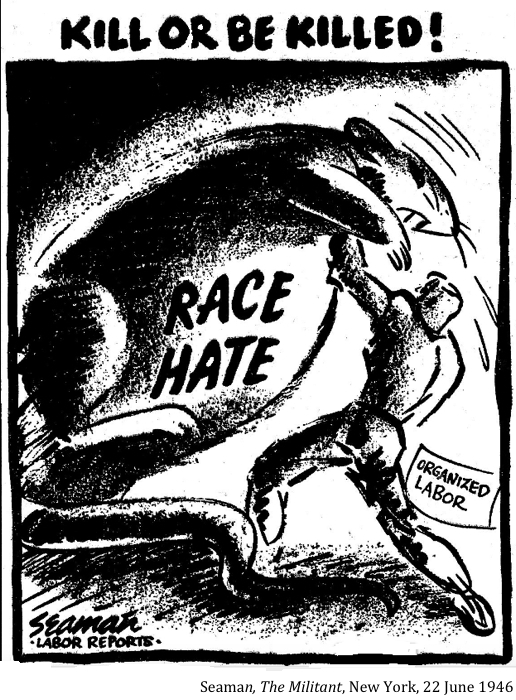
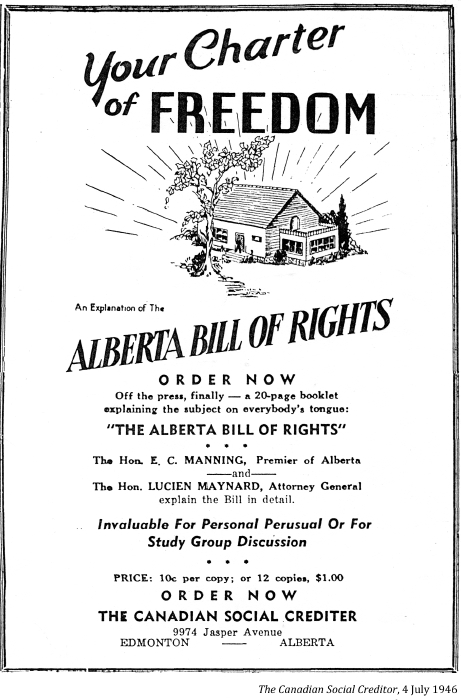
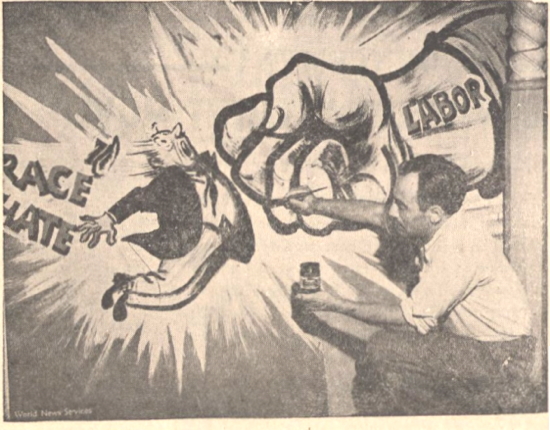
Avrom Yanovsky, The Fisherman, Vancouver, 13 September 1946
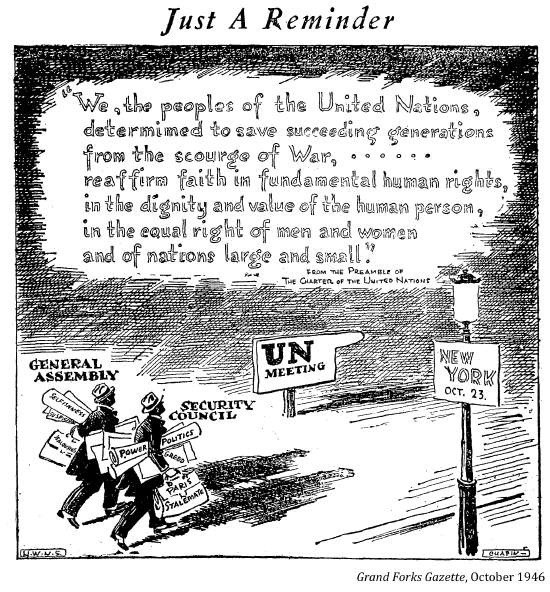
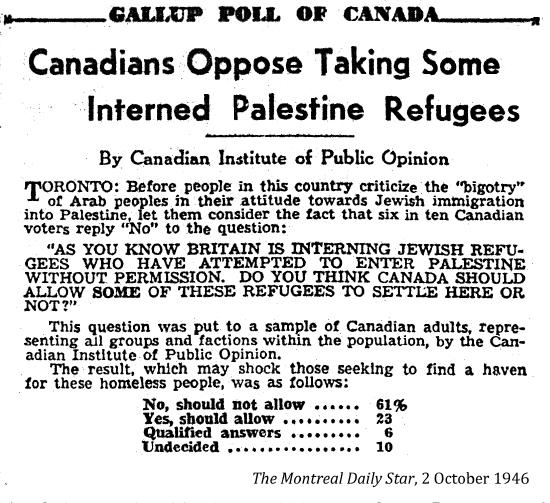
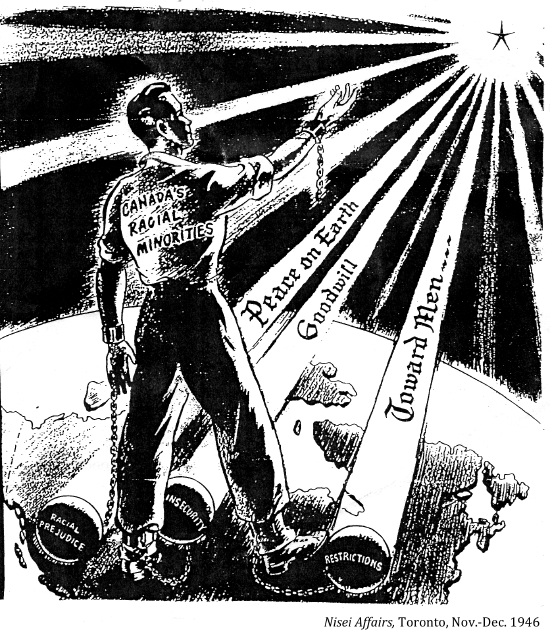
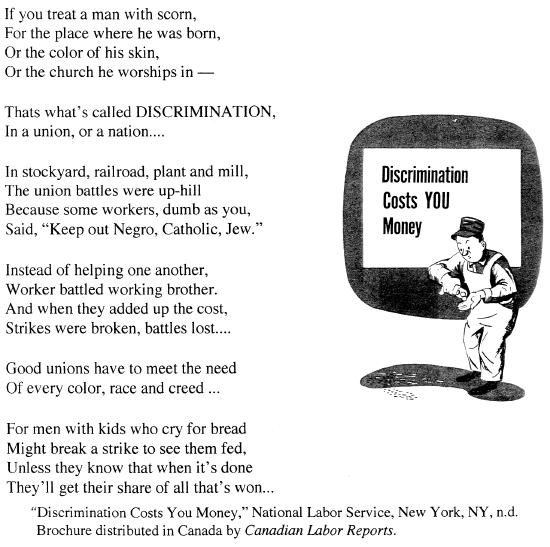
Link to "Discrimination essay"

[The inspiration for the Citizenship Act came to Paul Martin from a tour of the military cemetery at Dieppe.] "The racial origins of the dead were so varied . . . It struck me that herein lay the character of Canada, a land of people of diverse national origins."
Canadian Citizenship Act, 1946
"The racial origins of the dead [he said after visiting the military cemetery at Dieppe] were so varied . . . it struck me that herein lay the character of Canada, a land of people of diverse national origins."
Paul Martin Sr., 1947
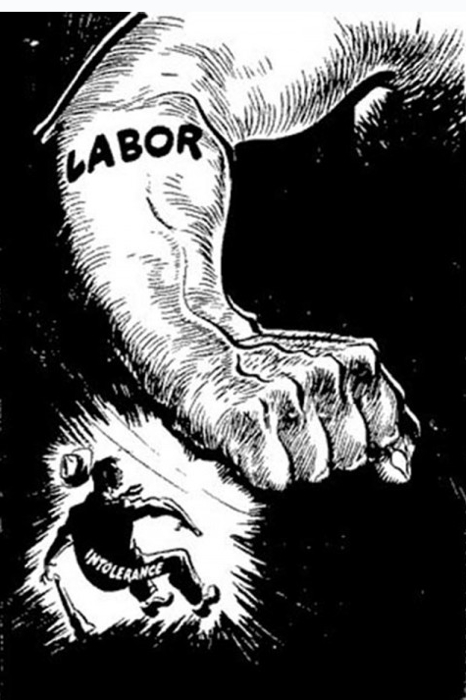
Avrom Yanovski


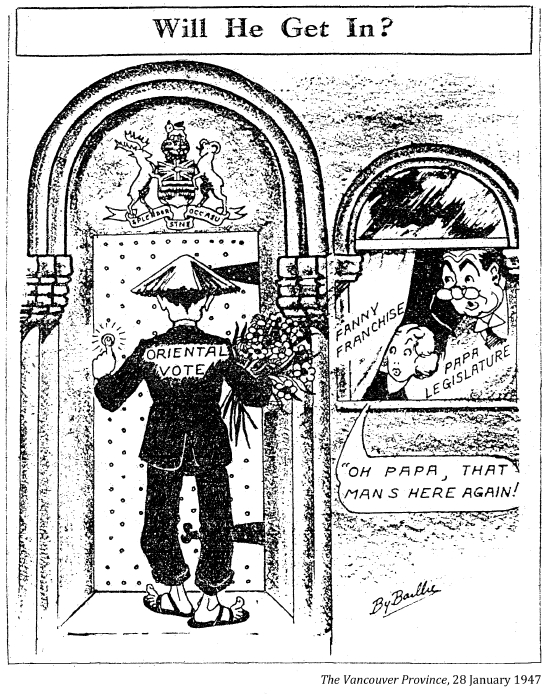
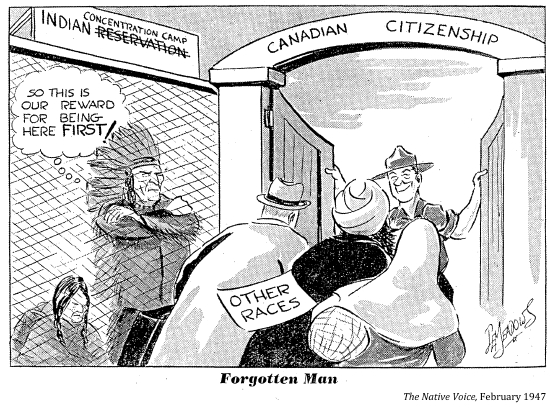
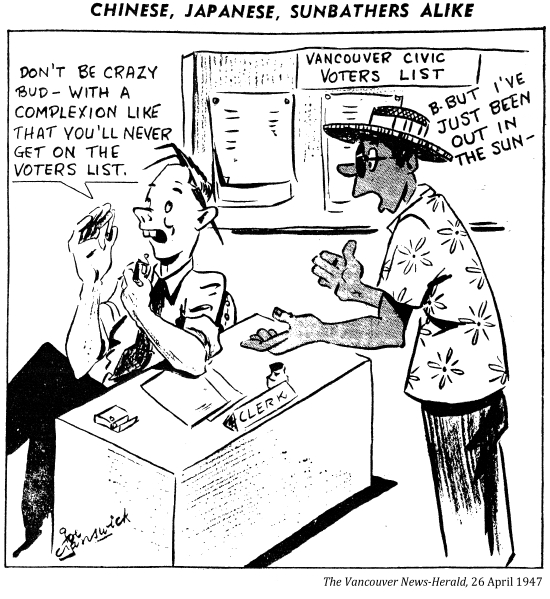
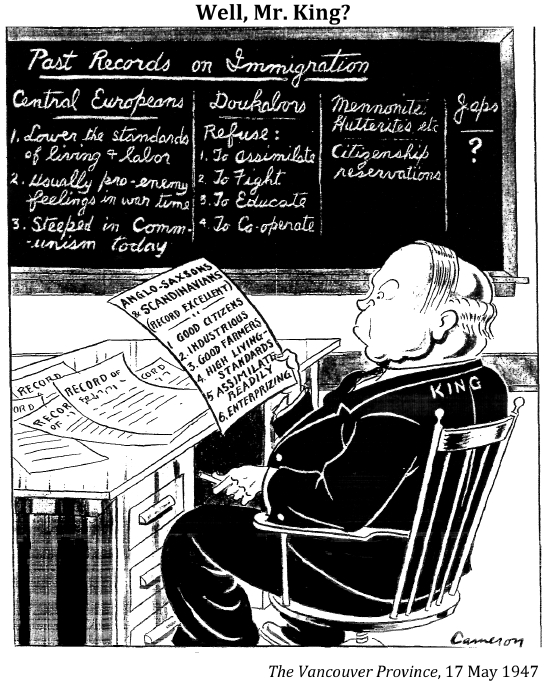
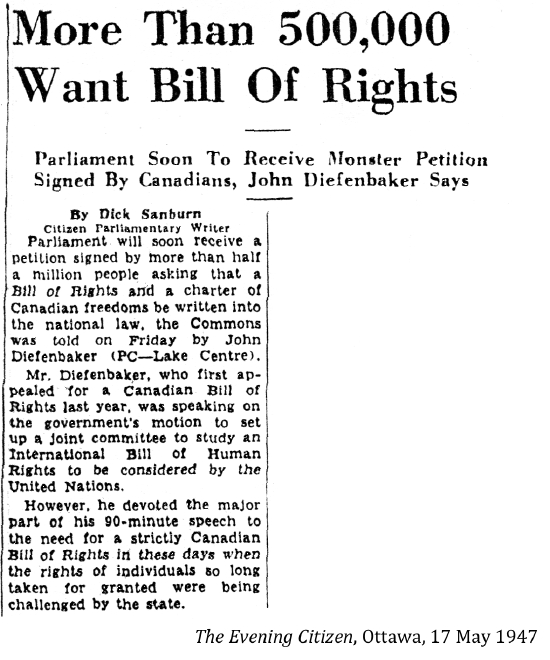
"Every person in Saskatchewan irrespective of race, creed, religion or colour or ethnic or national origin shall enjoy the right . . . to employment . . . to engage in business . . . to won and occupy property . . . to enter and use public places, hotels etc. . . . to membership in professional and trade societies . . . to education and enrolment in schools and universities."
Saskatchewan Bill of Rights, 1947
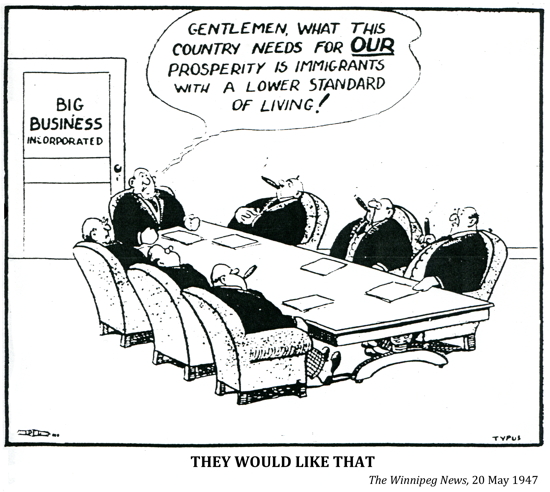
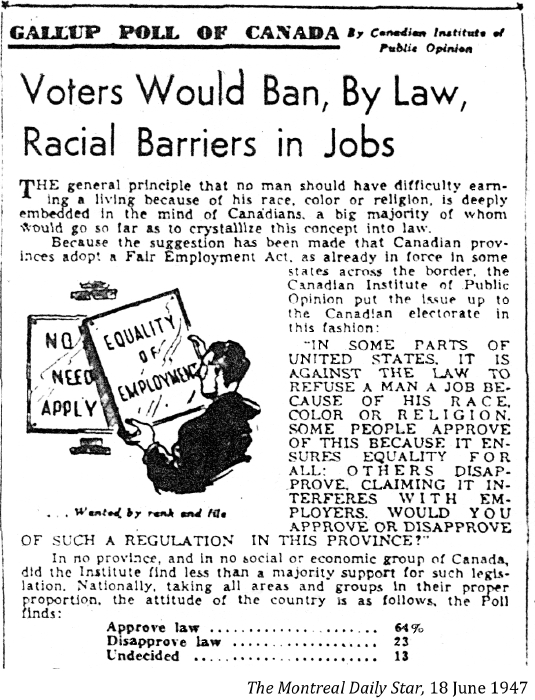
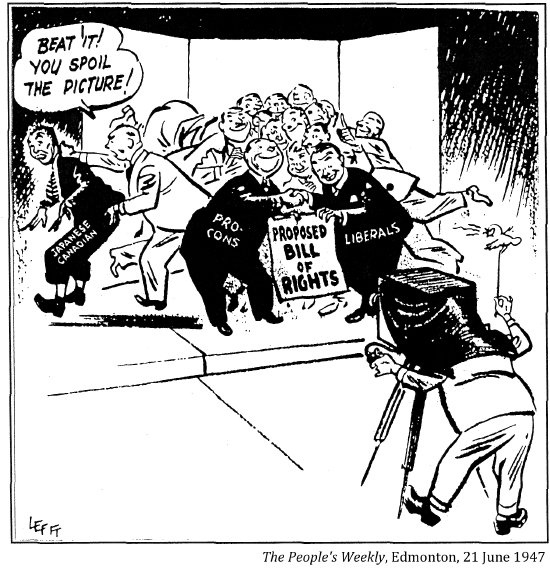
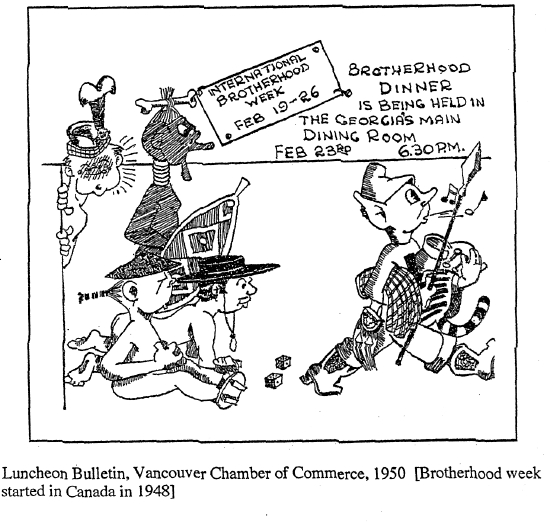
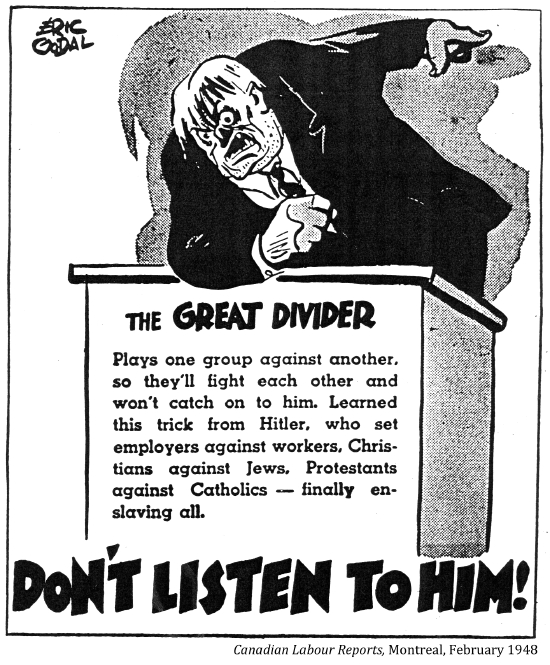
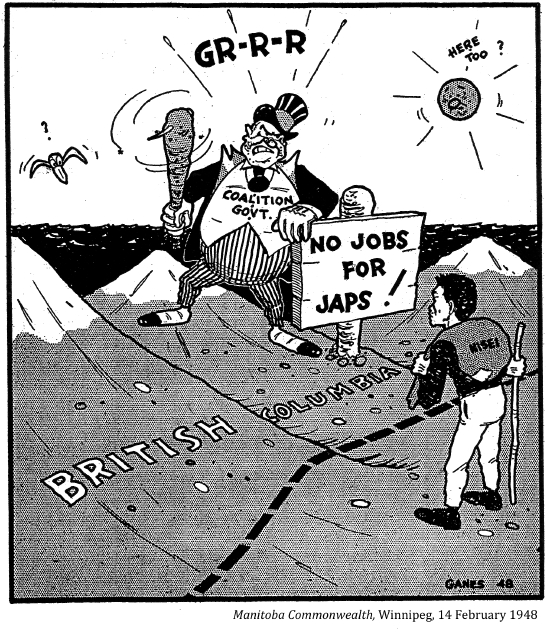
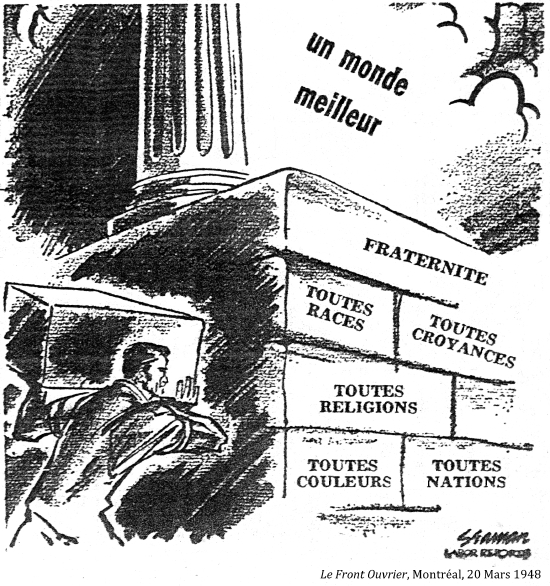
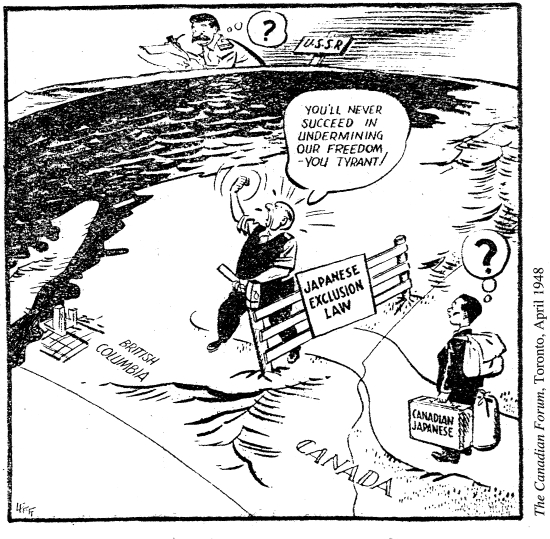

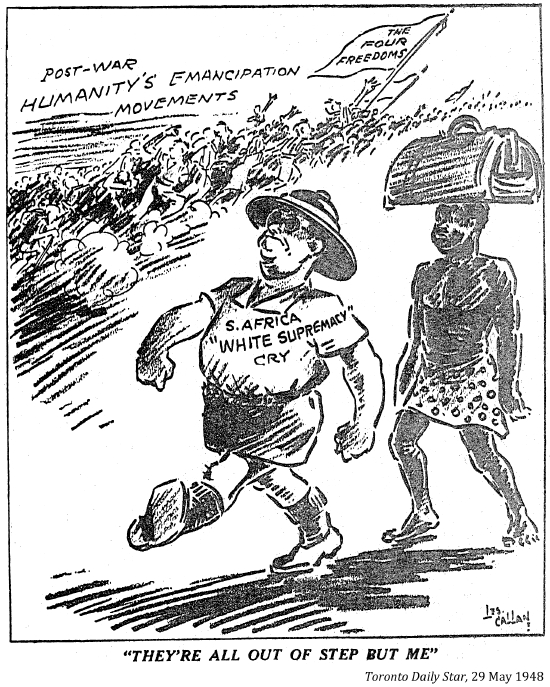
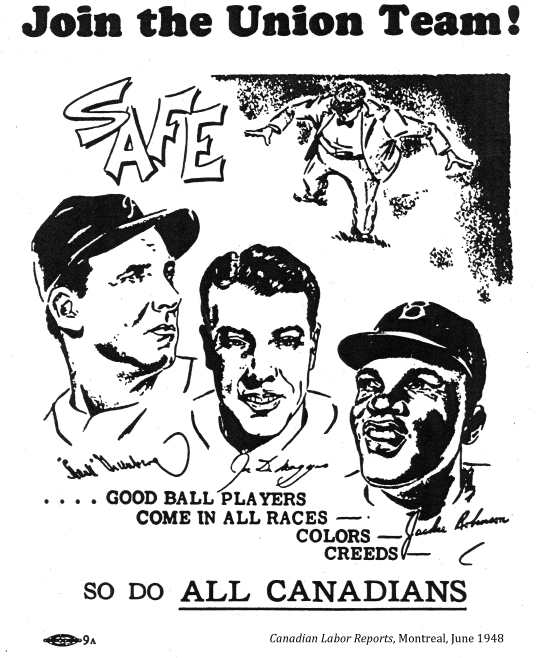
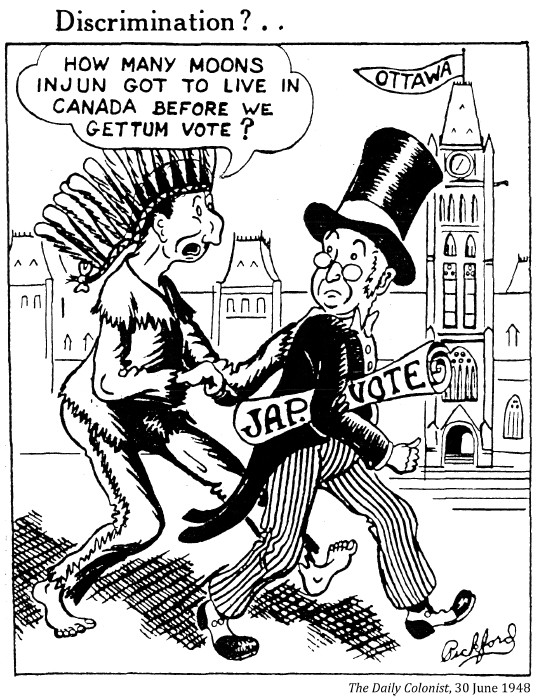
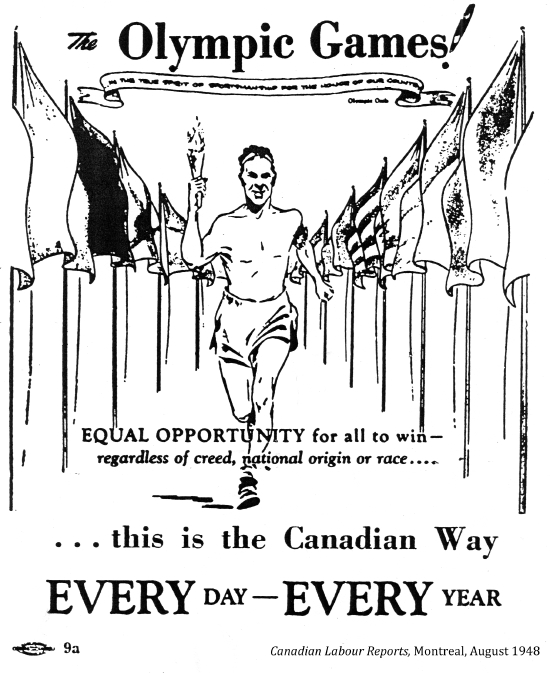
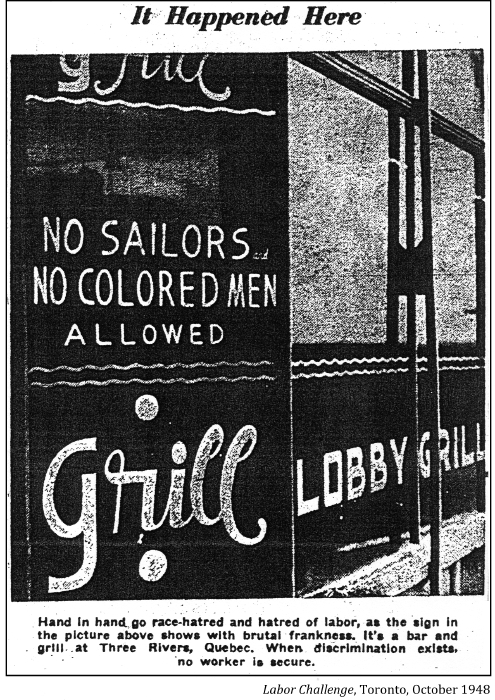
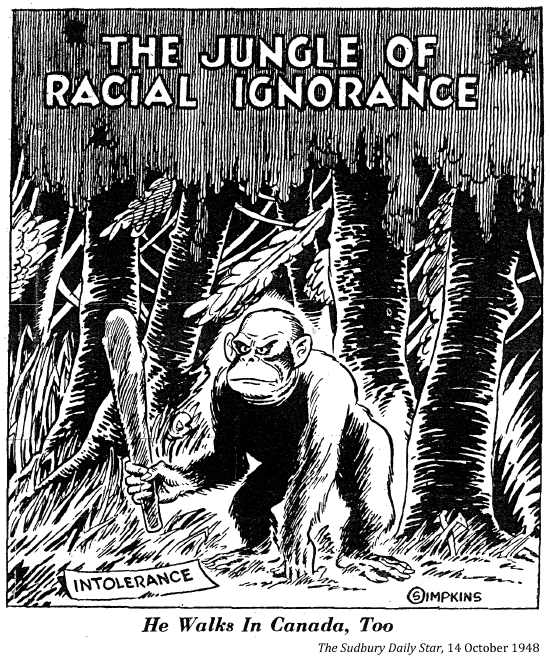
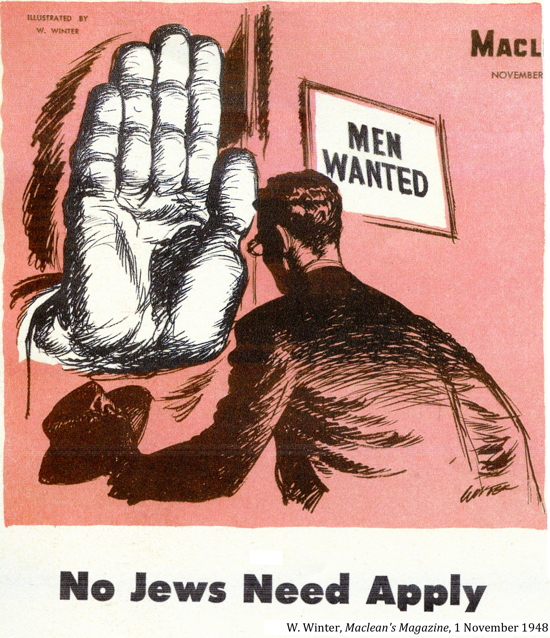
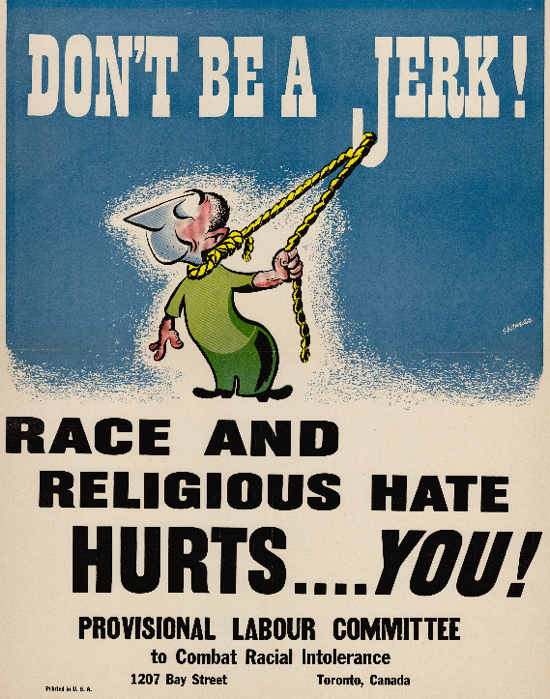
United Packinghouse Workers of America, CIO
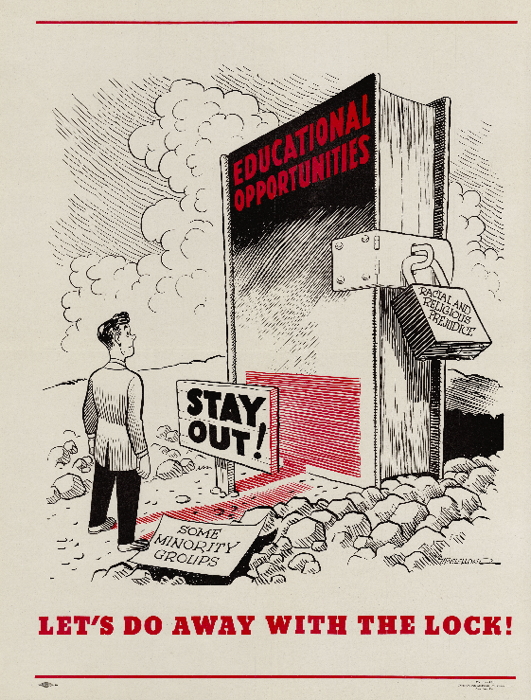
Canadian Labour Reports, Montreal November 1948
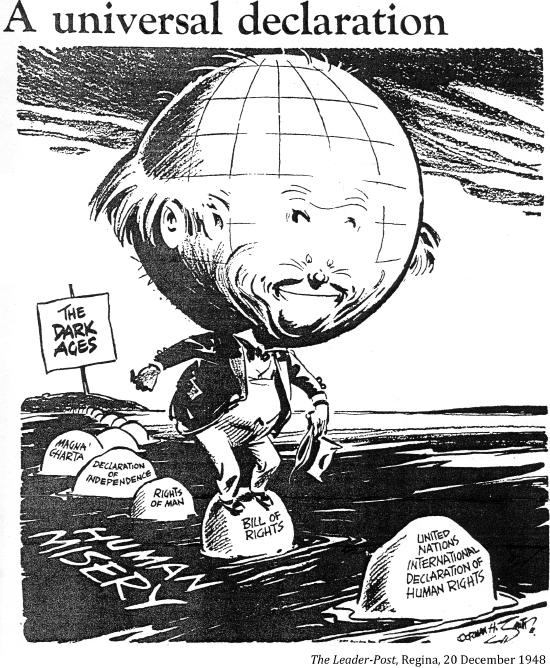
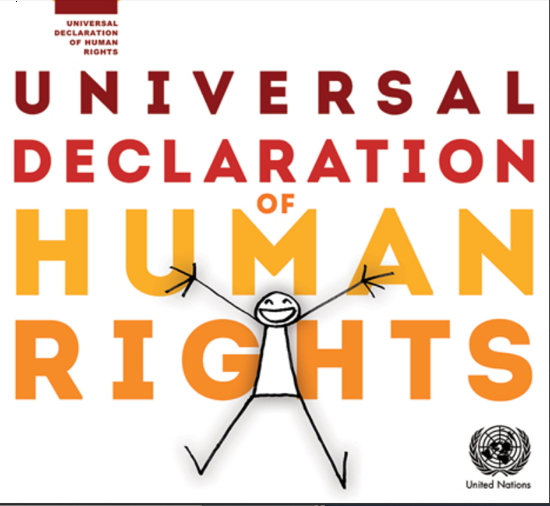
"Whereas, recognition of the inherent dignity and of the equal and inalienable rights of all members of the human family is the foundation of freedom, justice and peace in the world; Whereas, disregard and contempt for human rights have resulted in barbarous acts which have outraged the conscience of mankind. . . Whereas, it is essential to promote the development of friendly relations between nations; . . . The General Assembly Proclaims this Universal Declaration of Human Rights as a common standard of achievement for all peoples and all nations. . . Everyone is entitled to all the rights and freedoms set forth in this declaration, without distinction of any kind, such as race, colour, sex, language, religion, political or other opinion, national or social origin, property, birth or other status."
Universal Declaration of Human Rights, the General Assembly of the United Nations,
10 December 1948.
"The Charter which was adopted at San Francisco refers to human rights and fundamental freedoms in seven places, including Article I which says that one of the purposes of the United Nations is 'to achieve international cooperation...in promoting and encouraging respect for human rights and fundamental freedoms for all without distinction as to race, sex, language or religion.'"
John P. Humphrey, The Universal Declaration of Human Rights, International Journal, Spring, 1949.
"[The Saskatchewan Bill of Rights guarantees] “every person...without discrimination...because of the race, religion, colour or ethnic or national origin of such person” - the right to engage in any occupation or business or enterprise, the right to rent or purchase any property, the right to accommodation in any hotel, victualing house or theatre, the right to education in any school, college, university or other institution or place of learning, and freedom from group libel and slander by way of publication or broadcasting of material which tends to restrict the rights of citizens as set out in the act."
Dr. Morris C. Shumiatcher, “The Saskatchewan Bill of Rights,” Information and Comment, Committee on Social and Economic Studies of the Canadian Jewish Congress,
March 1949.
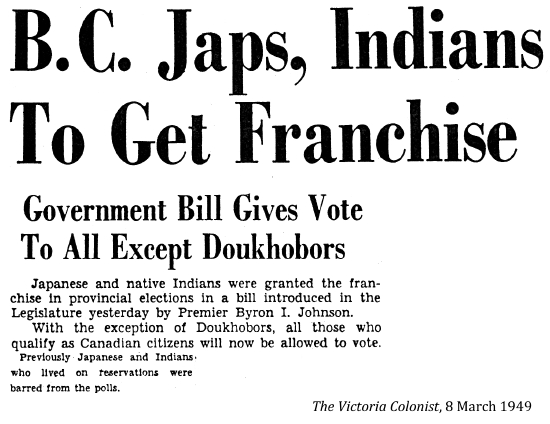
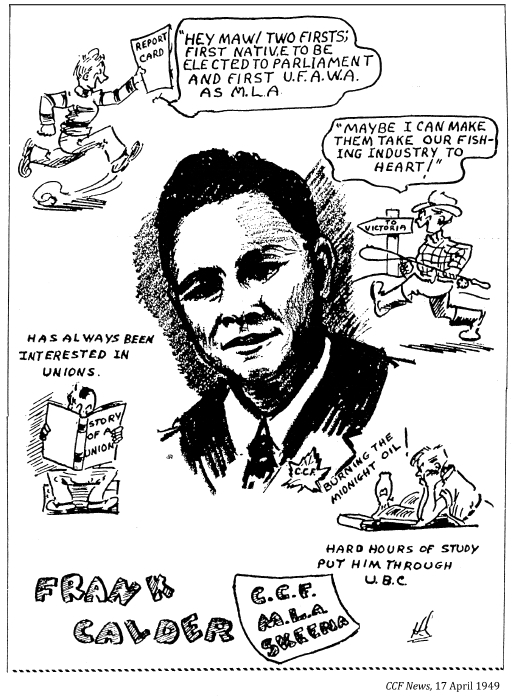
[Frank Calder attended residential school and graduated from the Anglican Theological College of the University of British Columbia. He was working in a cannery when he was elected to the provincial legislature in 1949, making him the first person elected to any provincial legislature in Canada. In 1973 he became the first Indigenous Cabinet minister in Canadian history when he was appointed to the New Democratic Party cabinet.]
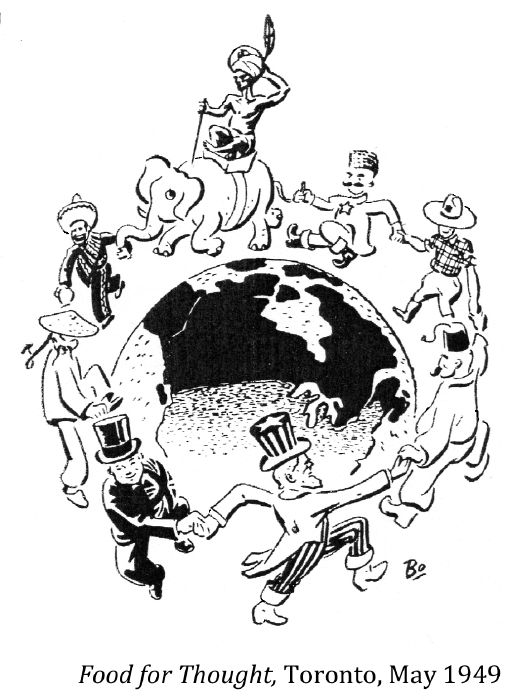
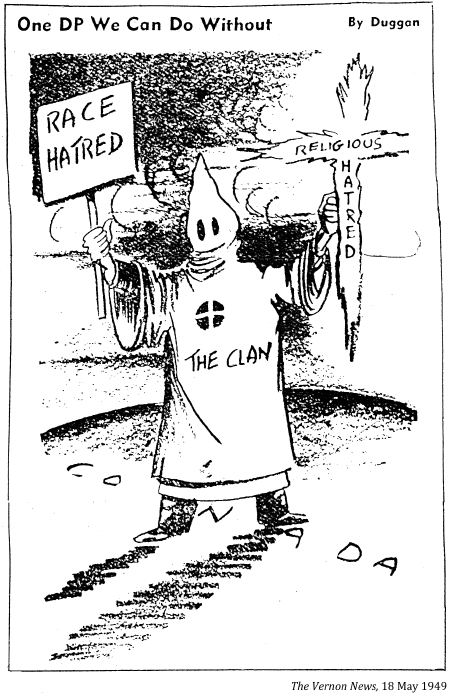
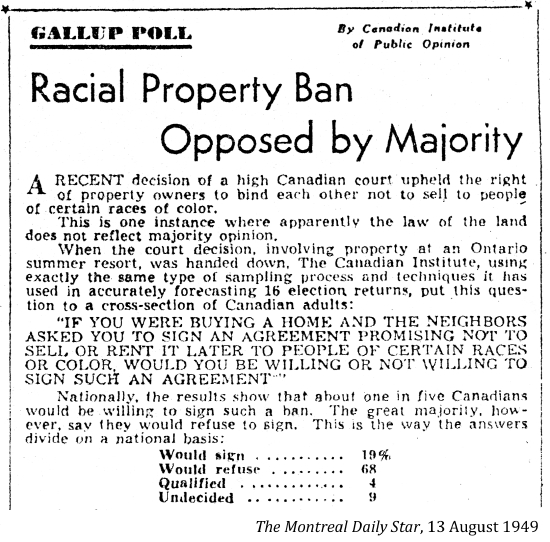
"Stones pelted our legs. 'Beat is nigger!' More stones. My heart pounded so loudly and fiercely against my ribs that it almost drowned out the words coming from those mean-looking faces. More than seventy years later, and I can still see them. I hear their hateful cries and feel the rocks that hit the back of my head and neck. More voices joined to form a chorus ringing out, 'Niggers! Blackies! Aunt Jemima's babies! Scram! Beat it!"
Valerie Jerome, Races [When the Black Jerome family moved to North Vancouver in1949]
CANADIAN PUBLIC OPINION October 1949
ON RACIAL RESTRICTIVE COVENANTS
During the first week of July, 1949, the Canadian Institute of Public Opinion (The Gallop Poll of Canada) interviewed a national sample of 2125 people with the following question:
"IF YOU WERE BUYING A HOME AND THE NEIGHBOURS ASKED YOU TO SIGN AN AGREEMENT PROMISING NOT TO SELL OR RENT IT LATER TO PEOPLE OF CERTAIN RACES OR COLOR, WOULD YOU BE WILLING OR NOT WILLING TO SIGN SUCH AN AGREEMENT?"
Result:
19% of those polled declared themselves "willing to sign."
4% gave "qualified" answers,
9% "undecided", while
68% declared themselves "not willing to sign."
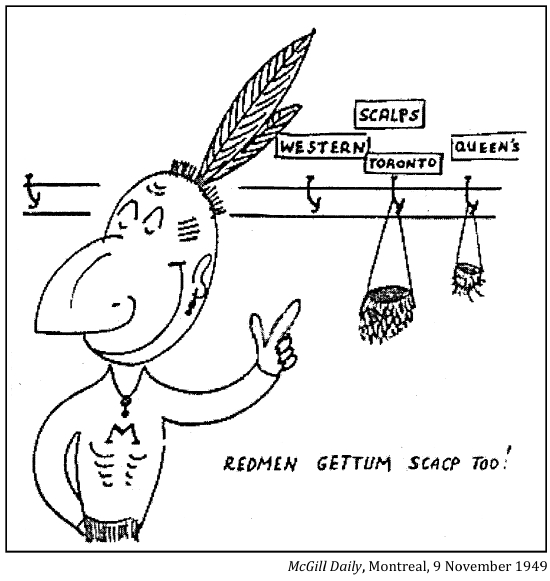
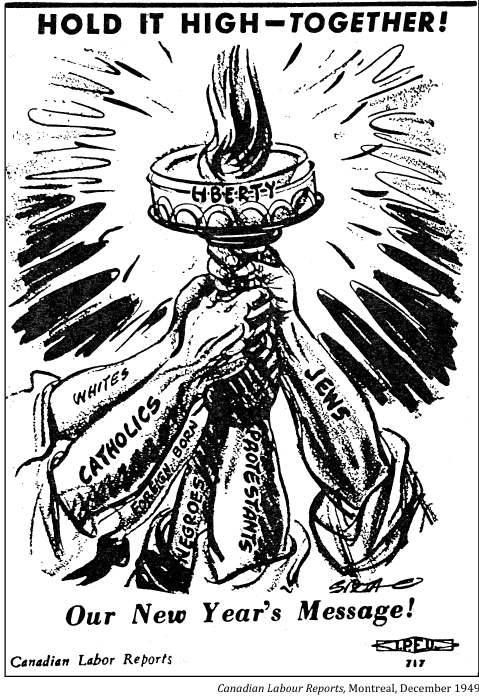

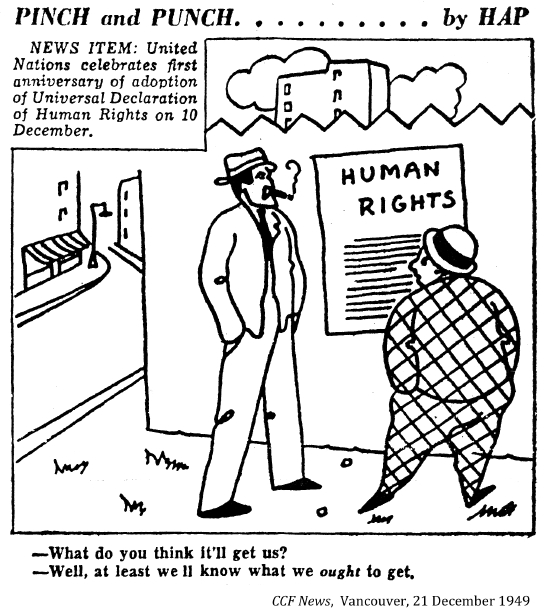
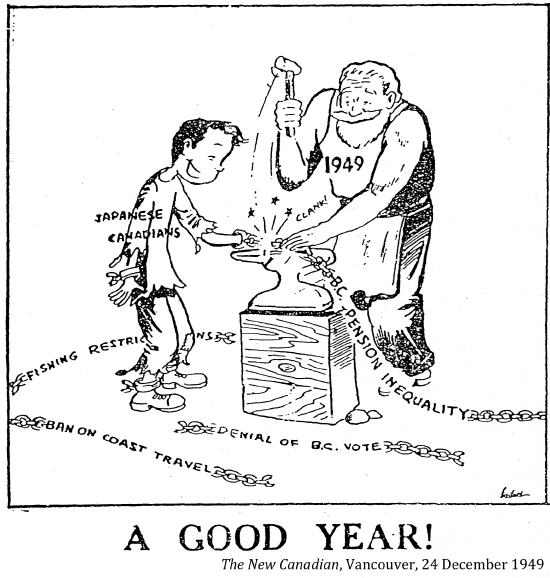
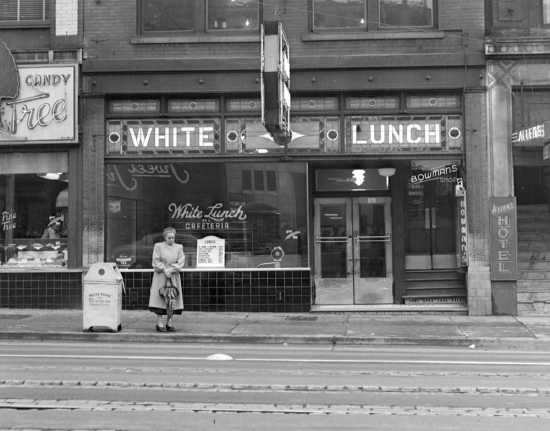
White Lunch on Granville St. in 1950 (detail) | VPL_81449
“It is a sham to attempt to defend western democracy against communism if a man or woman is prevented from getting a job because of discrimination against race, religion, or colour.”
Rabbi Feinberg
[Indigenous people lived in a] "legislative concentration camp."
A charge made by the Native Brotherhood of British Columbia in 1950

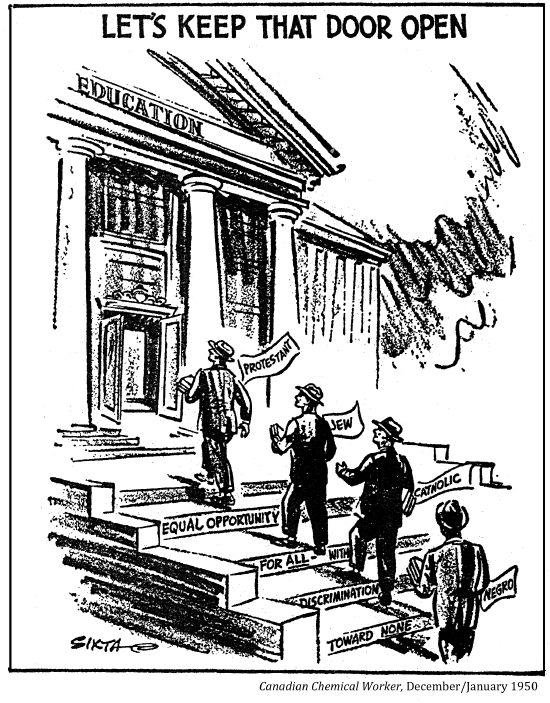
"I think of Canada now as a river. A river is always changing and becoming something else. If you watch what is happening in Toronto you are going to get a picture of what is happening to all Canada and how it will move over the next 50 years."
Morely Callaghan
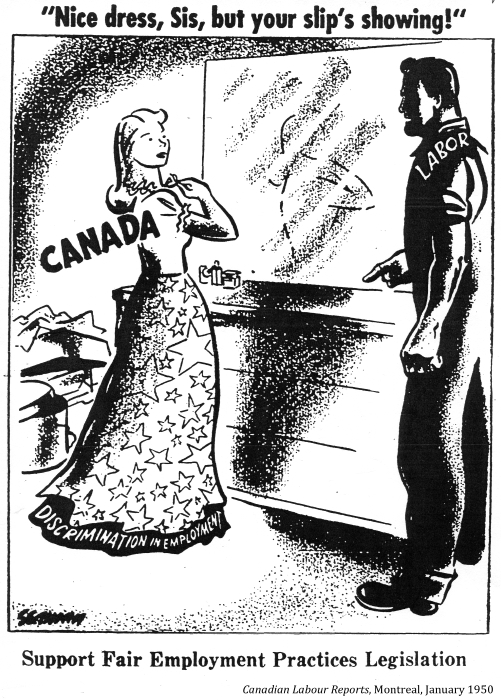
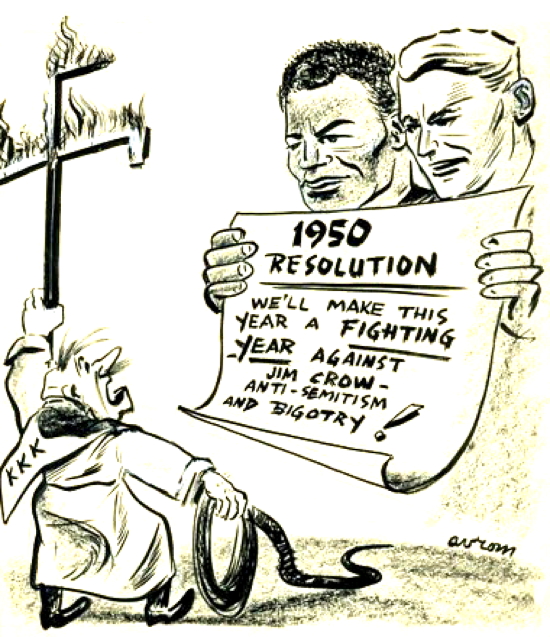
Avrom Yanovsky, 1950
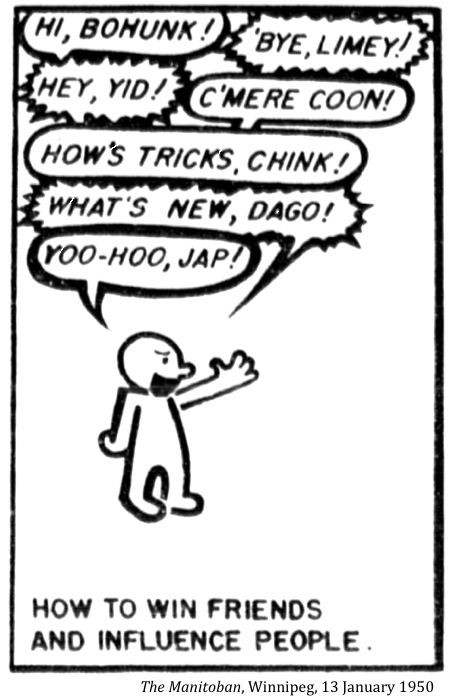
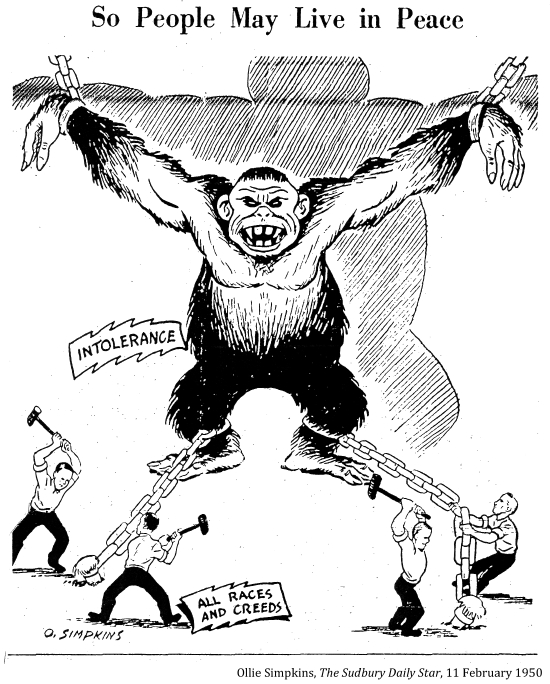
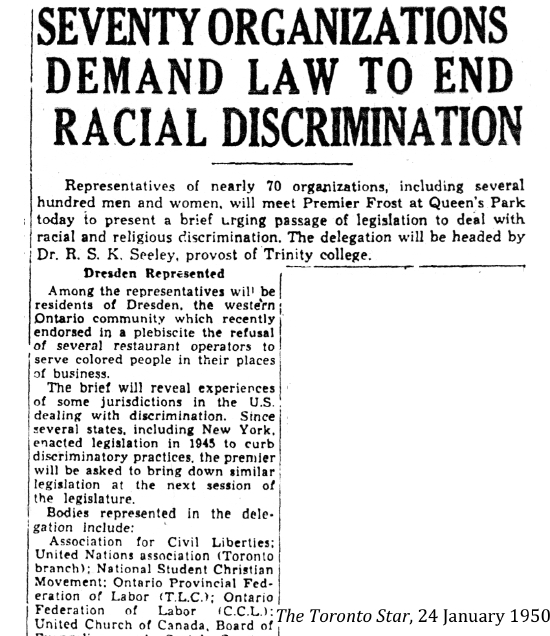
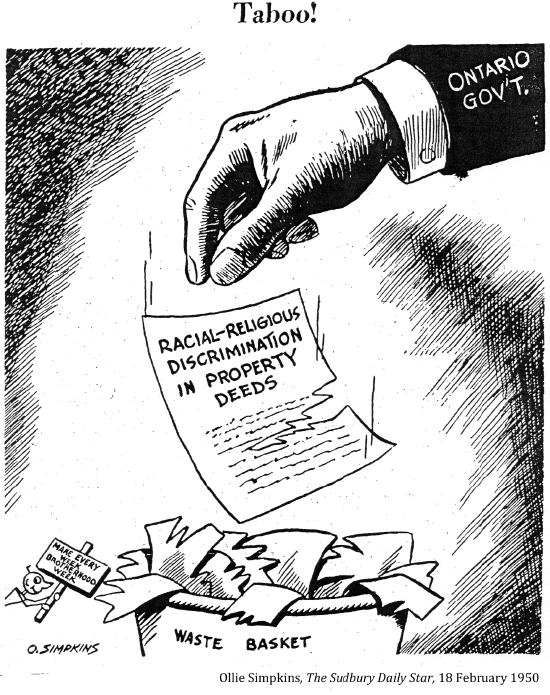
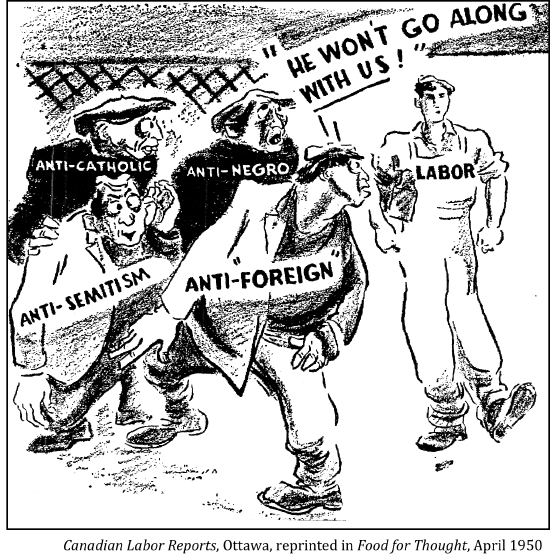
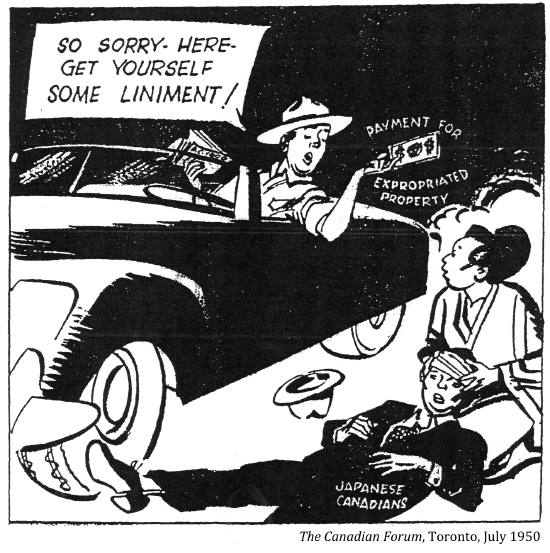
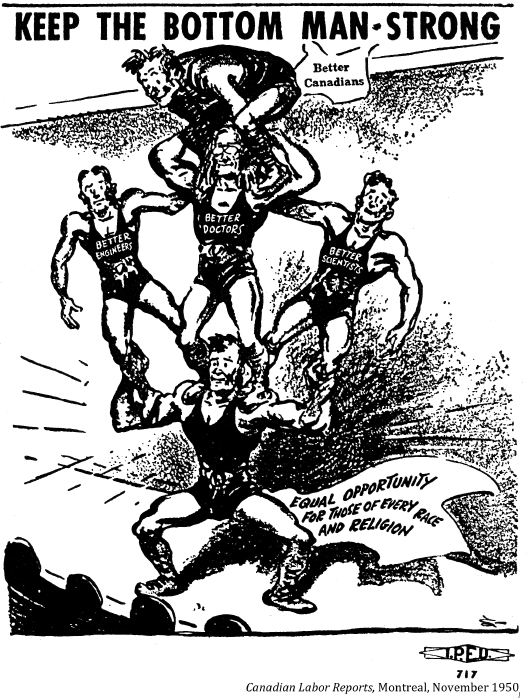
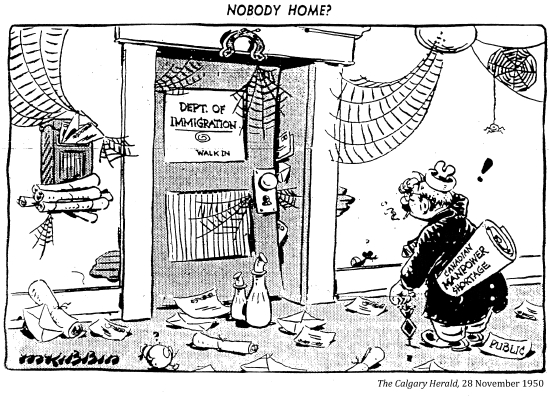

"In these Black history talks, I share the story of my family move to North Vancouver in 1951 and of my siblings and my first day of school there. On that Tuesday morning after Labour Day our feet never touched the school grounds because we were turned back by pelting rocks hurled by children. These kids, with every racist slur imaginable, attempted to achieve what their parents' petition failed to do; keep the neighbourhood white. . . We lived for three years amongst hostile neighbours before we moved from that first home in North Vancouver. Most of them never uttered a word to us. The nine children of the family next door attacked us both verbally and physically on sight."
Valerie Jerome, Teacher, Jan/Feb 2021
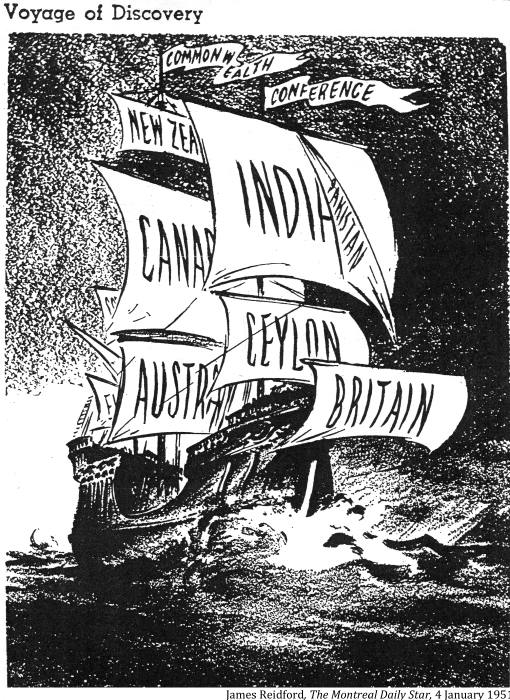
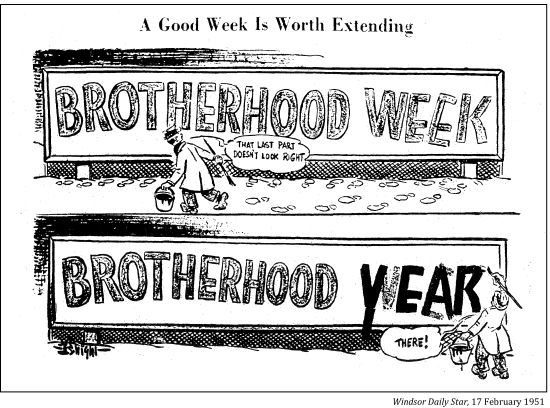


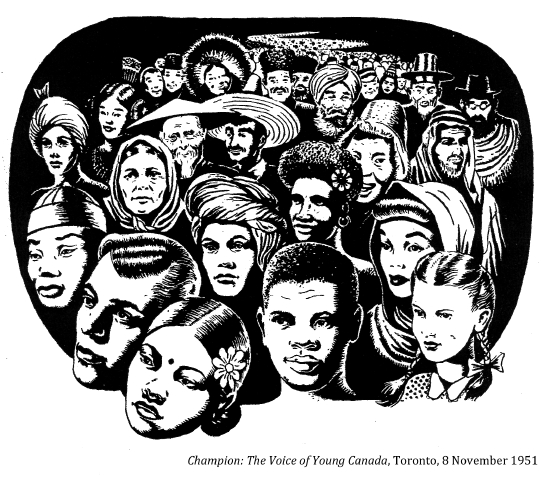
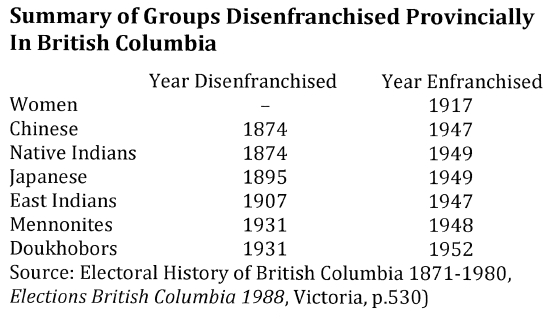
"The hallmark of freedom is a recognition of the sacred personality of man, and its acceptance decries discrimination on the basis of race, or creed or colour. Canadians have a message to give to the world. We are composed of many racial groups, each of which must realize that only by forbearance and mutual respect, only by denial of antagonism or prejudice based on race, or creed, or even surname, can breaches in unity be avoided in our country. National unity in Canada is not only an ideal -- it is a necessity -- based on ordinary common sense."
John Diefenbaker, House of Commons, Introduction to introducing a Bill of Rights, 1952
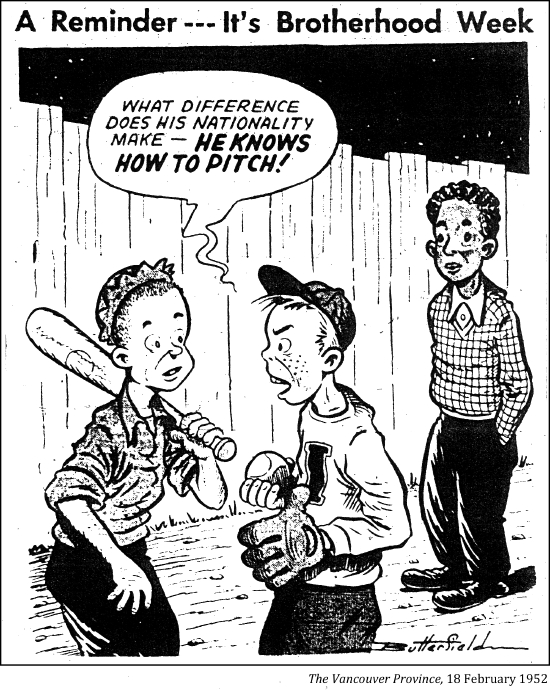
"Evidence of a 'white supremacy' policy in Canada will inevitably tend to discredit us in the eyes of the non-white peoples of the world, both within the Commonwealth and elsewhere."
Resolution, national convention of the CCF, Toronto, August 1952
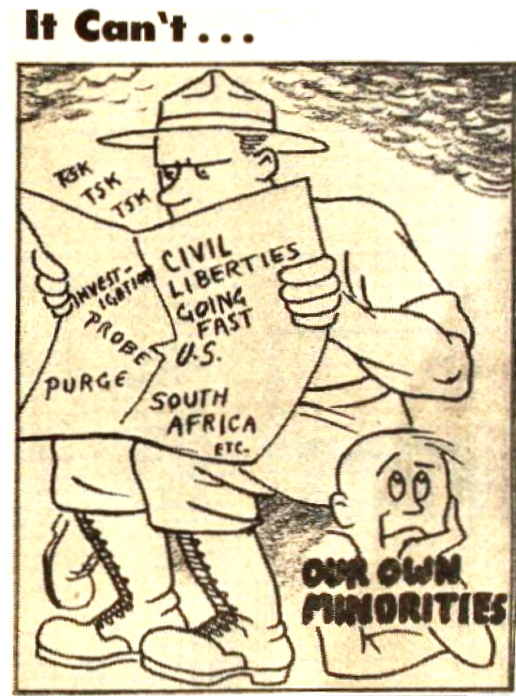
Varsity, Toronto, 7 January 1953
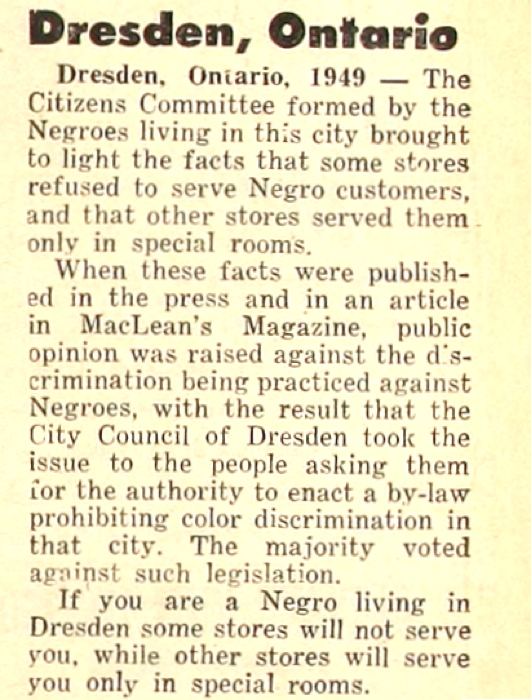
Varsity, Toronto, 7 January 1953

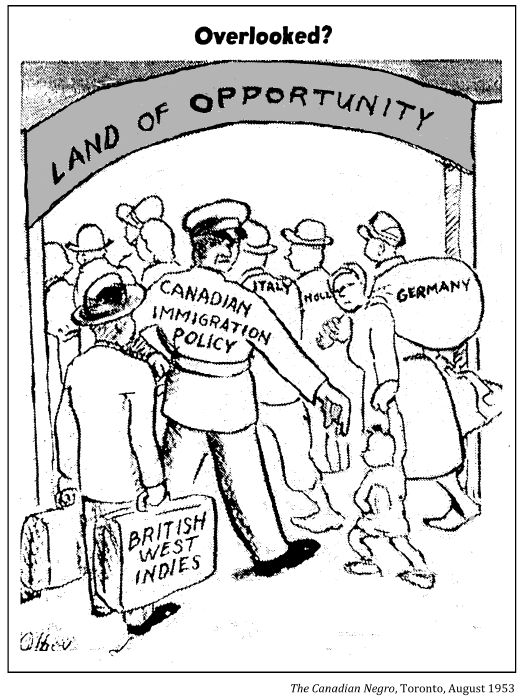
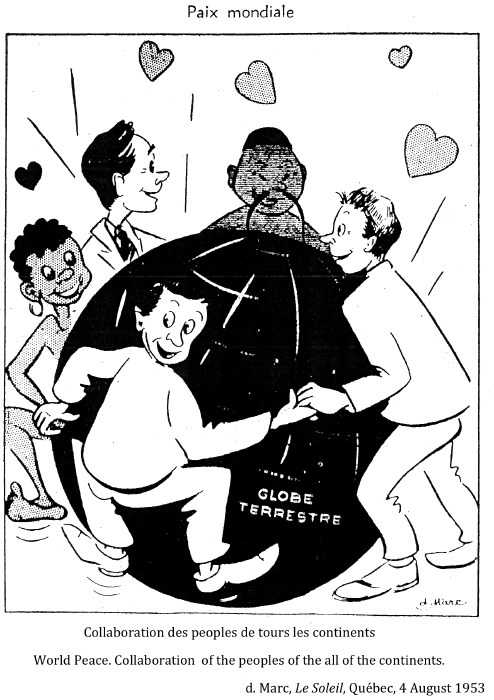
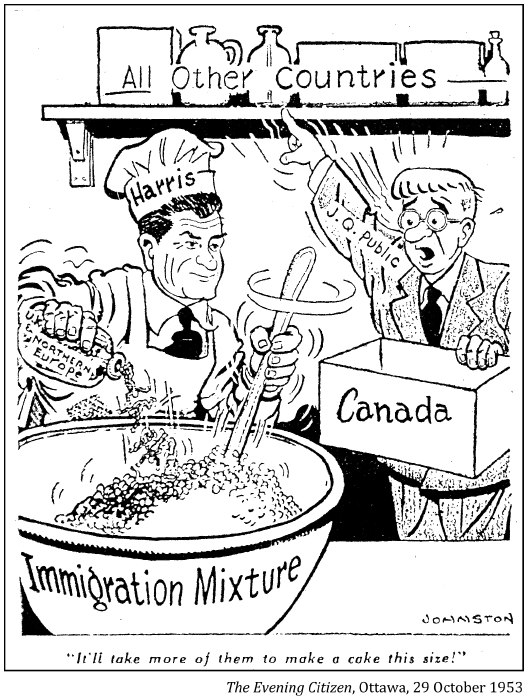
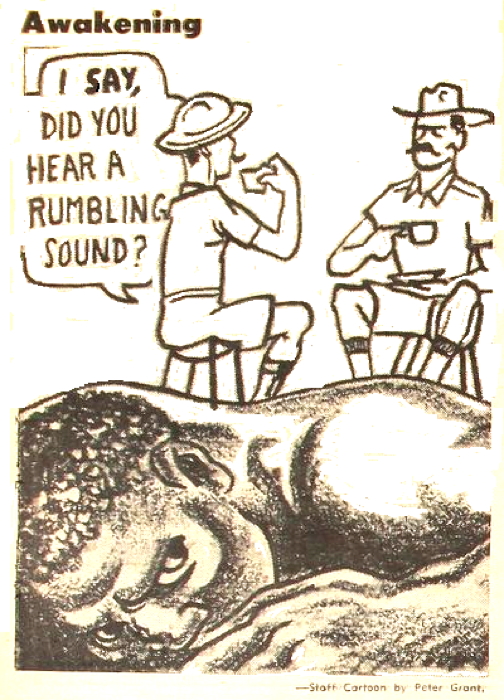
Varsity, Toronto, 3 December 1953
TEN COMMANDMENTS OF GOOD WILL
1.I will respect all men and women, regardless of race and religion.
2.I will protect and defend my neighbor and my neighbor's children against the ravages of racial or religious bigotry.
3.I will exemplify my own life the spirit of goodwill and understanding.
4.I will challenge the philosophy of racial superiority by whomever it may be proclaimed, whether they be kings, dictators or demagogues.
5.I will not be misled by the lying propaganda of those who seek to set race against race or nation against nation. . . .
Brotherhood Week, The Labor Press, 28 February 1954
"To that new conception of an equal partnership of nations and races I shall give myself head and soul, every day of my life."
Queen Elizabeth, Christmas message, Toronto Star Weekly, 16 Jan. 1954
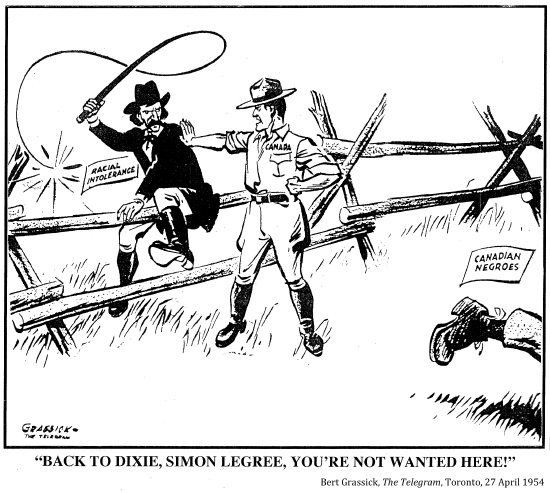
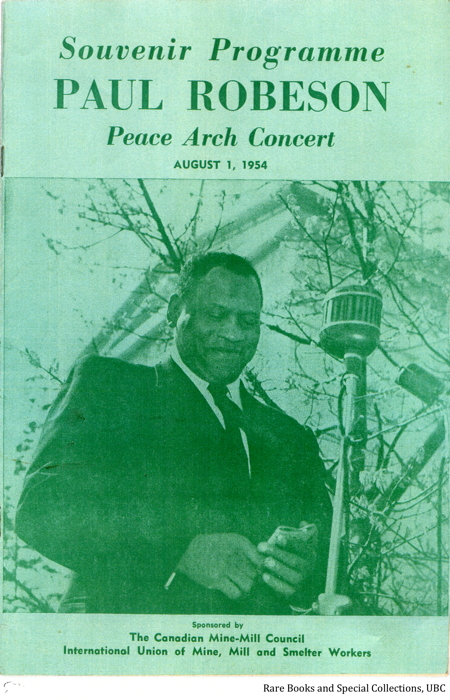
Link to " Robeson Peace Arch Concert Anniversary" website
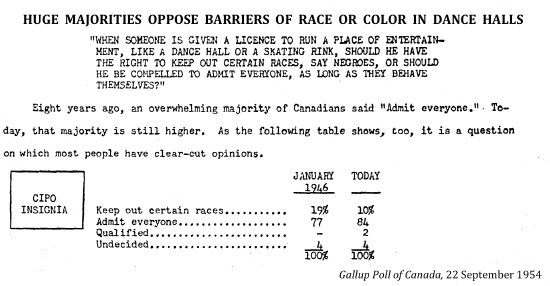
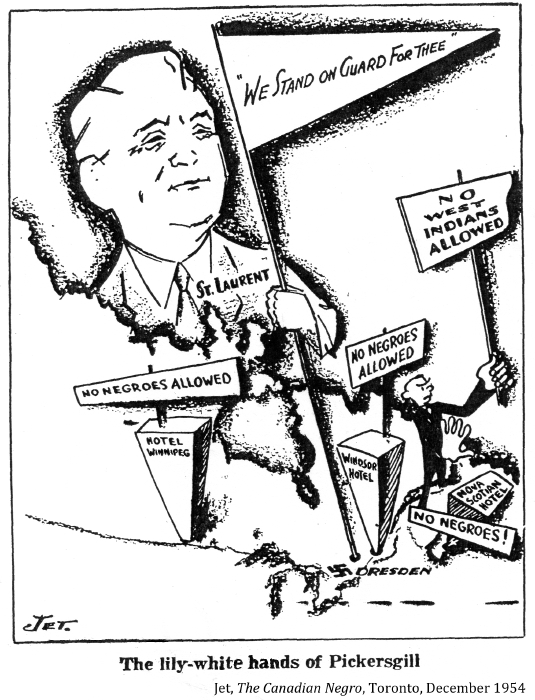

"Land Registry Act
Application for Registration of Fee-simple
Restrictive Covenants
The Corporation of the District of West Vancouver
(a) That the Grantee shall not sell, assign, or transfer the said lands or any interest therein to any person or persons of African or Asiatic race or of African or Asiatic descent and will not lease, let or sublet to any such person or persons the said premises , or any part of such building
7. No person of the African or Asiatic or of African or Asiatic Descent (except servants of the occupants of the premises in residence) shall reside or be allowed to remain on the premises."
25 April 1955
"The colour bar was unwritten but ironclad. Even the world renowned opera singer Marian Anderson and her entourage were refused accommodation at the Vancouver Hotel."
Valerie Jerome, Races

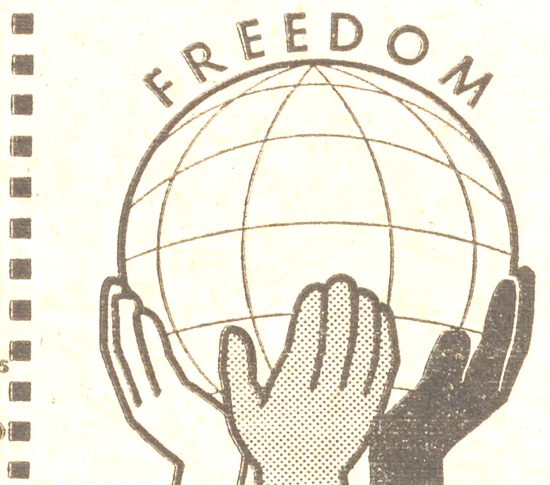
Freedom, New York, February 1955

https://www.canadashistory.ca/explore/arts-culture-society/a-brief-parole
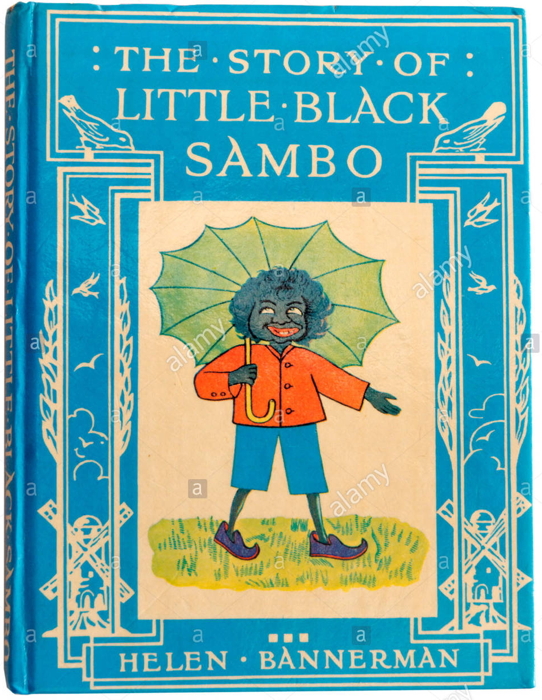
This book was banned in Toronto schools in 1956.
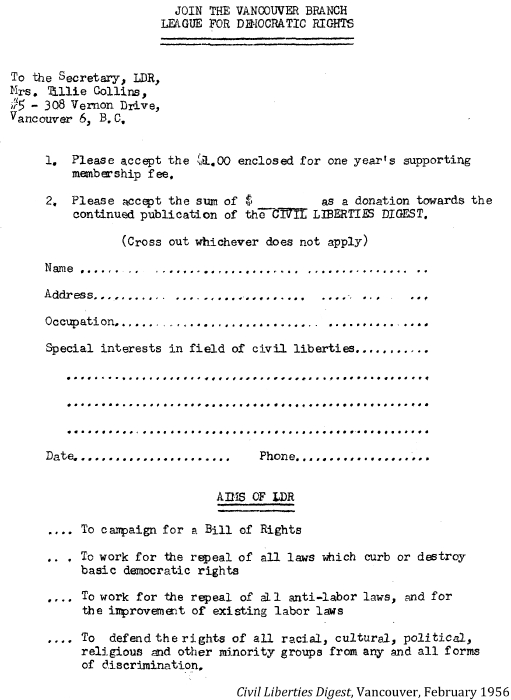
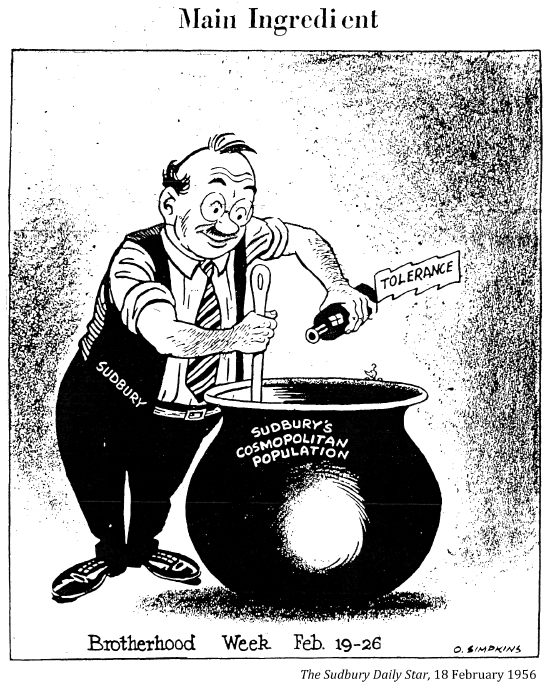
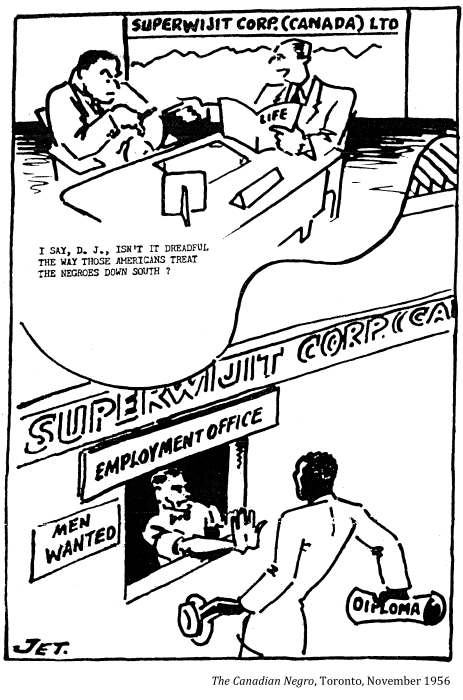
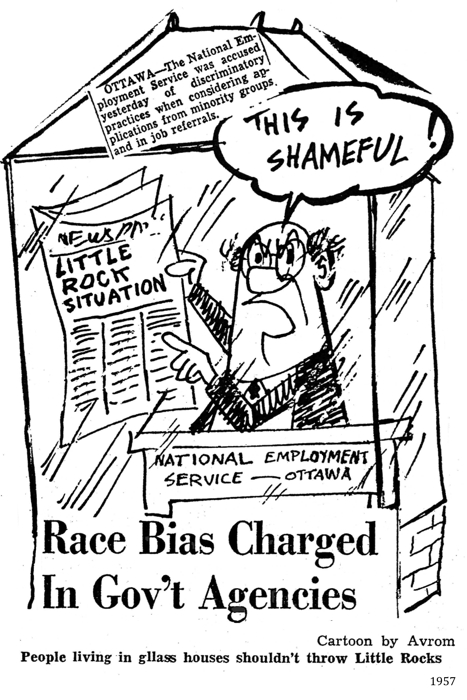
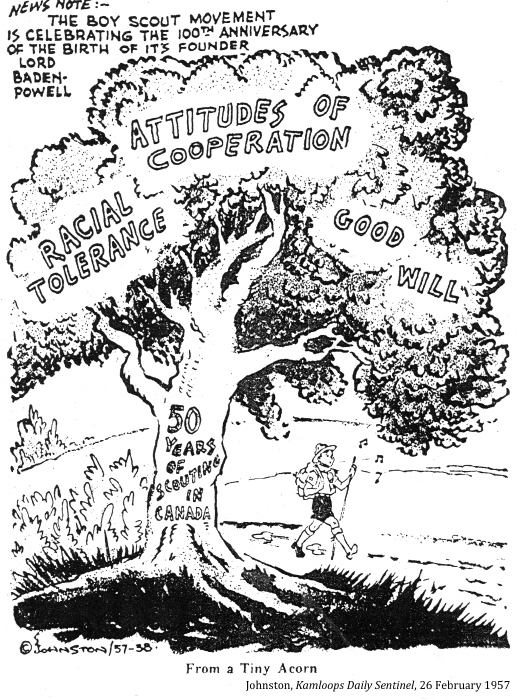
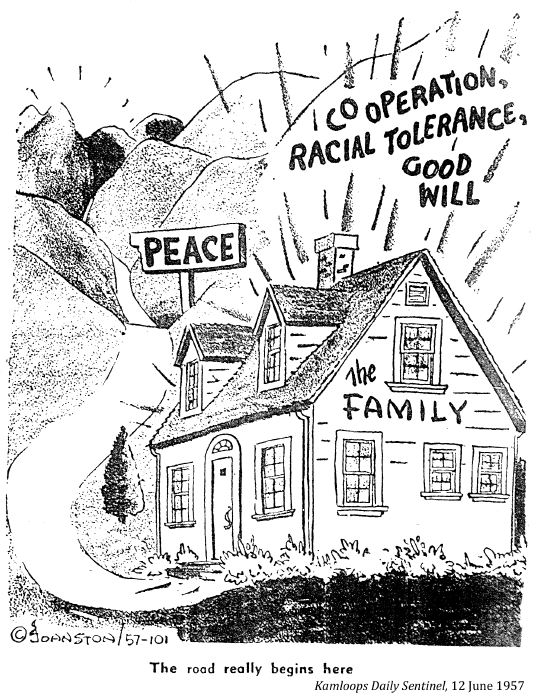
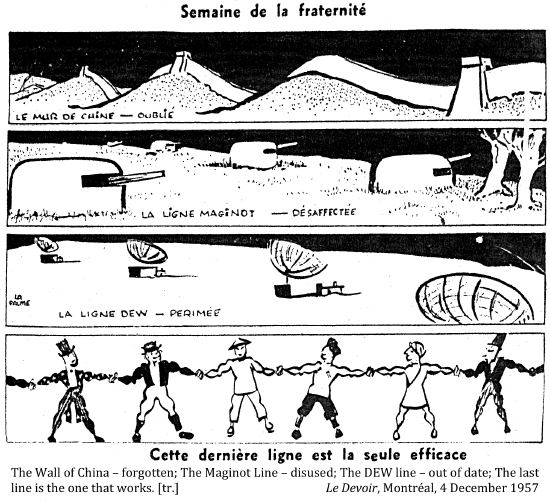
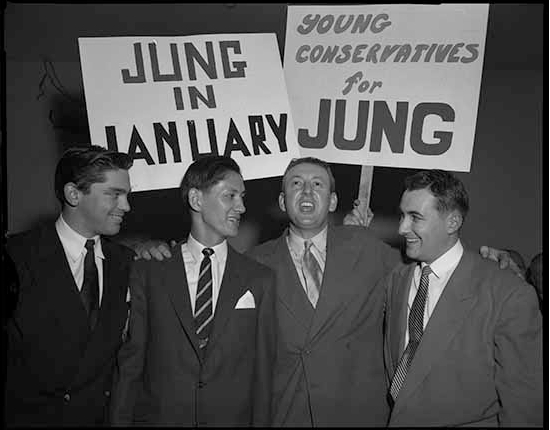
Douglas Jung was the first Canadian of Chinese extraction to have been elected a Member of Parliament. 1958, Vancouver Public Library 41618B
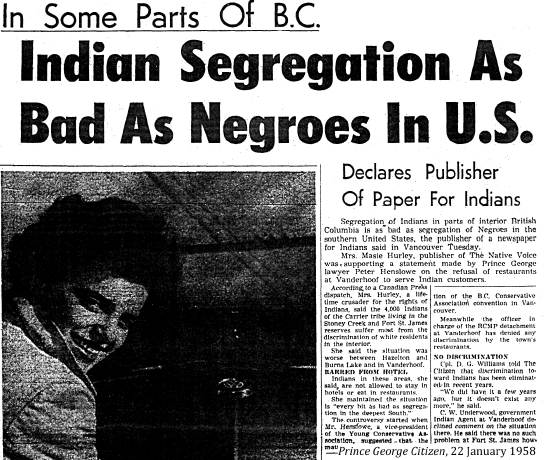
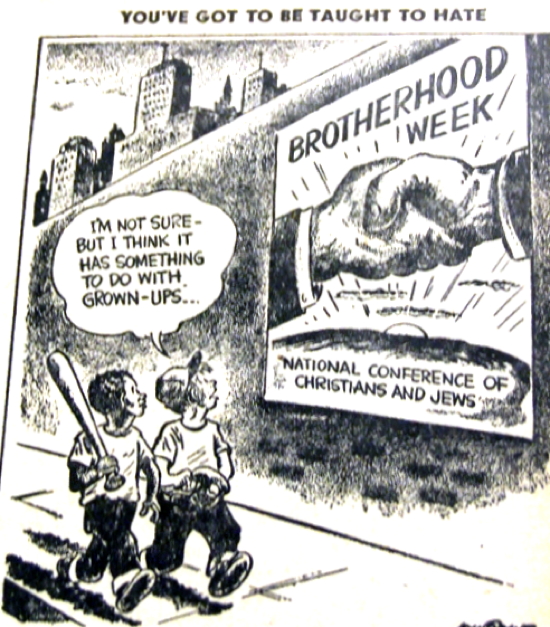
The Family of Man, Southwestern Jewish Press, 21 February 1958
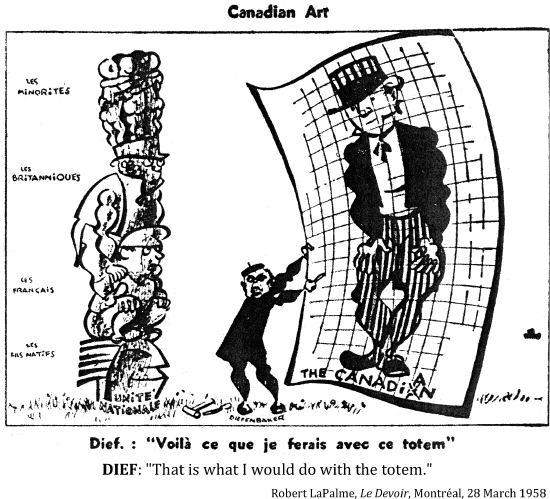
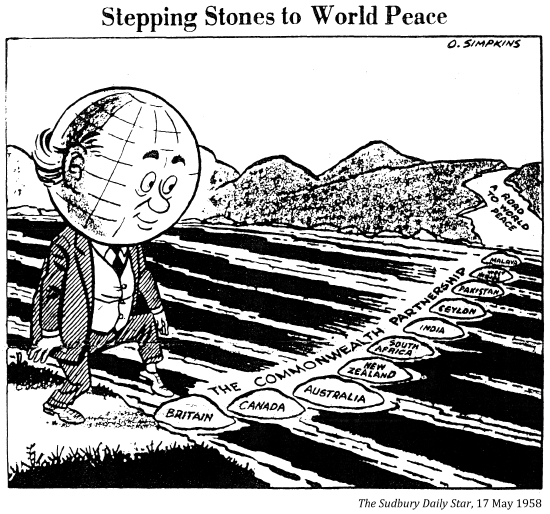
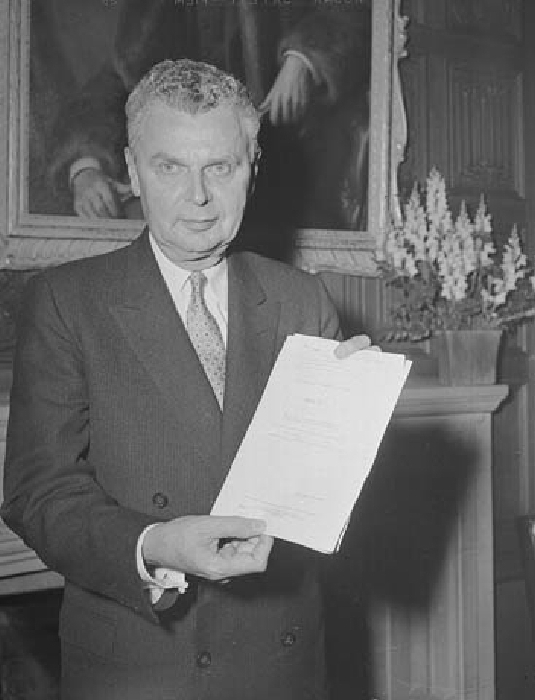
Prime Minister John G. Diefenbaker with "Bill of Rights", 1958, LAC PA-112659
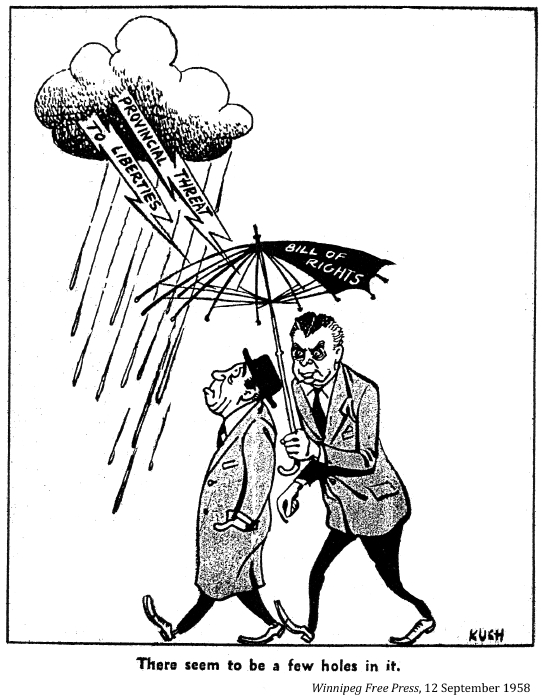
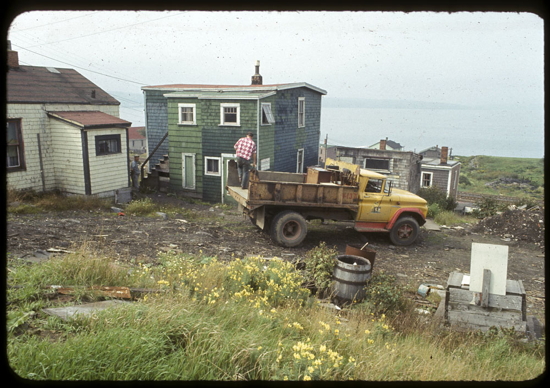
Dorothy Carvery the Day She Moved. She and Other Africville Residents, were moved using City of Halifax Dump Trucks, 1959-1981, LAC e002283009
"IF COLOURED PEOPLE CAME TO LIVE NEXT DOOR, WOULD YOU MOVE YOUR HOME?"
Says Canada:
Yes would definitely move 5%
Might do so 14
No, would not move 81
Canadian Institute of Public Opinion, Gallup Poll of Canada, 7 January 1959
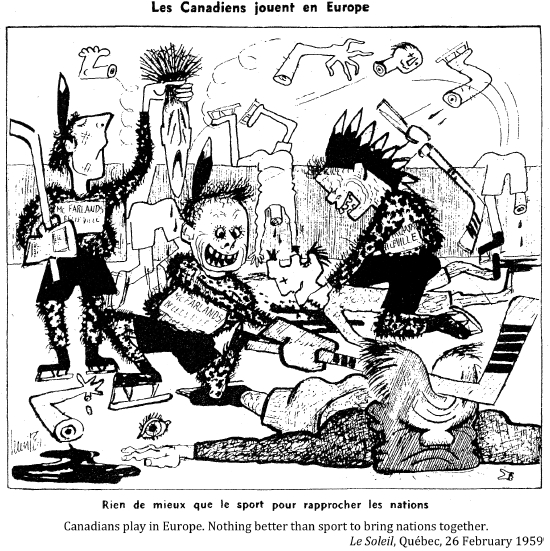
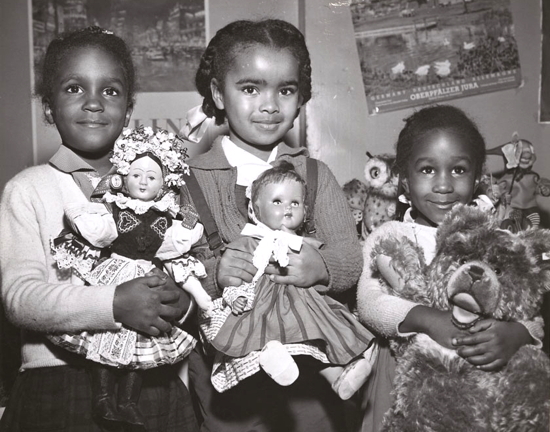
Three young girls at Brotherhood Week at the Negro Community Centre in Montreal - (left to right) Eleitha Haynes, Elizabeth Phillips, Camille Haynes. rois jeunes filles participant à la Brotherhood Week au Negro Community Centre de Montréal - (de gauche à droite) Eleitha Haynes, Elizabeth Phillips, Camille Haynes. Dave Legget, Canada. Dept. of Manpower and Immigration LAC 1972-047 NPC, 23 February 1959

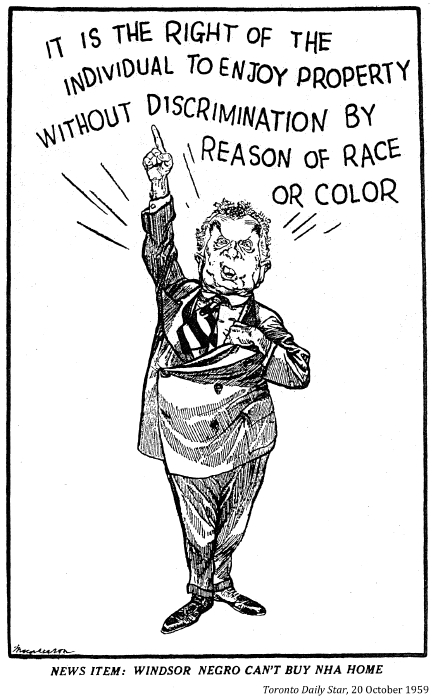
Reproduced courtesy of Forestar Syndication Services
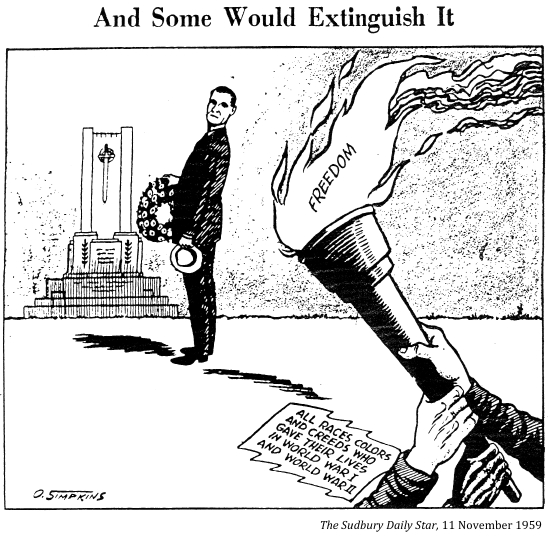
"[Canada is not] a melting pot in which the individuality of each element is destroyed in order to produce a new and totally new element. It is rather a garden into which have been transformed the hardiest and brightest flowers from many lands, each retaining in its new environment the best qualities for which it was loved and prized in its native land."
John Diefenbaker,1960?
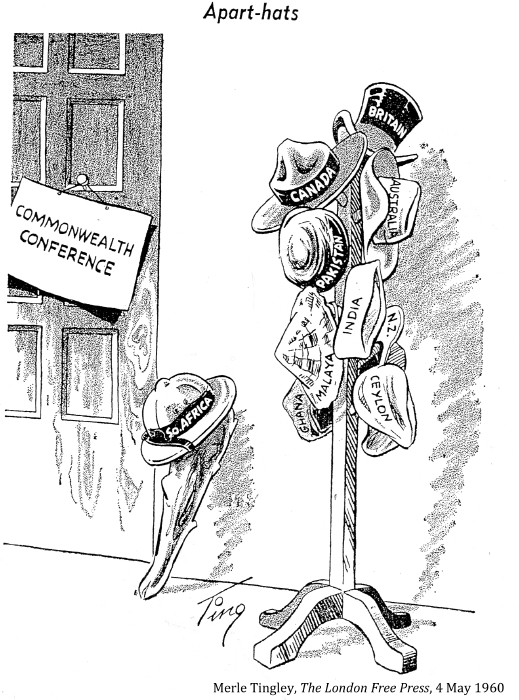
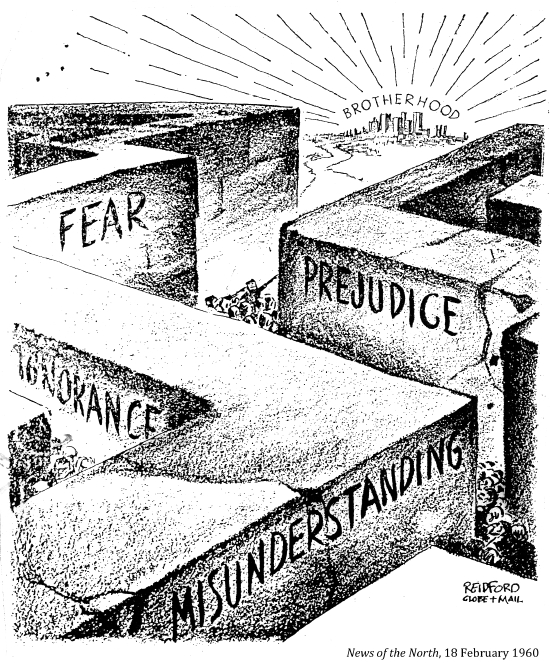
"What will a Canadian Bill of Rights do? It will declare that the following rights and freedoms are in existence and that no Act of the Parliament of Canada in the past or in the future (subject to the security demands of war) shall be permitted to interfere with them:
•The right of the individual to life, liberty, security of person and enjoyment of property and the right not to be deprived thereof except by due process of law;
•The right of the individual to protection of the law without discrimination by reason of race, national origin, colour, religion or sex;
•Freedom of religion;
•Freedom of speech;
•Freedom of the press.
It will declare the principle that every individual, whatever his colour, race or religion, shall be free from discrimination and will have guaranteed equality under the law. This is so important today, for wherever discrimination exists in the world there you have a seed-bed for Communism."
John Diefenbaker, 30 June 1960
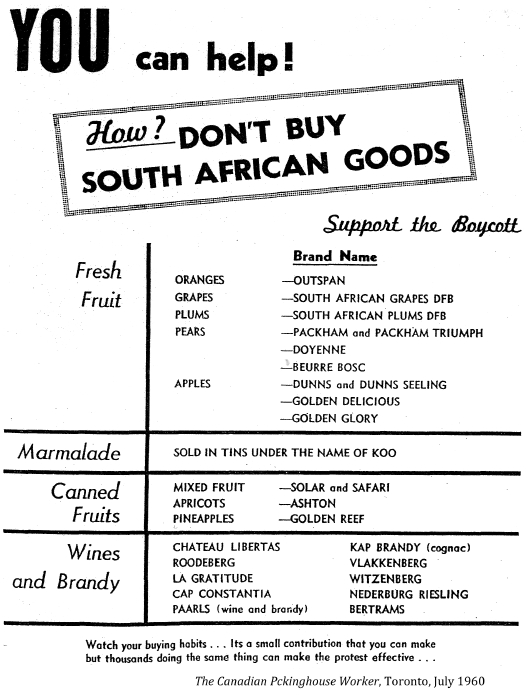
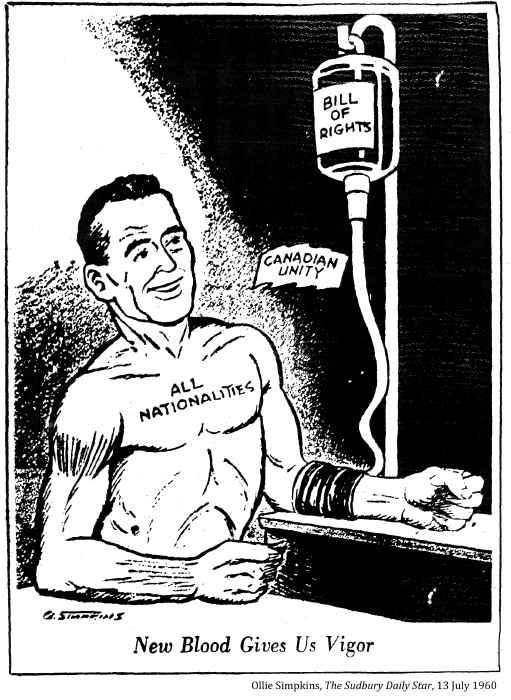
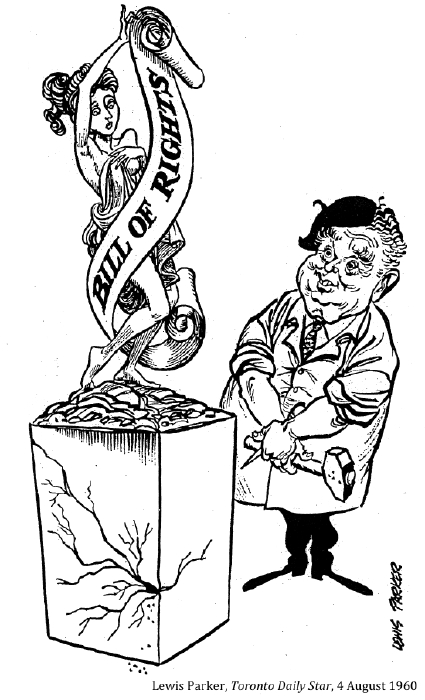
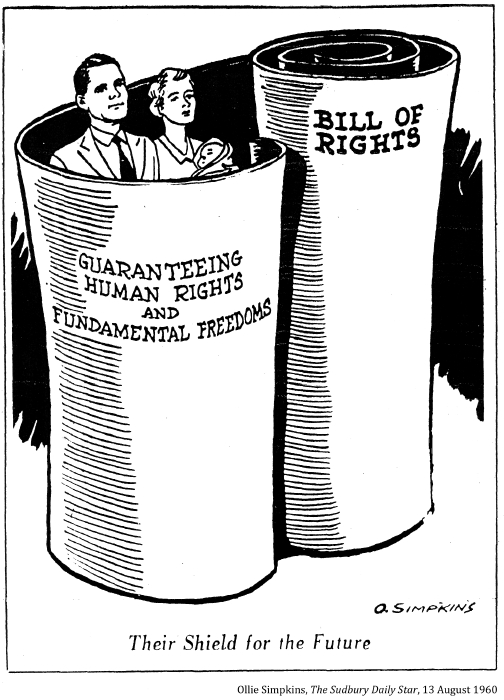
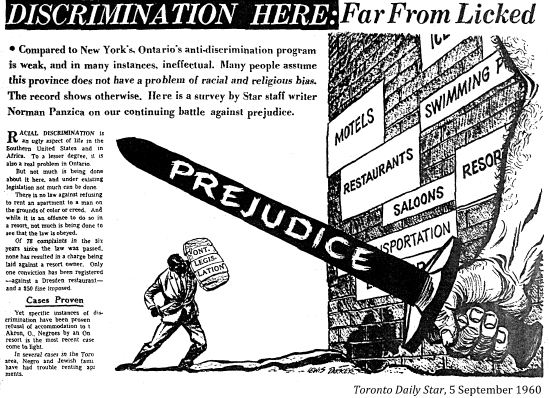
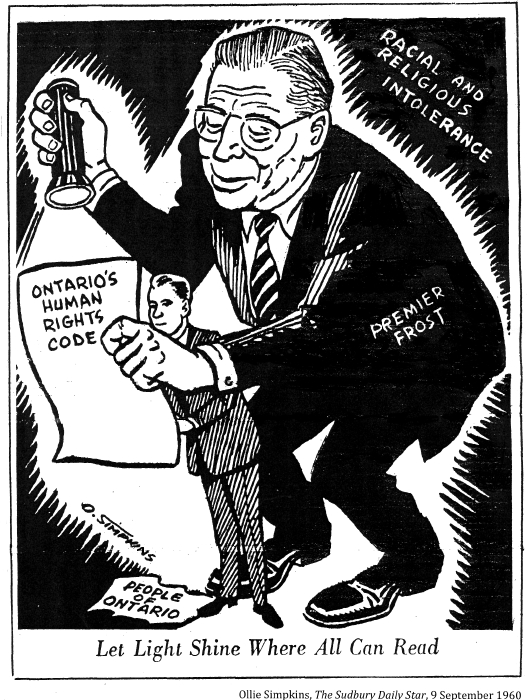
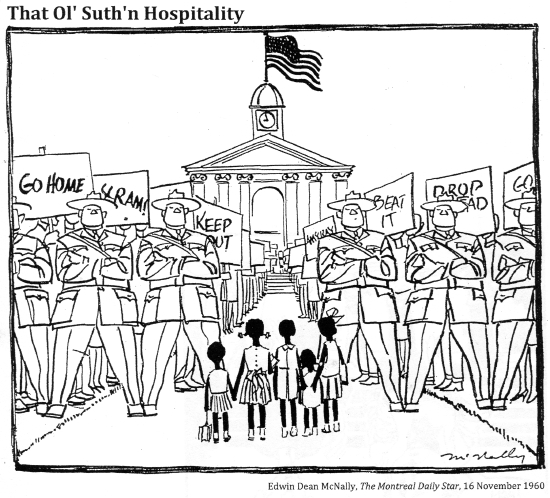
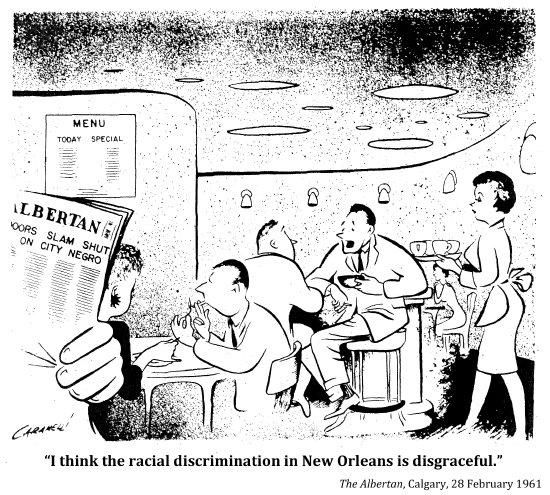
"Day after day they [Harry and Wendy Jerome; Harry was an Canadian Olympic gold medalist sprinter] they combed the newspaper's classified listings for apartment vacancies. They applied at many addresses, only to be told that the apartment had just been rented. Then they'd see the vacancy still being advertised. More than once Harry and Wendy would return to confront the landlord who'd turn them away. Some of these men became abusive; others blamed their other tenants, who wouldn't want to live with a Black man in the building, or the building's owner."
Valerie Jerome, Races

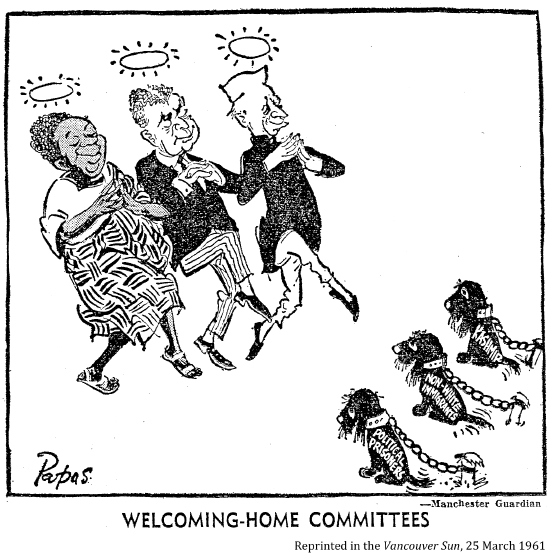
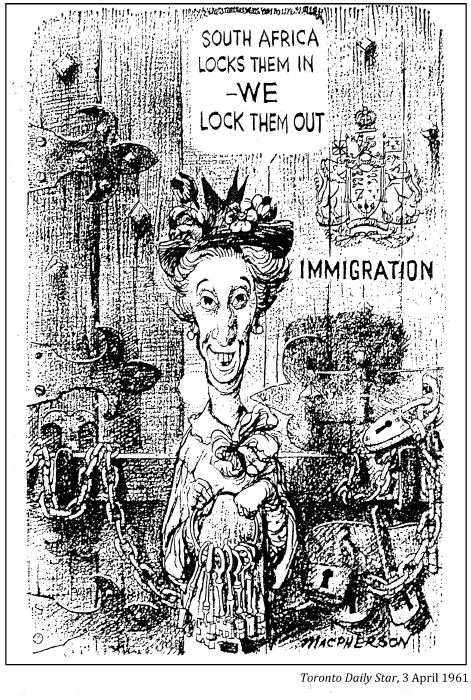
Reproduced courtesy of Forestar Syndication Services

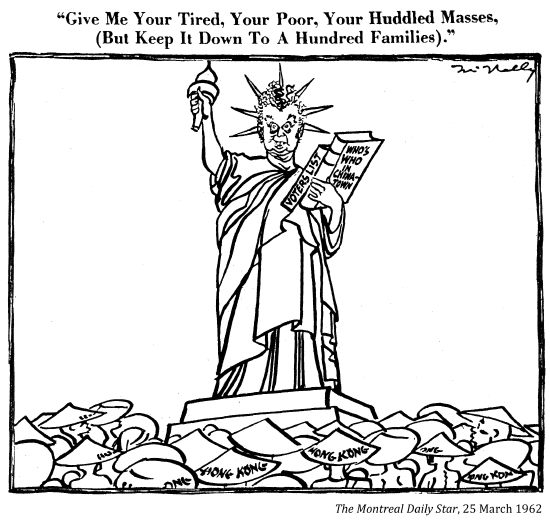
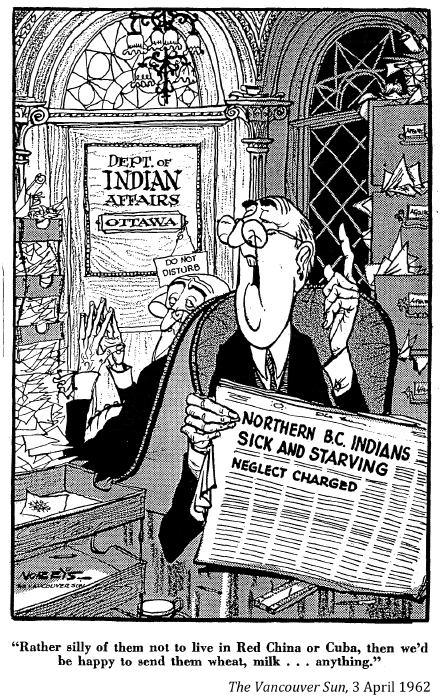
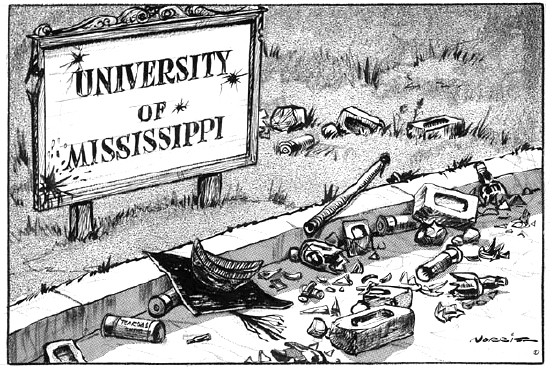
Len Norris, The Vancouver Sun, 3 April 1962
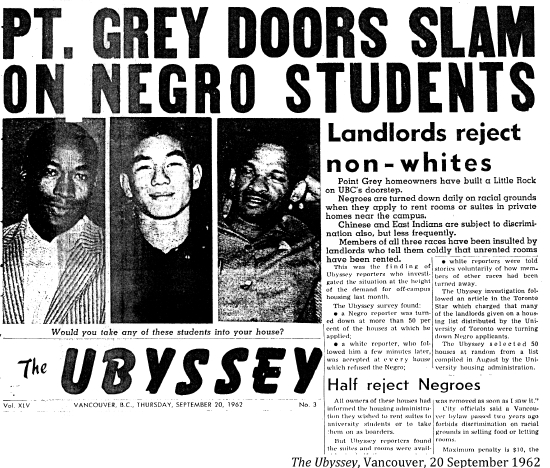
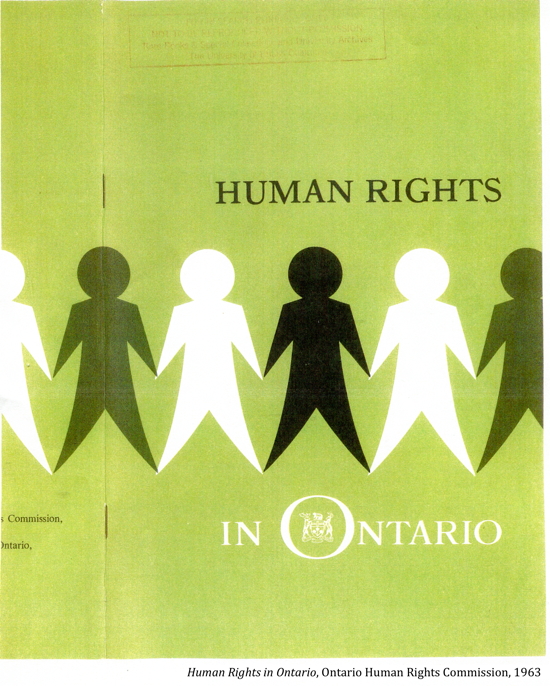
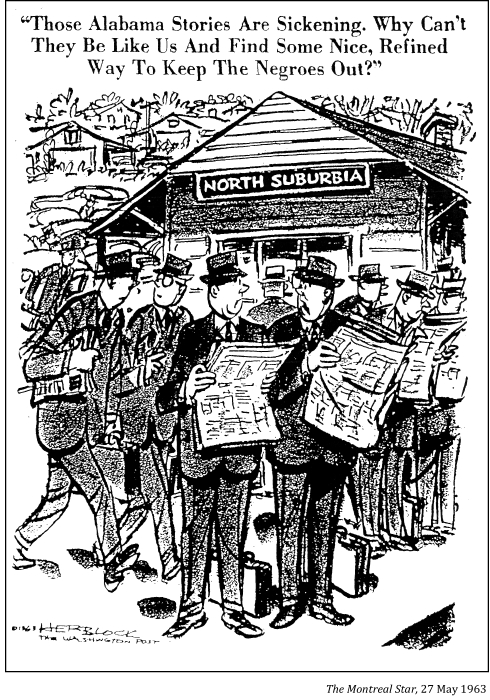
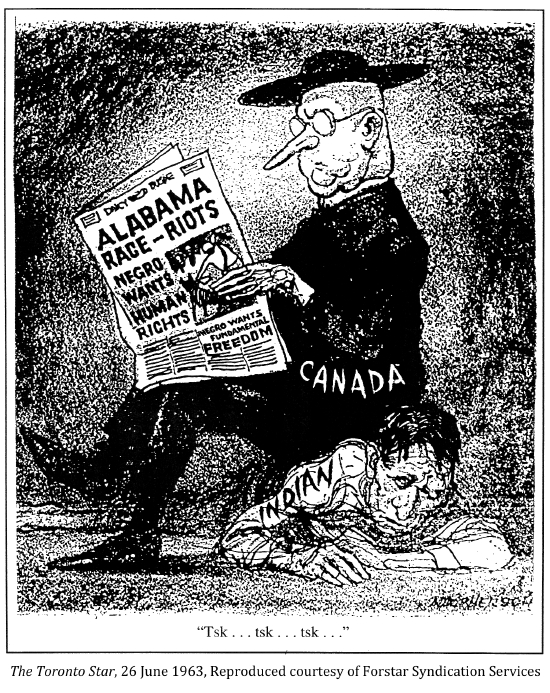
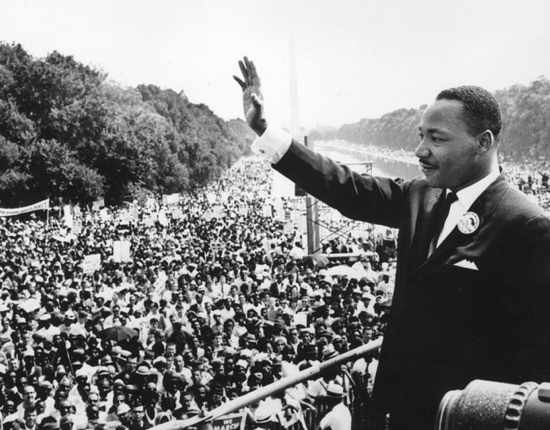
"I look to a day when people will not be judged by the color of their skin, but by the content of their character."
Martin Luther King, Jr. , 26 August 1963
"We may have all come on different ships, but we're in the same boat now."
Martin Luther King
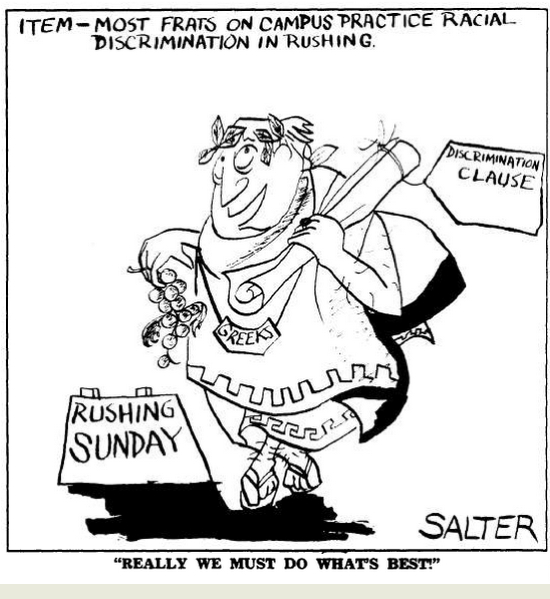
Salter, The Gateway, Edmonton, 1 November 1963
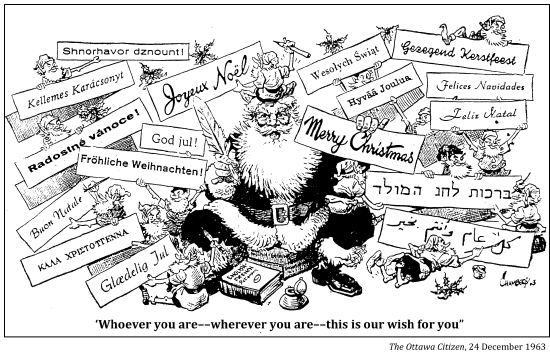
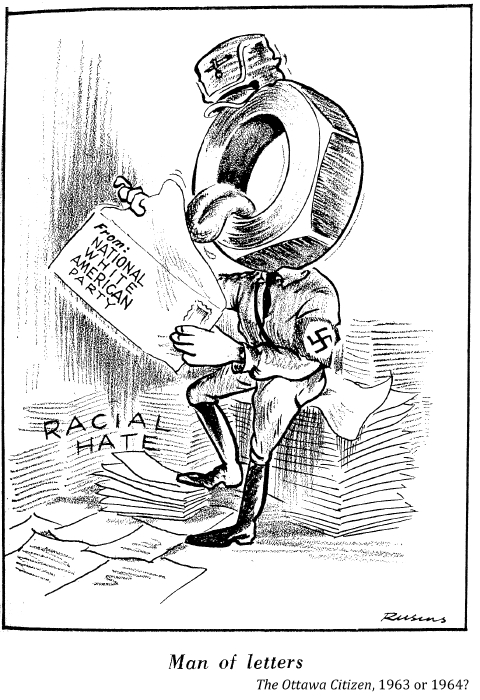
[Canadian Civil Liberties Association fights for the civil liberties, human rights, and democratic freedoms of all people across Canada. Founded in 1964, we are an independent, national, nongovernmental organization, working in the courts, before legislative committees, in the classrooms, and in the streets, protecting the dignity and rights of people in Canada.]
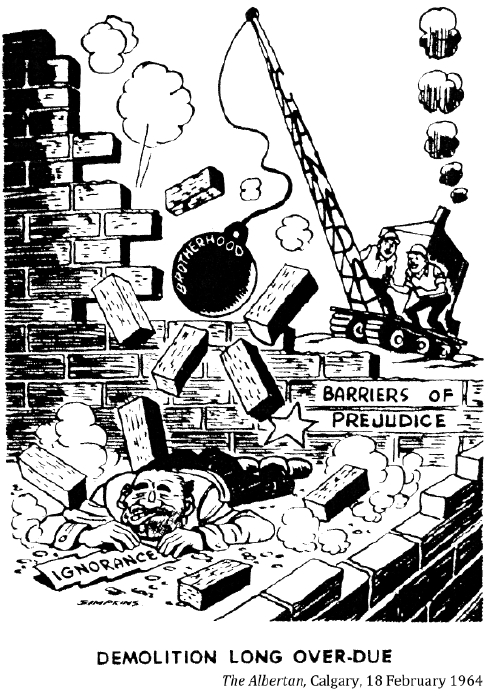
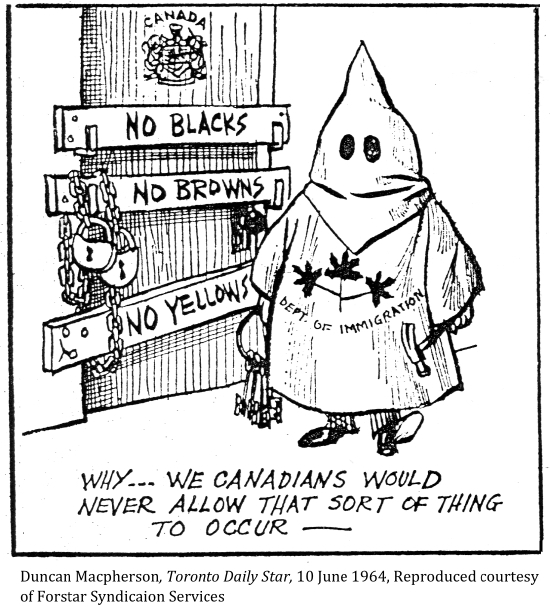
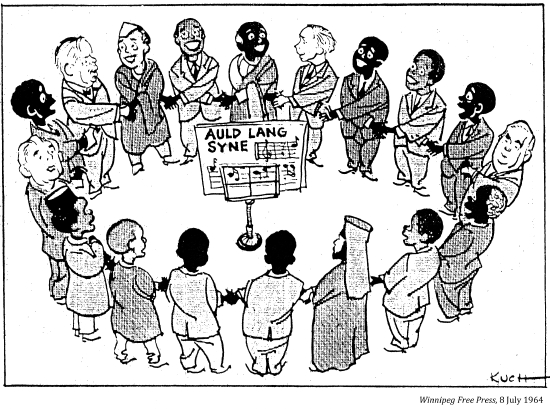
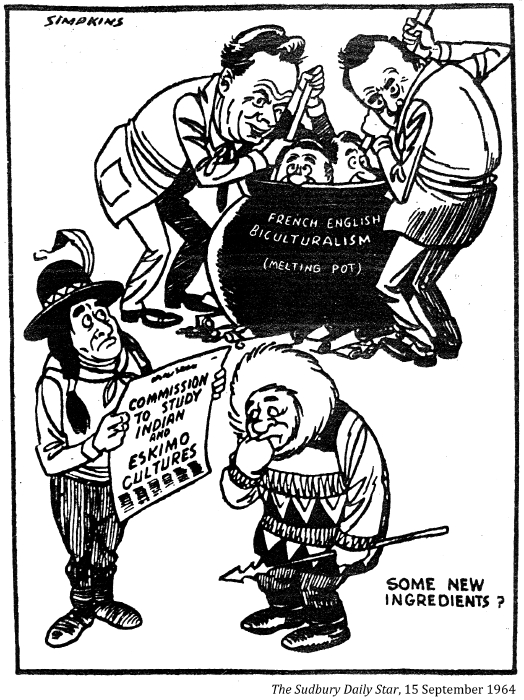
"We all drink from the same stream."
Native proverb
"I liken Canada to a garden . . . a garden into which have been transplanted the hardiest and brightest flowers from many lands, each retaining in its new environment the best of the qualities for which it was loved and prized in its native land."
John G. Diefenbaker
"What image of Canada would do justice to the presence of these varied ethnic groups? This question preoccupied western participants especially, and the answer they often gave was 'multiculturalism,' or, more elaborately, 'the Canadian mosaic.' They asked: if two cultures are accepted, why not many? Why should Canada not be a country in which a multitude of cultural groups live side by side yet distinct from one another, all contributing to a richly varied society? Certainly, it was stated, the mosaic idea was infinitely preferable to the 'melting pot.'"
Royal Commission on Bilingualism and Biculturalism, 1965
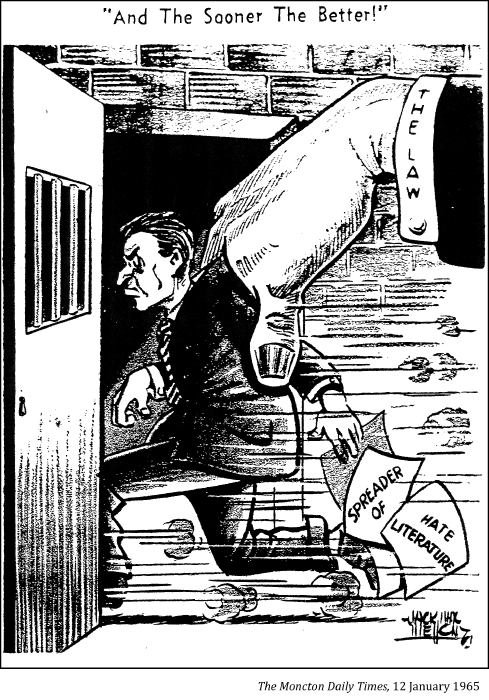
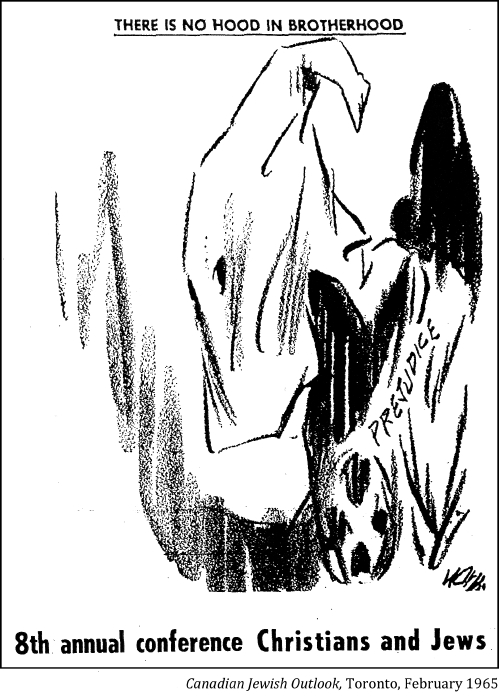
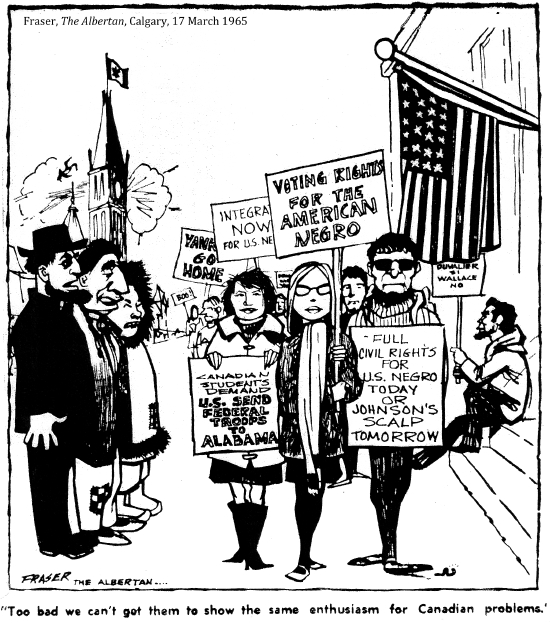
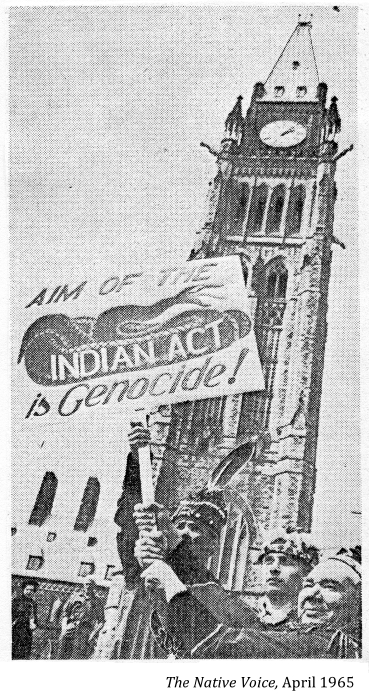
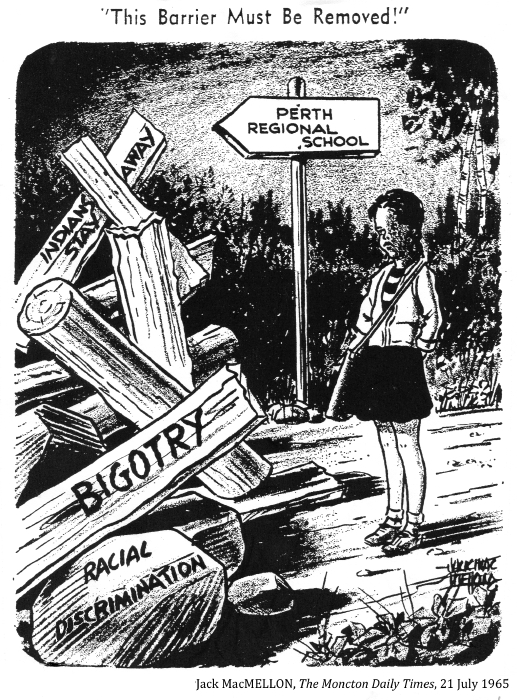
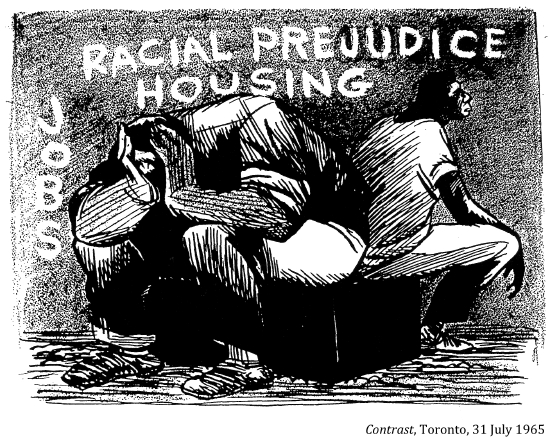
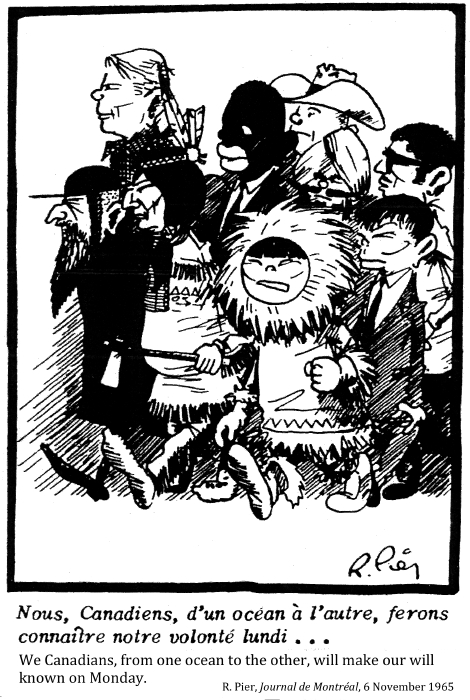
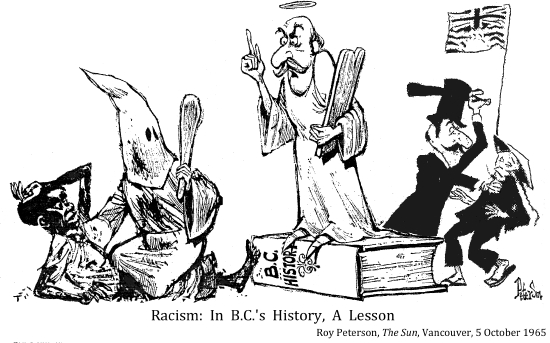
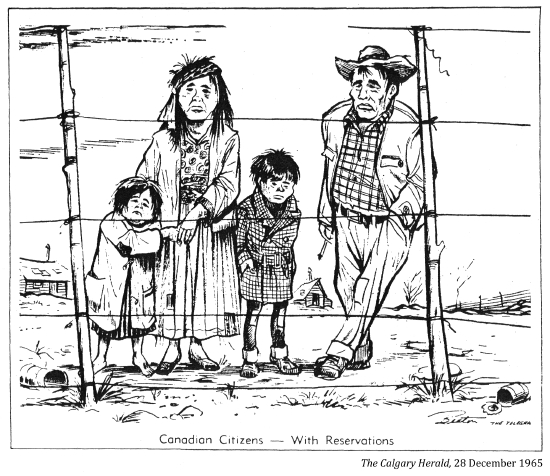
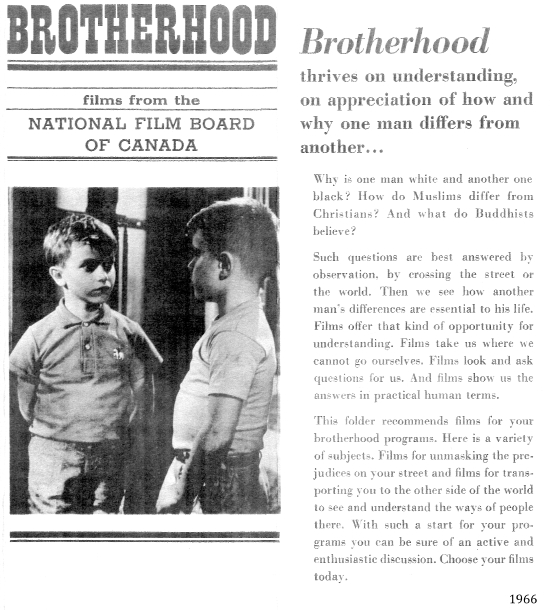
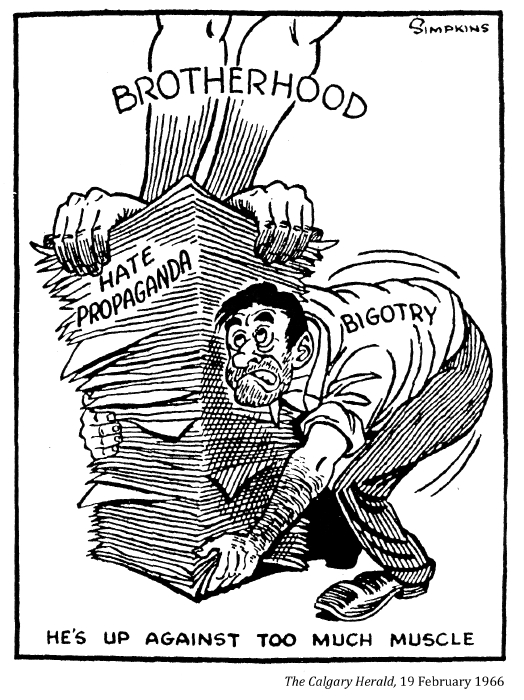

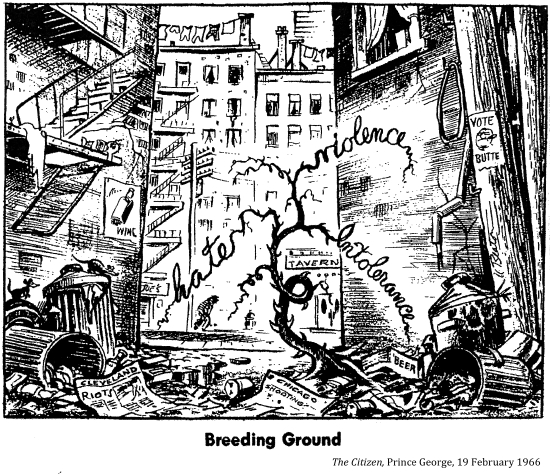

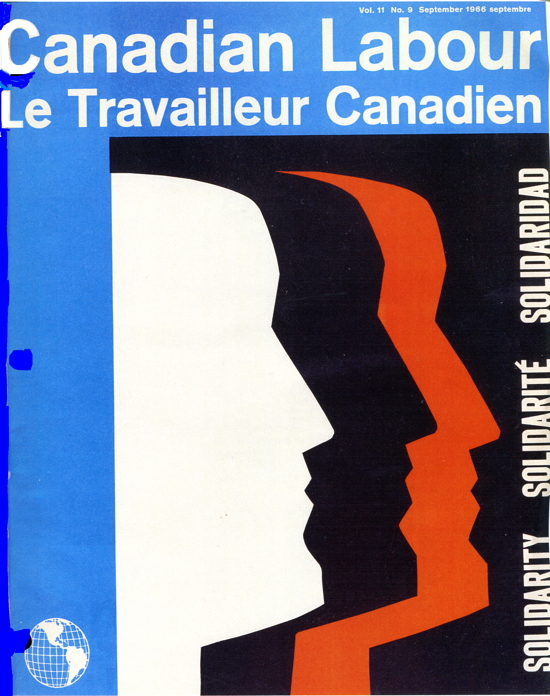
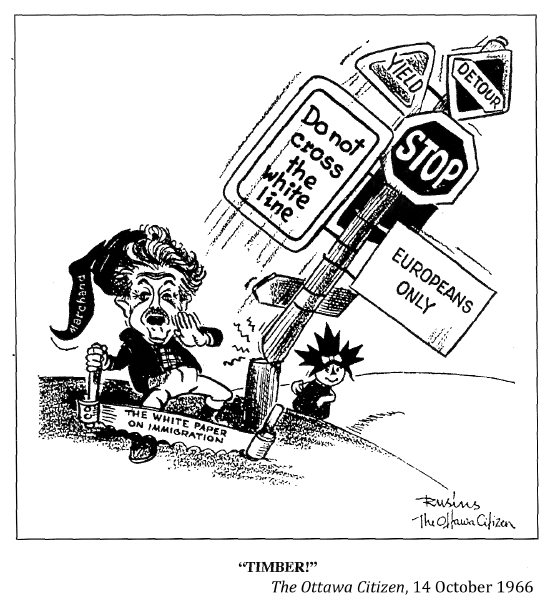
"It [the Immigration Bill] is non-discriminary. It establishes principles and procedures that can and will operate entirely without regard to race, colour or creed."
Hon. Jean Marhand, Debates House of Commons, 14 October 1966
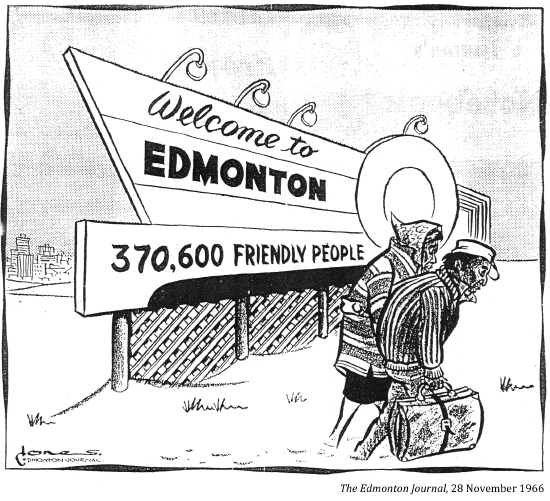
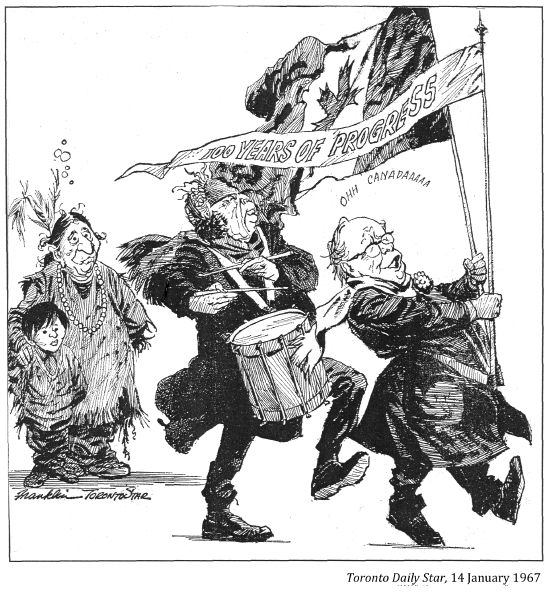
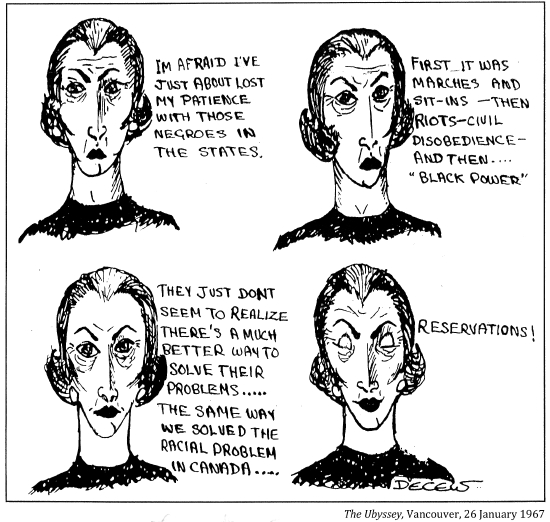
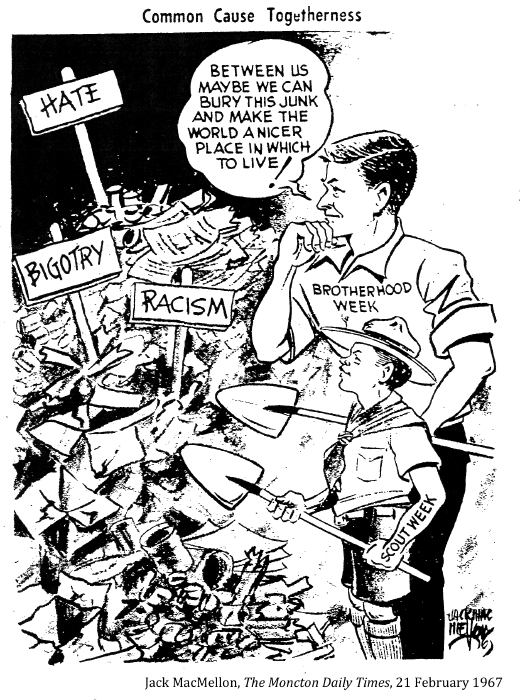
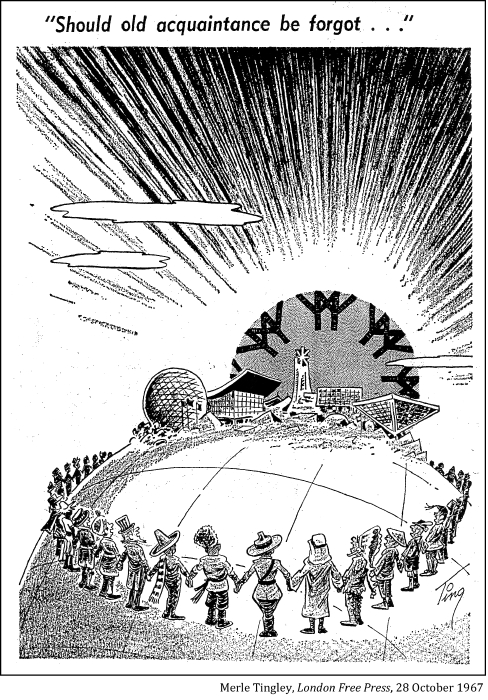
"For me, this beautiful, rich and energetic country of ours can become a model of the just society, in which every citizen will enjoy his fundamental rights, and in which every individual will find fulfillment. That is Canada."
Pierre Elliot Trudeau, Liberal convention, 5 April 1968
"There is a strong desire among Canadians not only to make it possible for both language groups and our many cultural communities to co-exist in all parts of the country without assimilation, but to take advantage of our diversity."
Pierre Elliot Trudeau, telegram, 26 June 1968
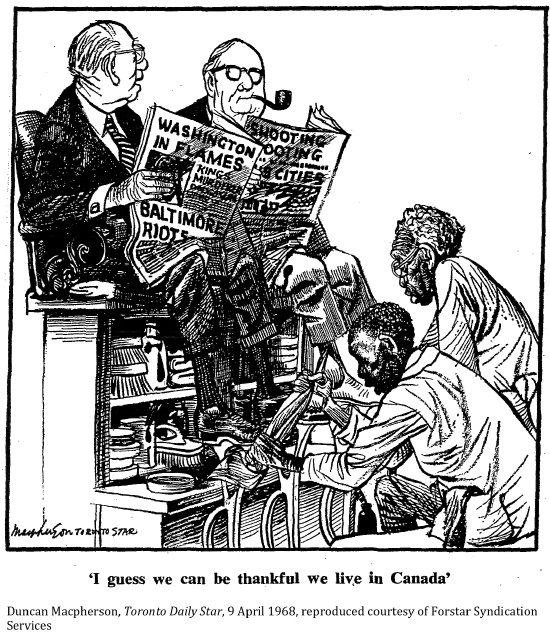
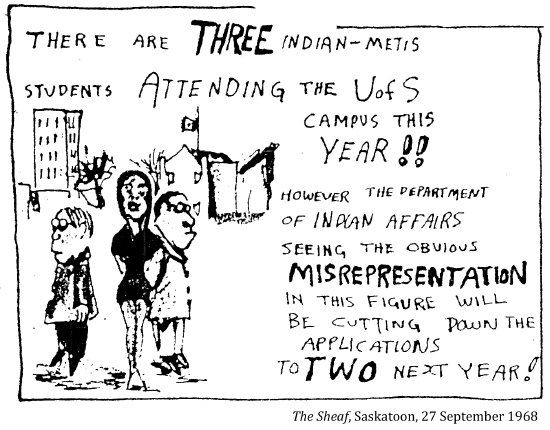
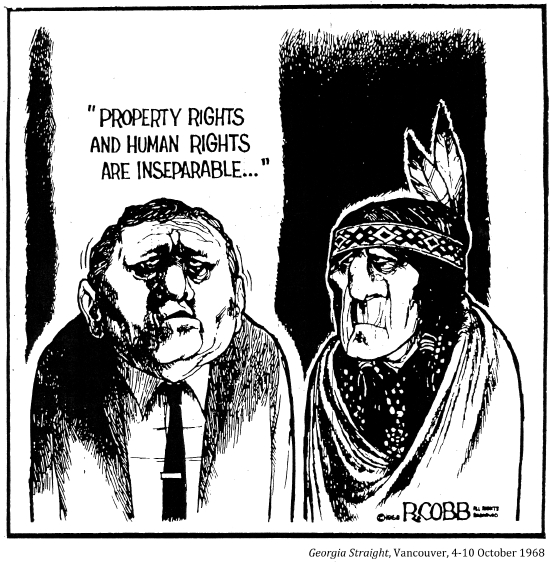
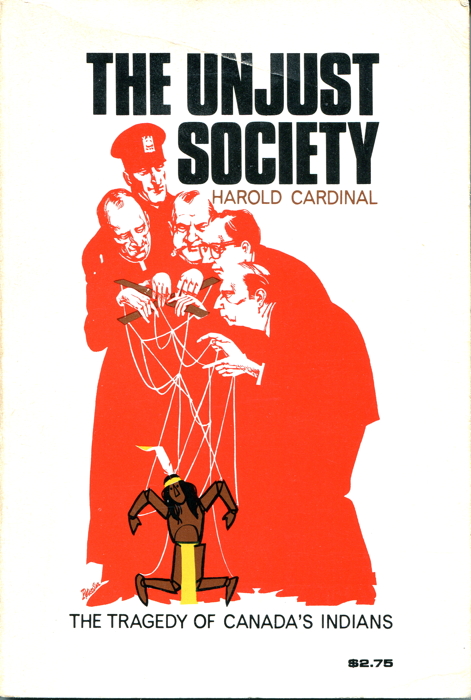

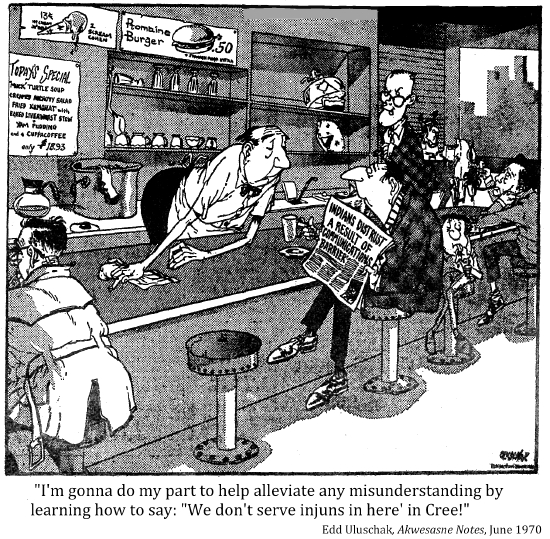
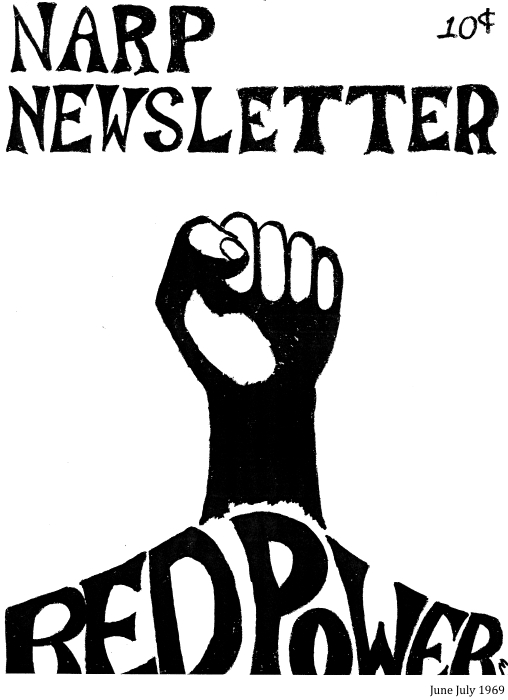
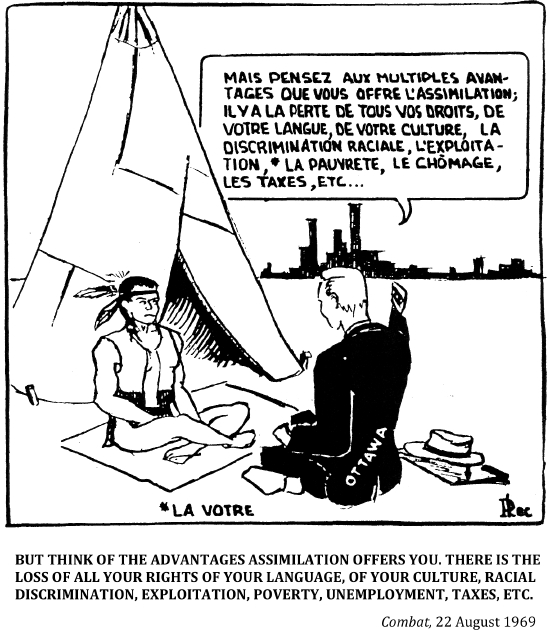
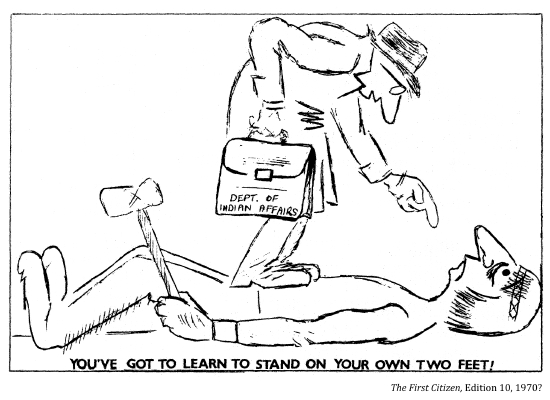
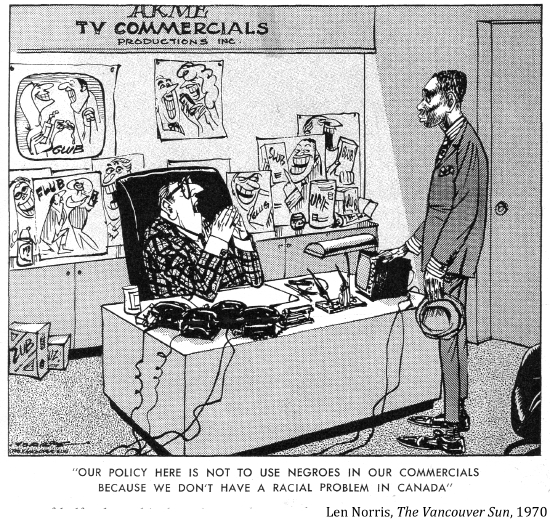
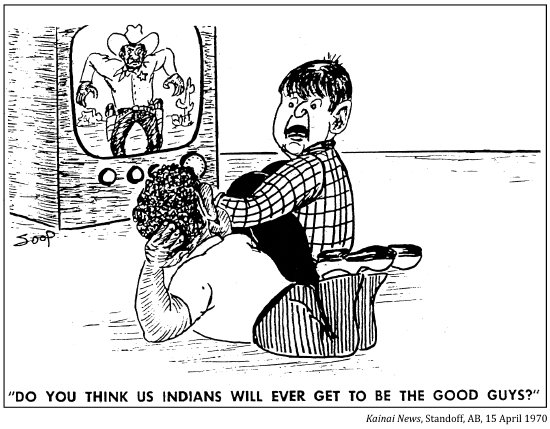

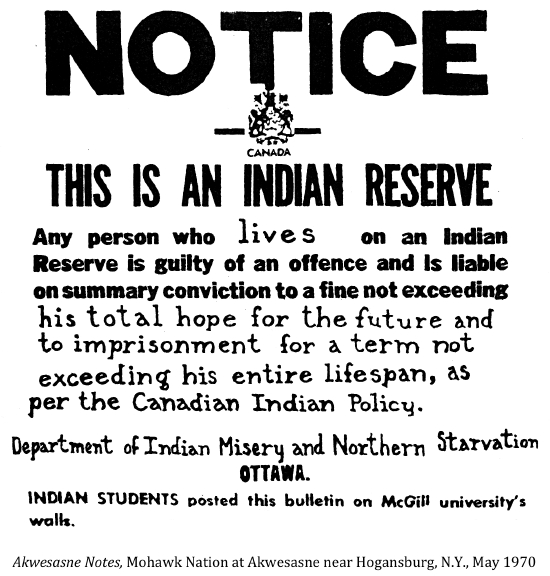
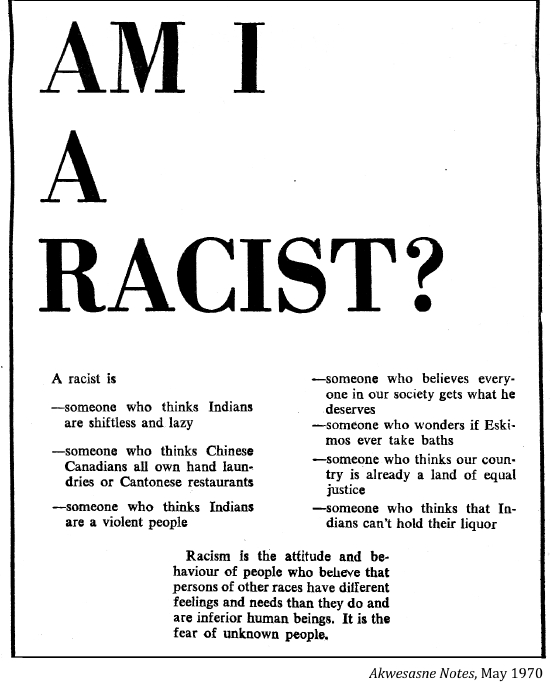
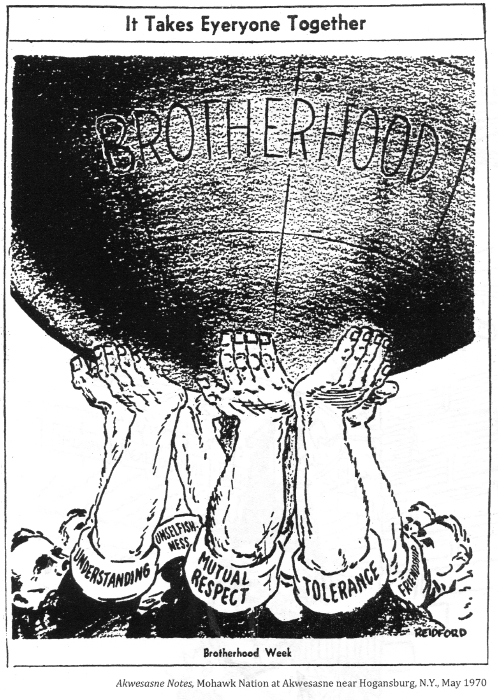
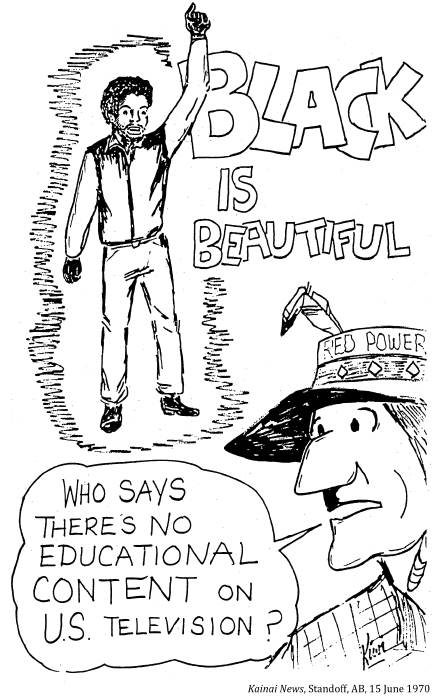
"How dull and ordinary Canada would be if it were inhabited by people all alike, with the same tastes and dislikes, the same language even. We are more fortunate than many nations in having escaped such uniformity and we can learn to live in harmony, enjoying richer and more satisfying lives without being pressed into the same mold."
Editorial, The Sun, Vancouver, 30 June 1970
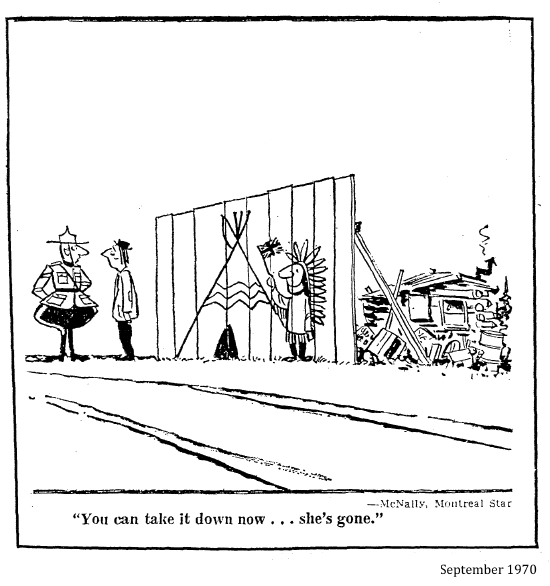
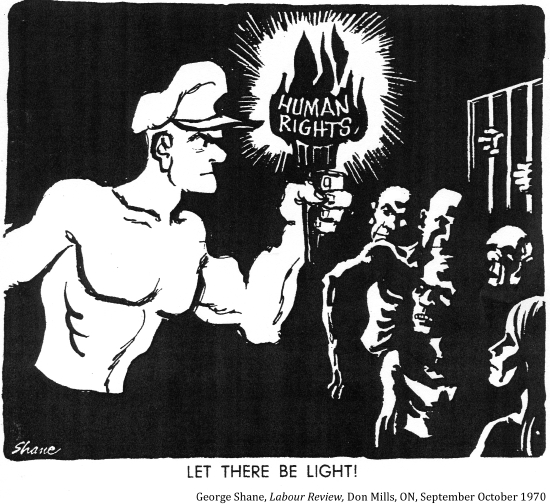
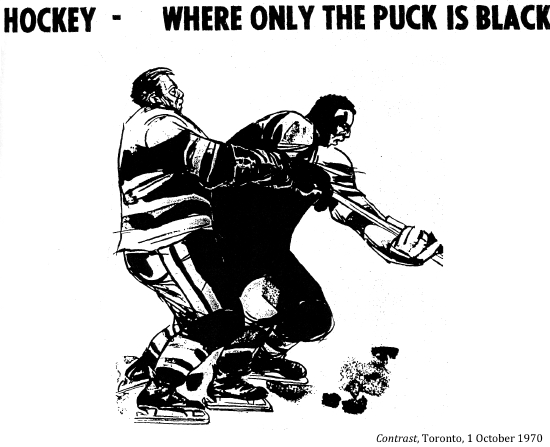
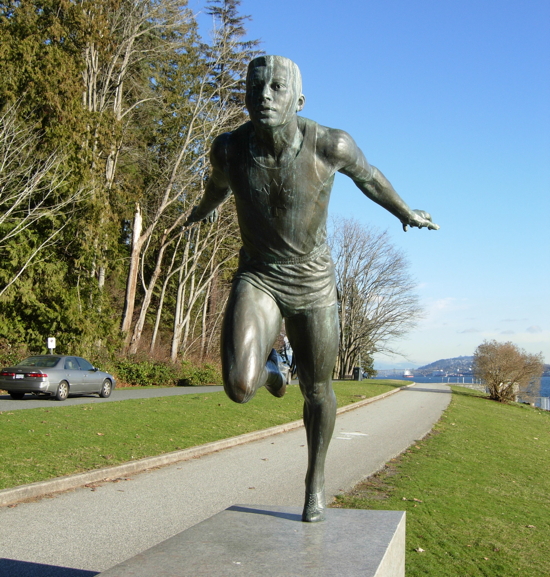
Harry Jerome 1971
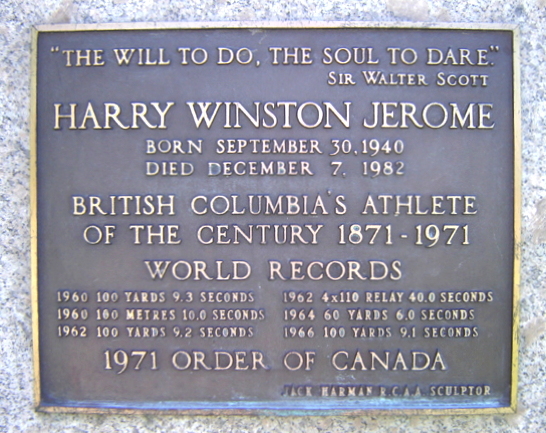
"The government will support and encourage the various cultures and ethnic groups that give structure and vitality to our society. They will be encouraged to share their cultural expression and values with other Canadians and so contribute to a richer life for us all."
Pierre Elliot Trudeau, 1971
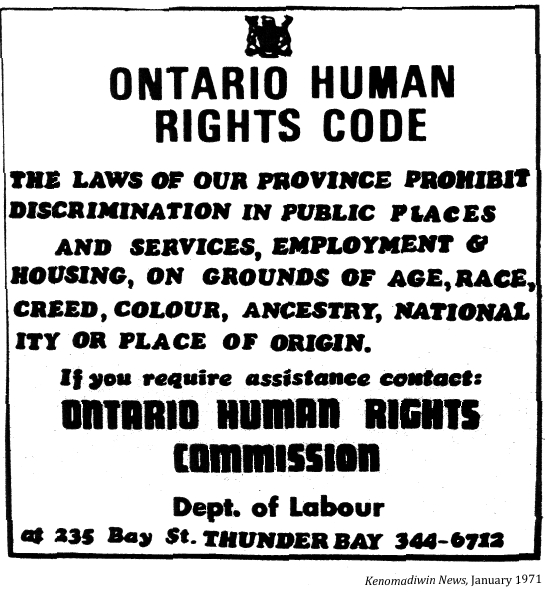
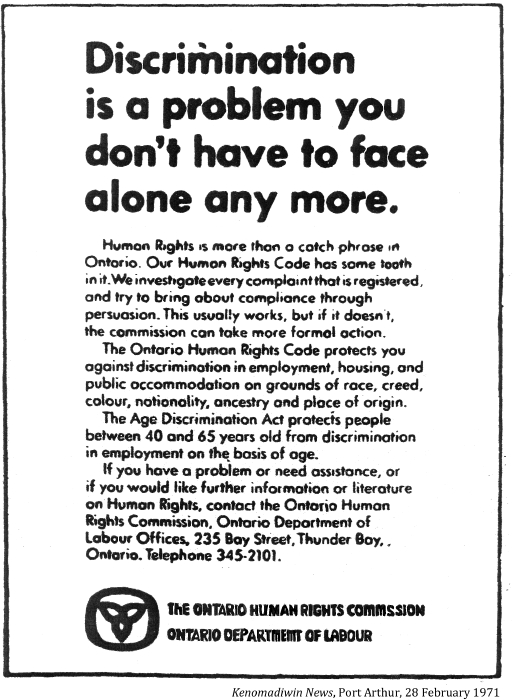
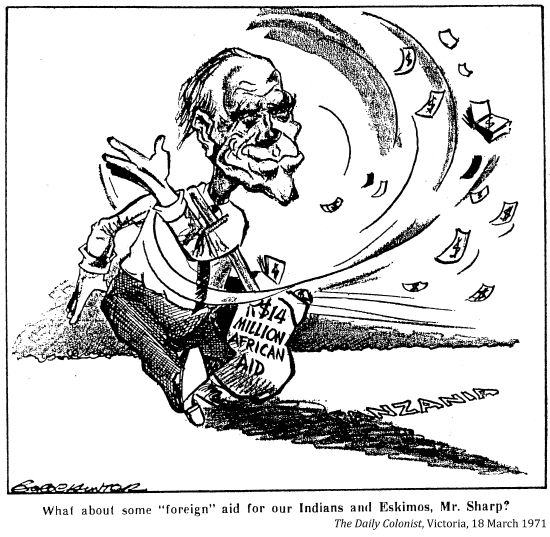
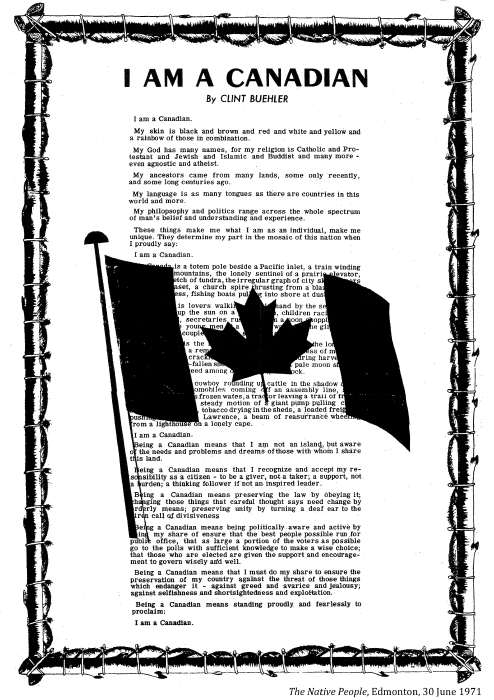
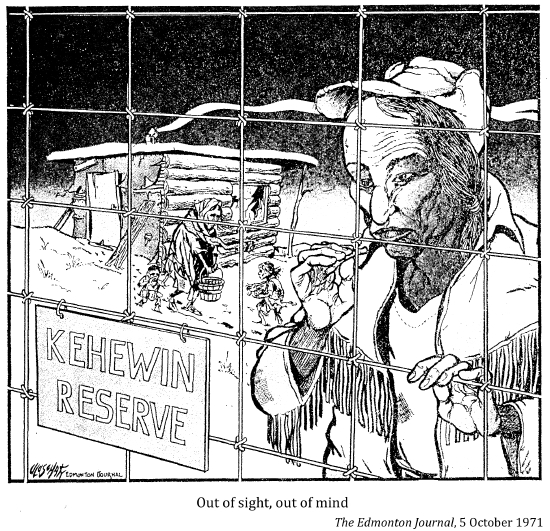
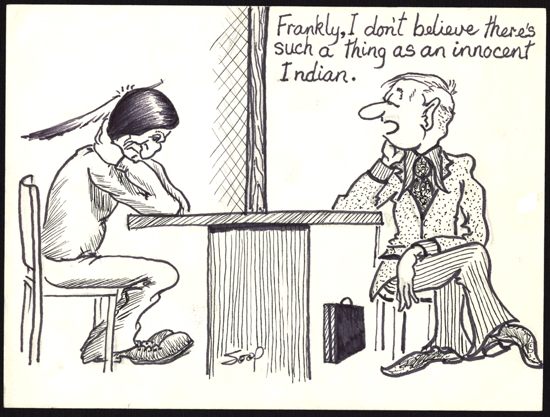
Frankly, I don't believe there's such a thing as an innocent Indian. Kainai News, Standoff, AB, February 1972, LAC accession no. 1993-200-94 / e011313589
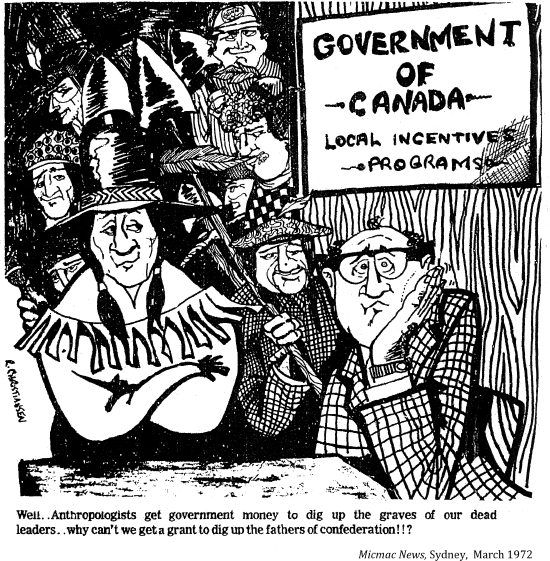
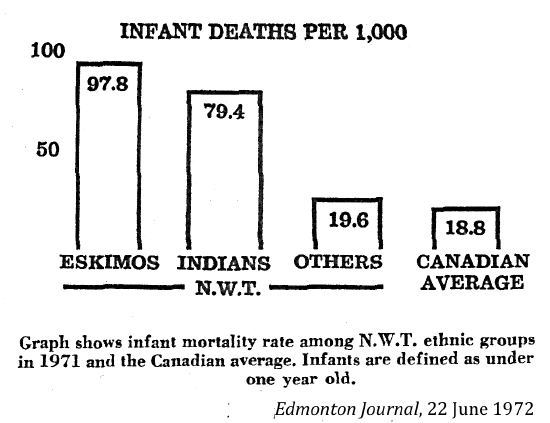

“Lunch hours were really rough when we started school because we had not realized until then, the difference in our diets. They had white or brown bread, boiled eggs, apples, cakes, cookies, and jars of milk.. . . We took bannock for lunch spread with lard and filled with wild meat, and if there was not meat we had cold potatoes and salt and pepper else whole roasted gophers with sage dressing. . . the whites would tease and call ‘Gophers, gophers, Road allowance people eat gophers. . . we were terribly hurt and above all ashamed.”
Maria Campbell, Halfbreed, 1973
"[When the Metis went to town in the 1940s and 1950s] The townspeople would stand on the sidewalks and hurl insults at us. Some would say, ‘Halfbreeds are in town, hide your valuables.’ If we walked into the stores the white women and their children would leave and the storekeepers’ wives, sons and daughters would watch that we didn’t steal anything. I noticed a change in my parents’ and other adults attitudes. They were happy and proud until we drove into town, then everyone became quiet and looked different. The men walked in front, looking straight ahead, their wives behind, and, I can never forget this, they had their heads down and never looked up.”
Maria Campbell, Halfbreed, 1973
"Canada has never been a melting pot; more like a tossed salad."
Arnold Edinborough, address, 7 August 1973
"For the past 150 years nationalism has been a retrograde idea. By an accident Canada has found itself approximately seventy-five years ahead of the rest of the world in the formation of a multinational state and I happen to believe that the hope of mankind lies in multinationalism."
P.E. Trudeau
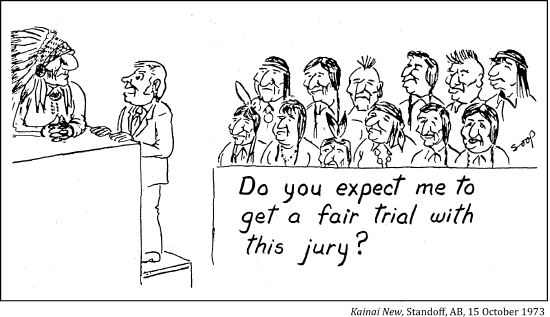
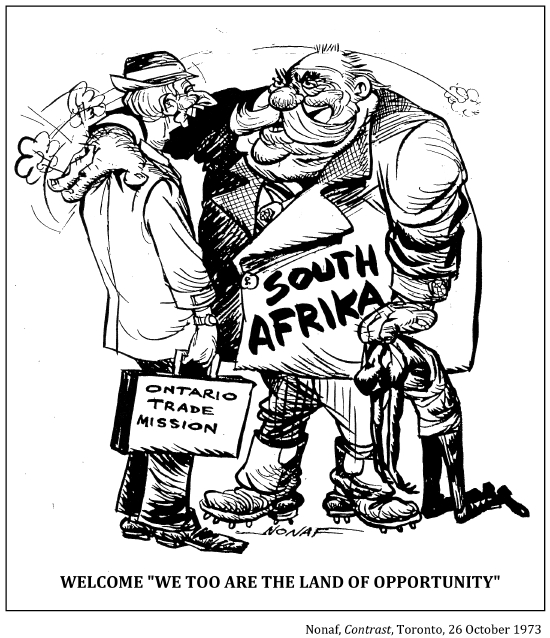
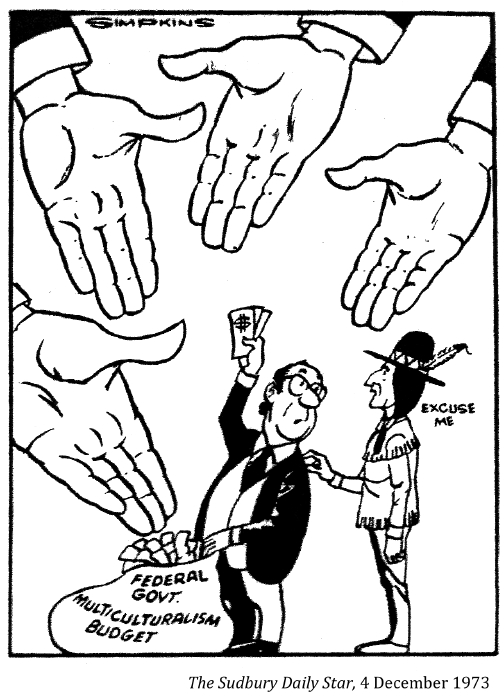
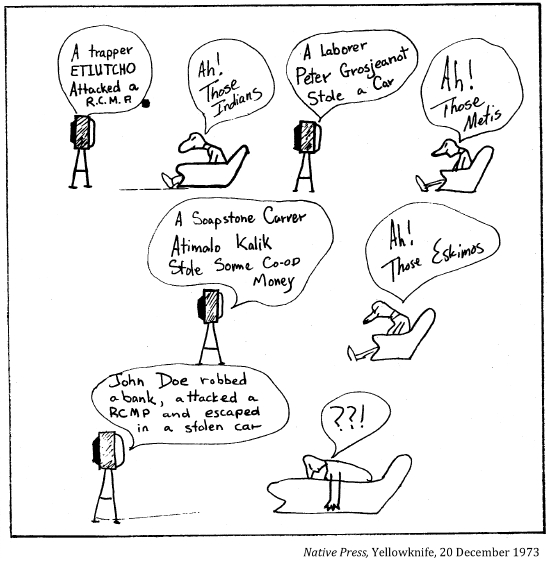
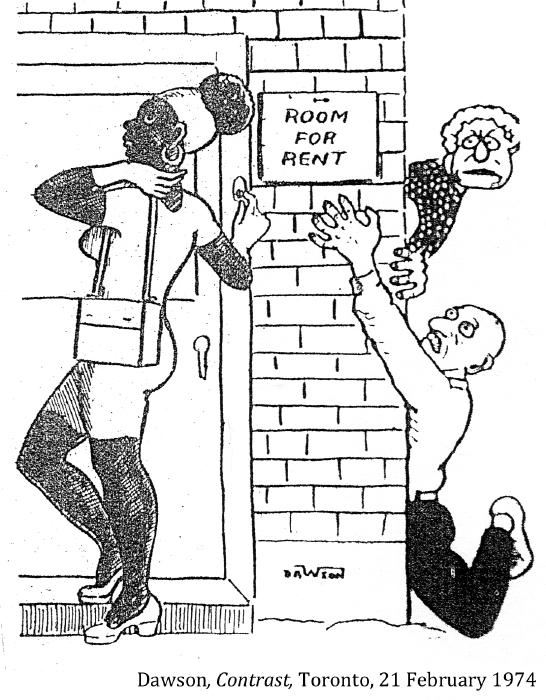
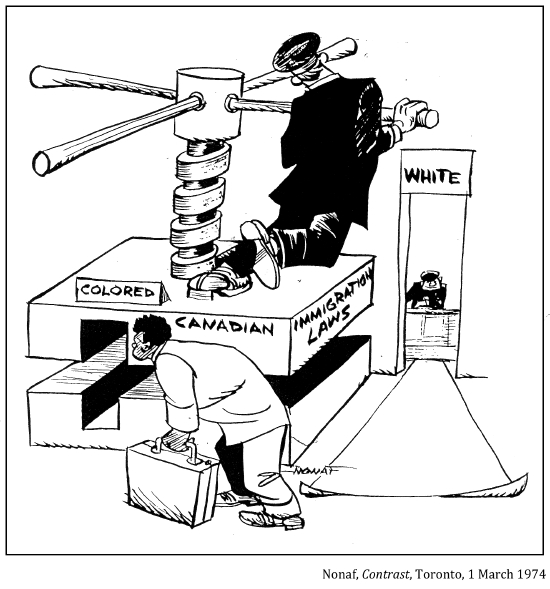
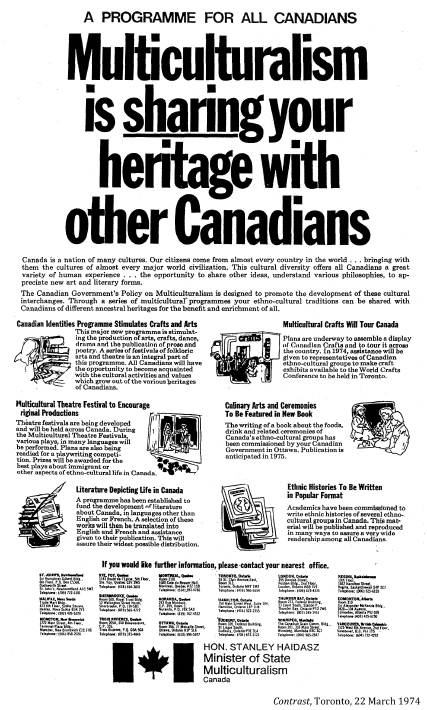
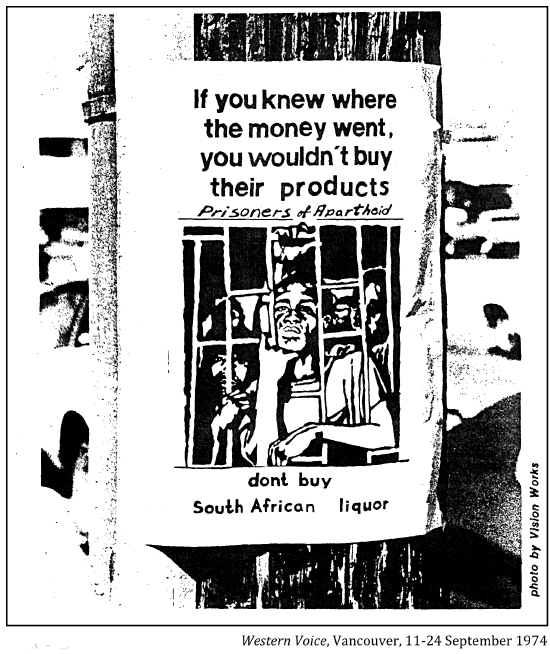
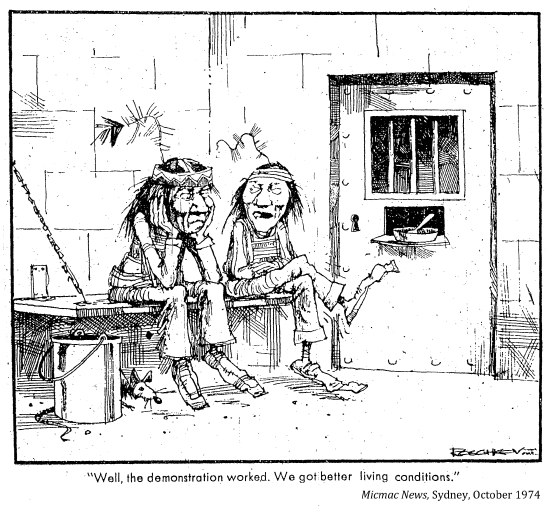
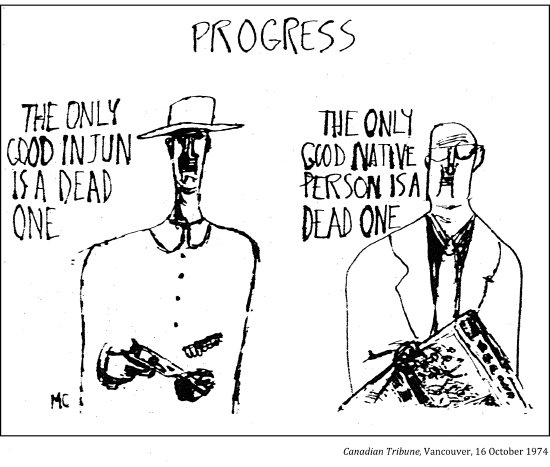
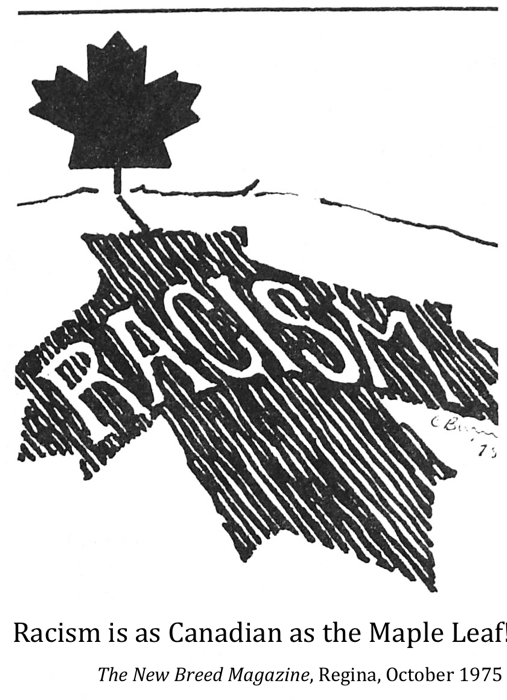
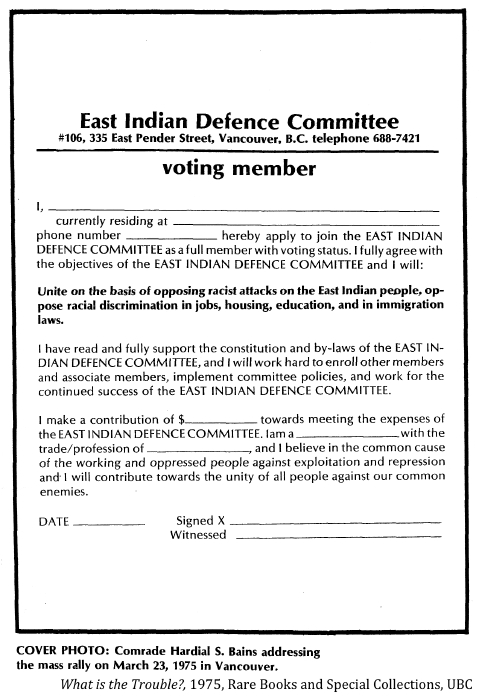
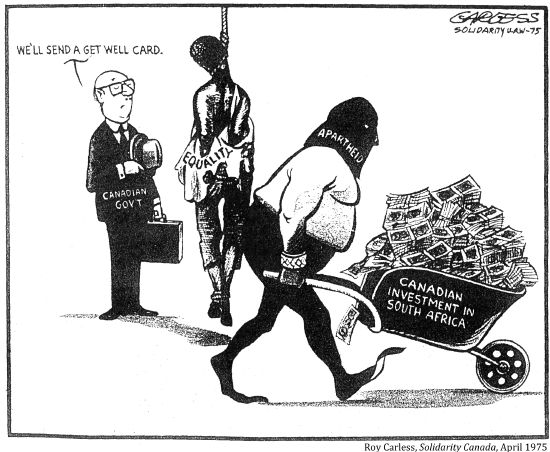
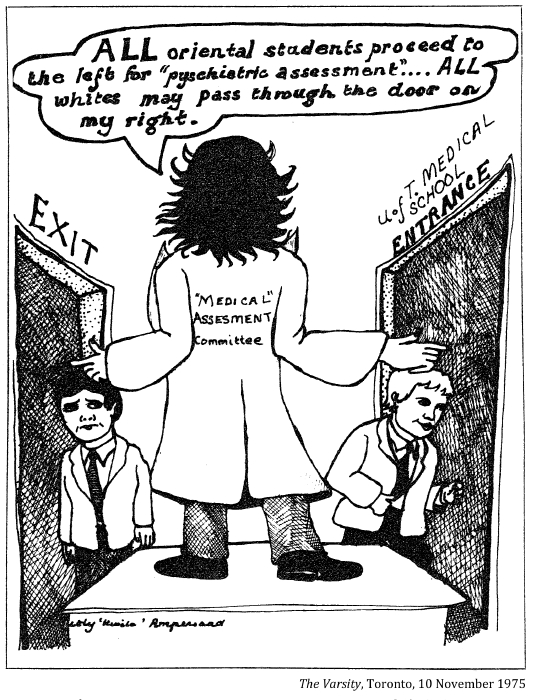
1976
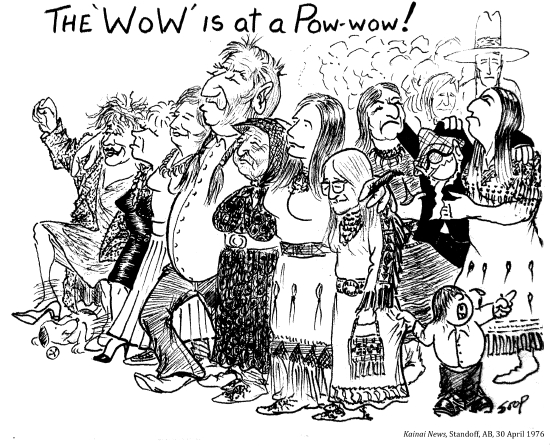
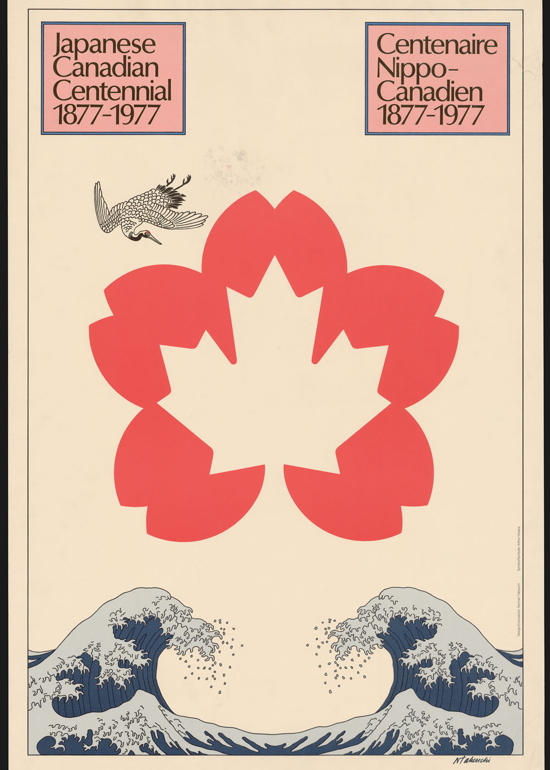
Japanese Canadian Centennial 1877-1977. LAC, R11274
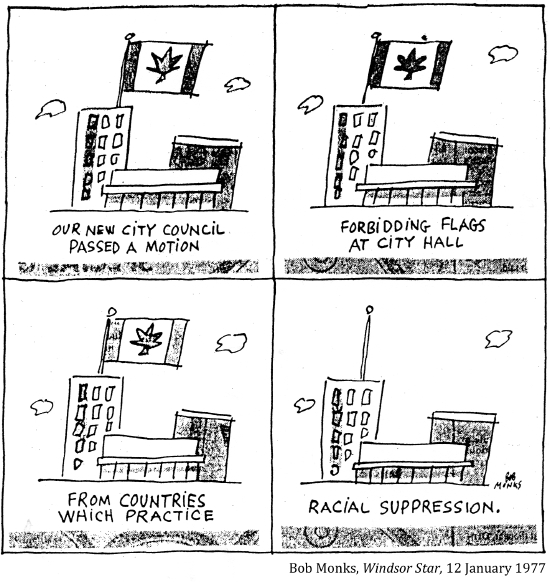
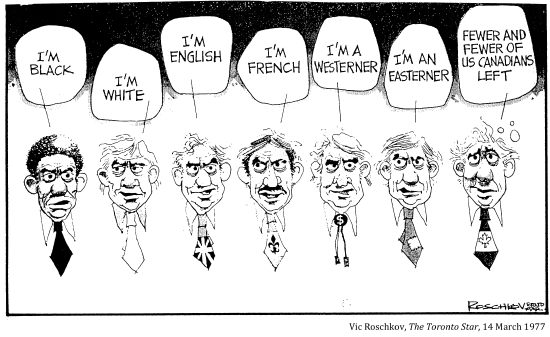
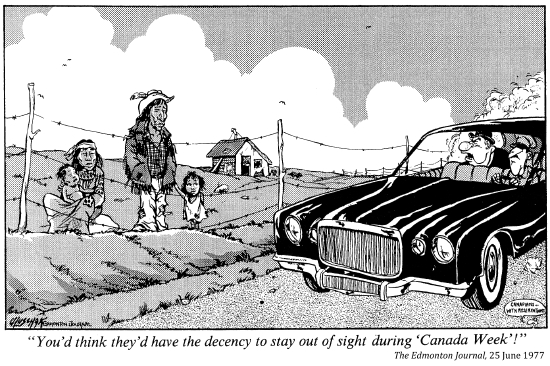
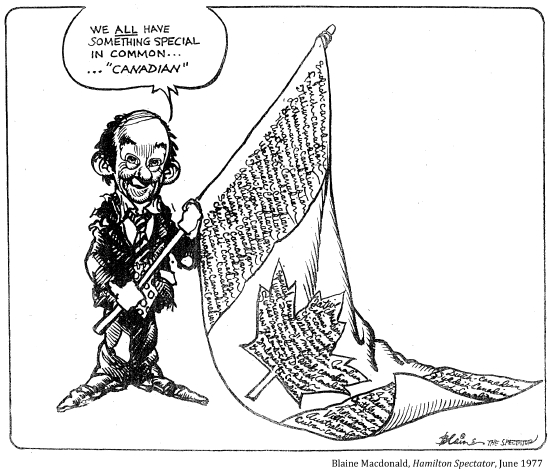
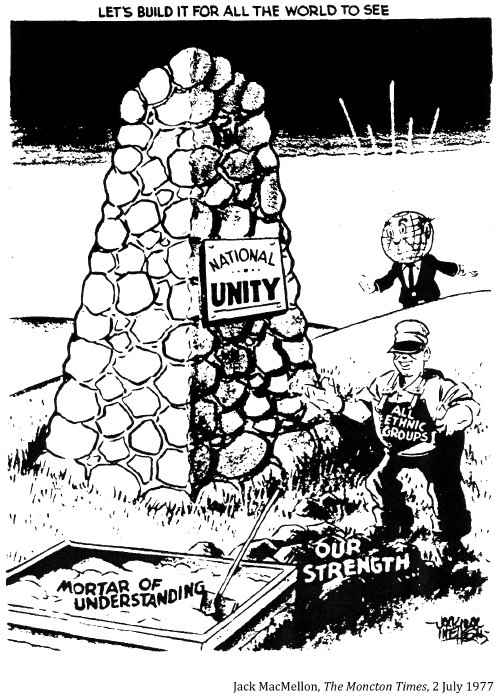
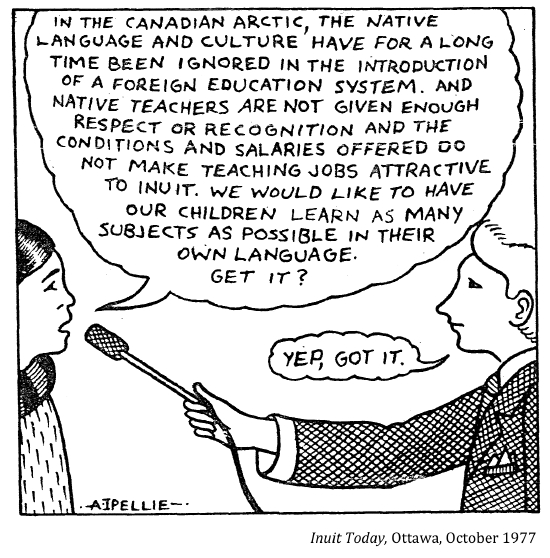
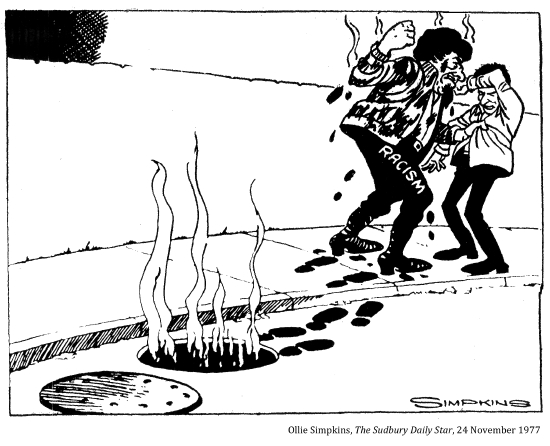

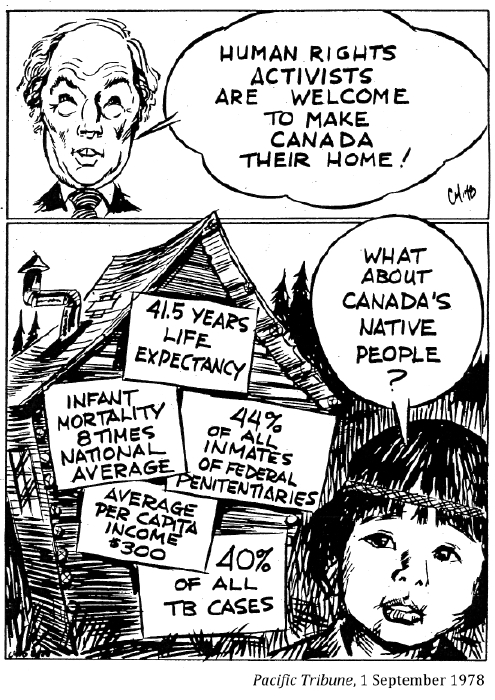
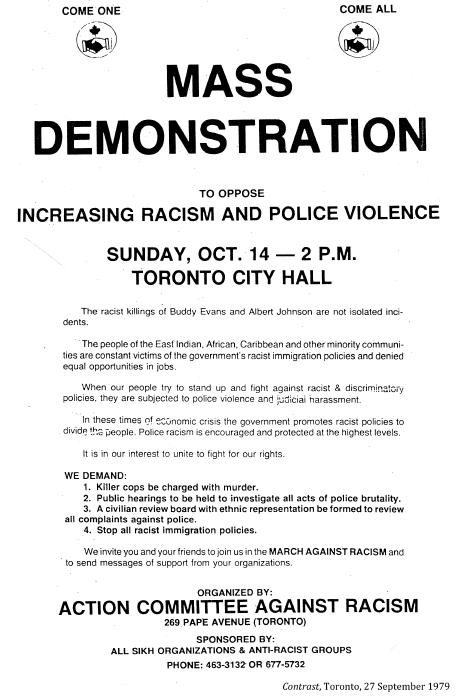

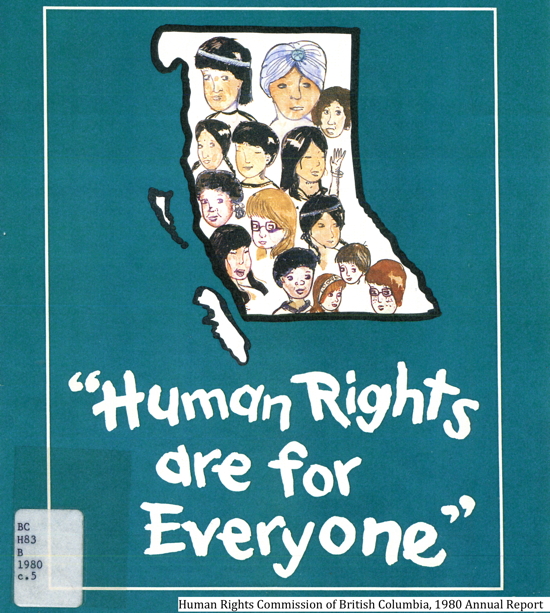
"Diversity is Canada's strength."
Justin Trudeau, 1980?

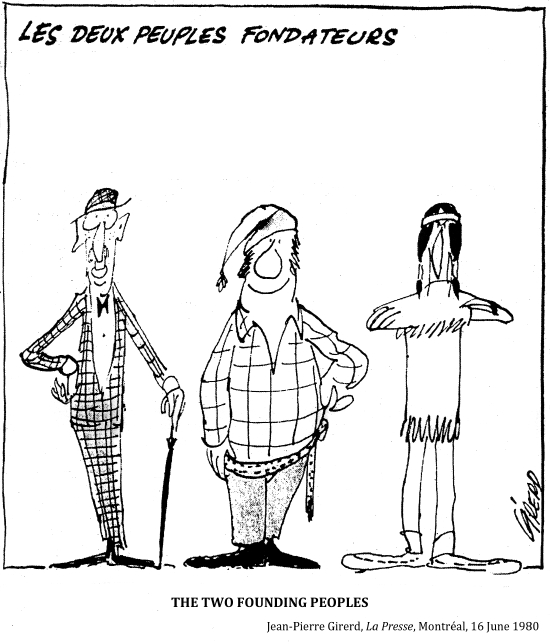
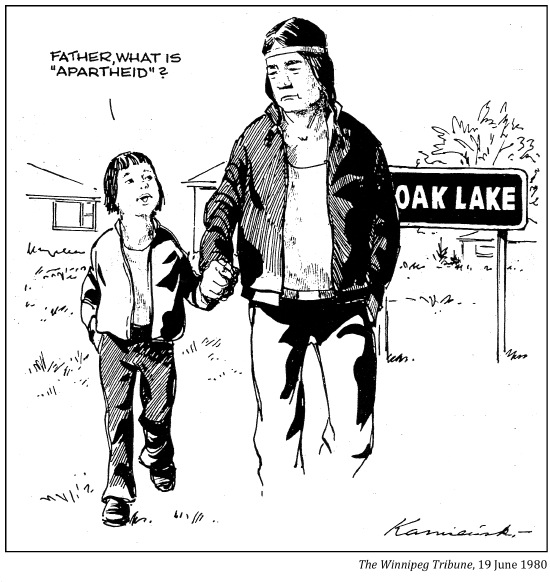
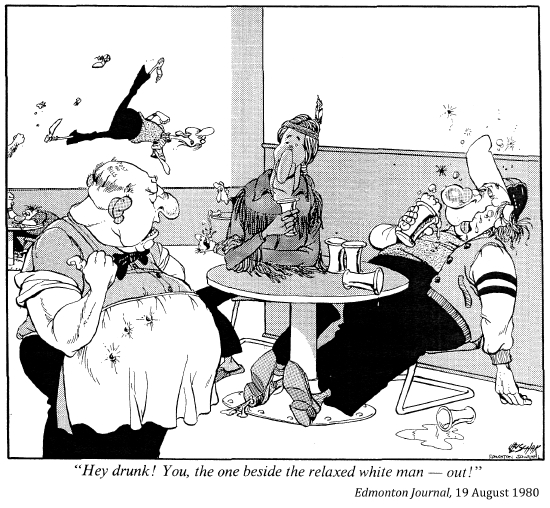
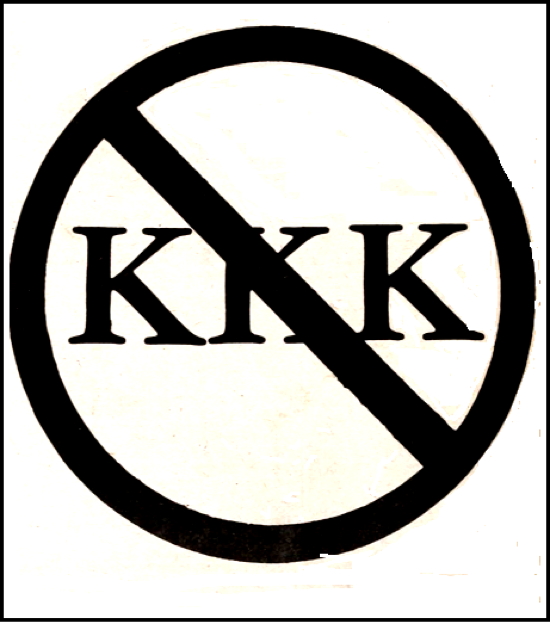
Varsity, Toronto, 3 October 1980
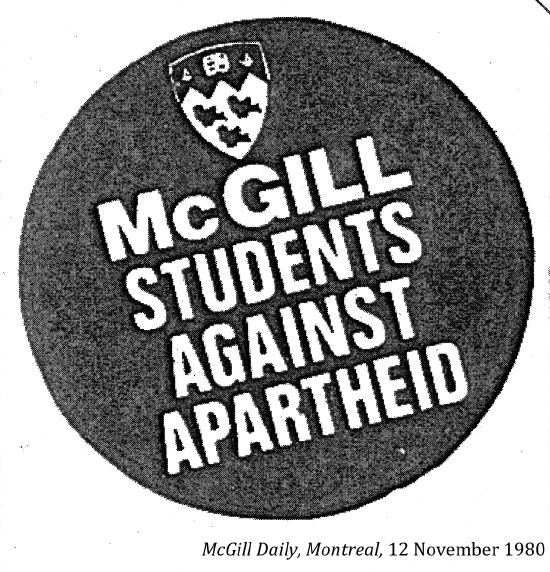
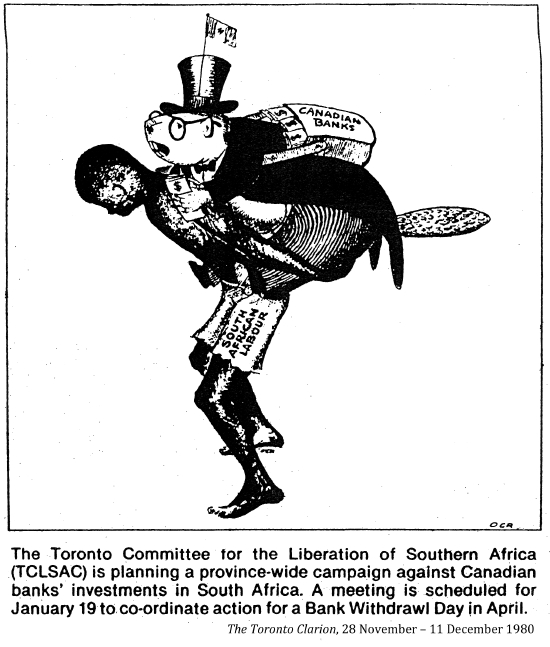
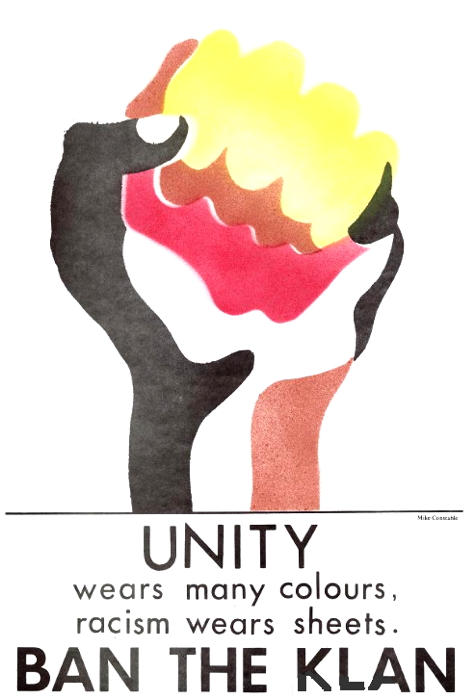
Toronto Public Library, 1981
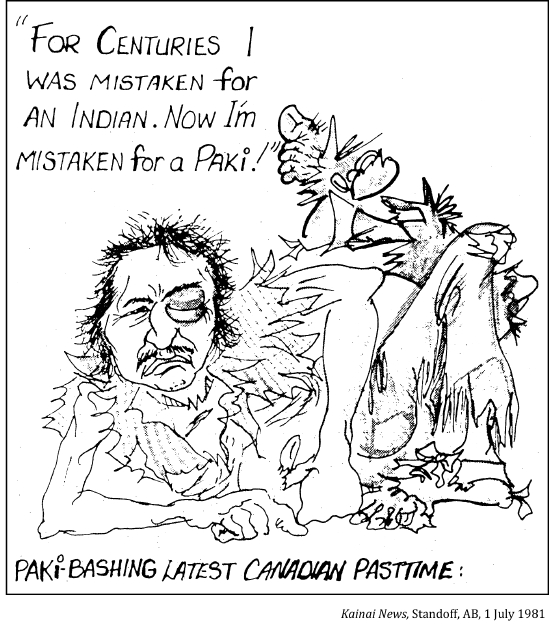
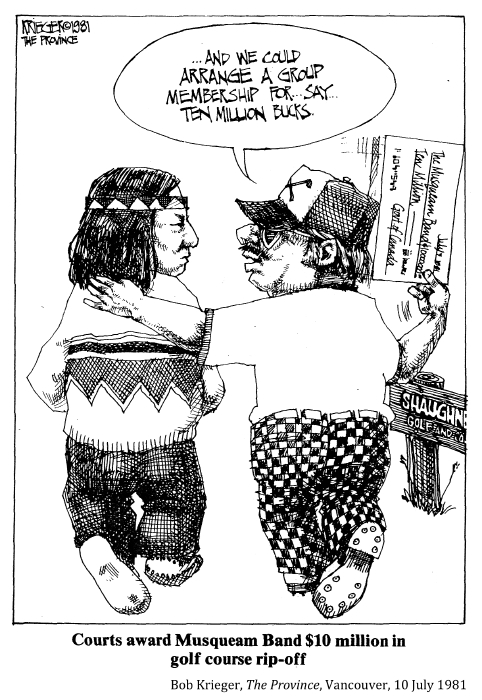
"One of the blessings of Canadian life is there is no "Canadian way of life," but a unity under allegiance to the Crown, admitting a thousand diversities."
George Ignatieff, Cultures and Writers: A Cultural Dialogue of Ethnic Writers, 1983
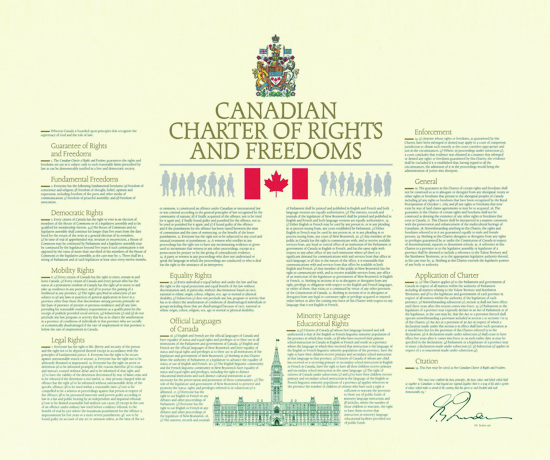
17 Aug 1982
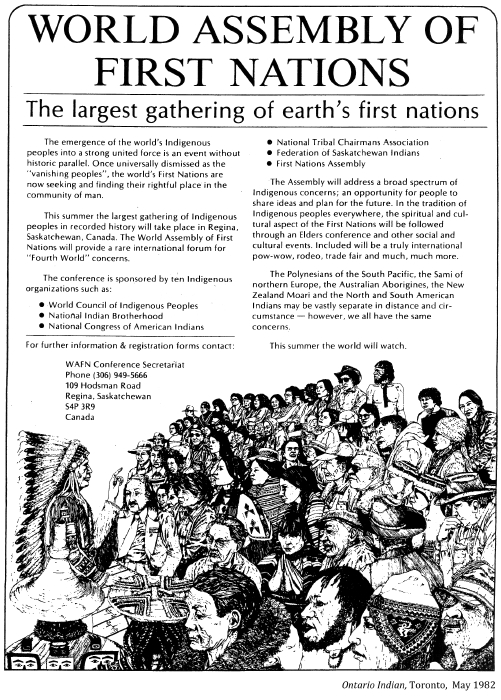
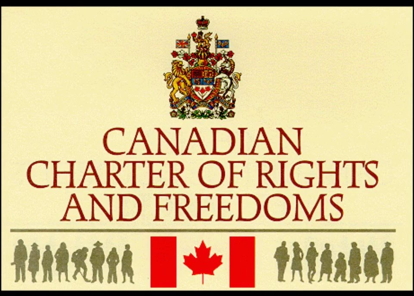
Equality Rights
Equality before and under law and equal protection and benefit of law
• 15. (1) Every individual is equal before and under the law and has the right to the equal protection and equal benefit of the law without discrimination and, in particular, without discrimination based on race, national or ethnic origin, colour, religion, sex, age or mental or physical disability.
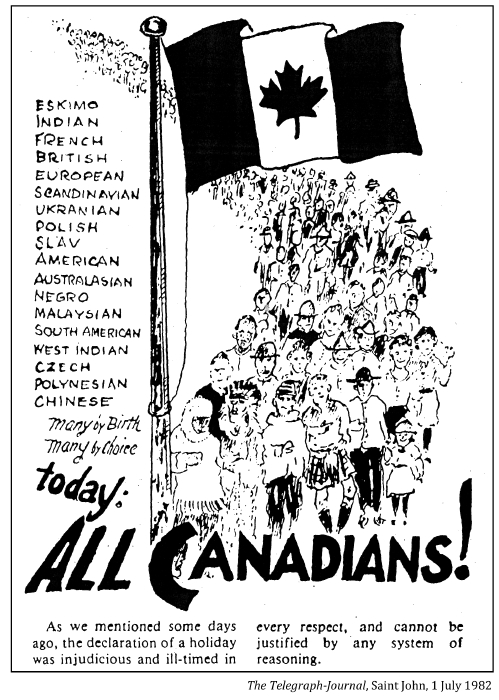
"For although there are two official languages, there is no official culture, nor does any ethnic group take precedence over any other. No citizen or group of citizens is other than Canadian, and all should be treated fairly."
Pierre Elliot Trudeau, House of Commons, 8 October 1971
"Our great advantage, over other nations, is our tradition of diversity, which was born of the historic necessity of English- and French-speaking Canadians working together and which blossomed into a basic respect for the multitude of cultures, which make up Canada."
Joe Clark, address in Saskatoon, 28 August 1976

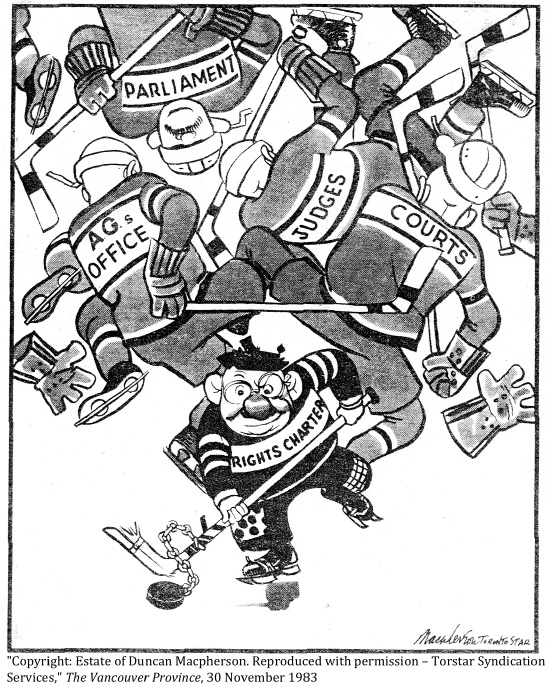
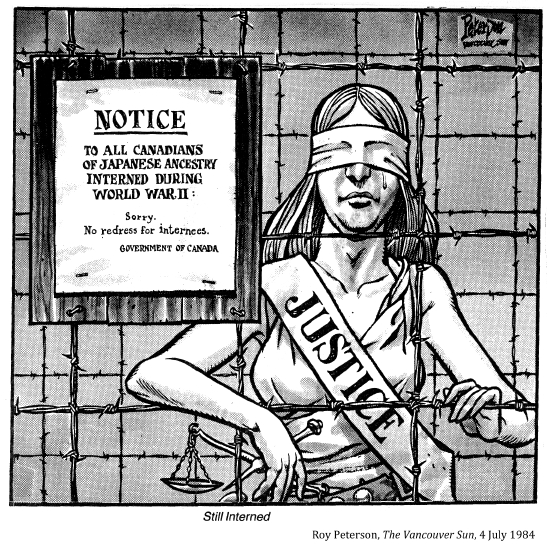
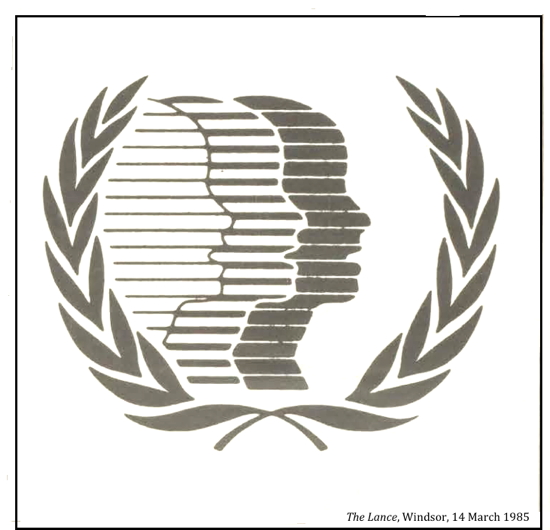

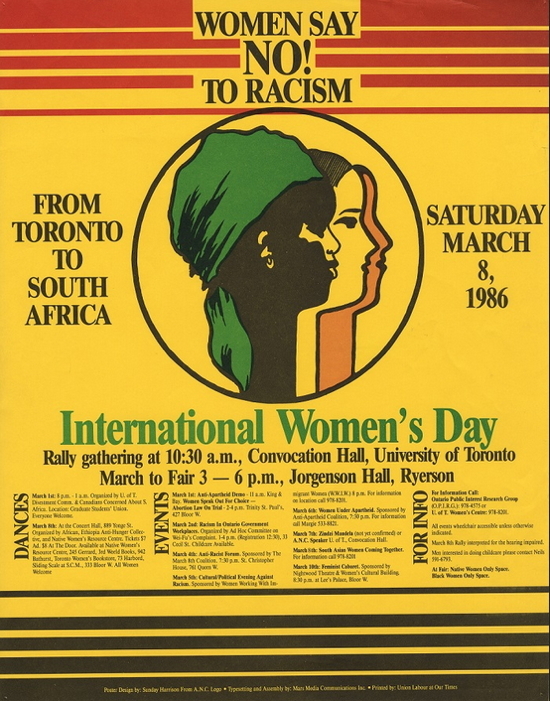
International Women’s Day activities in Toronto, 1986, Sunday Harison, Archives and Special Collections, University of Ottawa, 10-001-S5-180

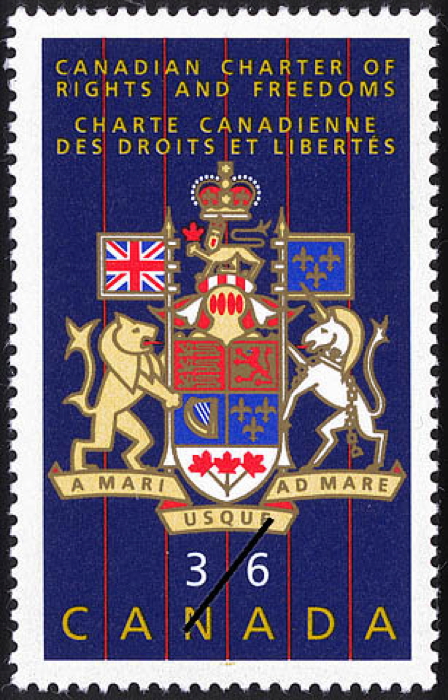
Copyright; Canadian Post Corporation, 1987, e000008290
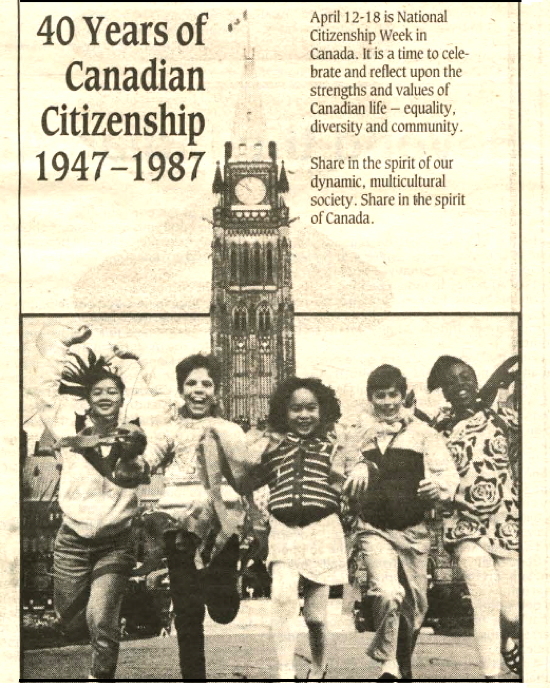
Micmac News, Sydney, March 1987
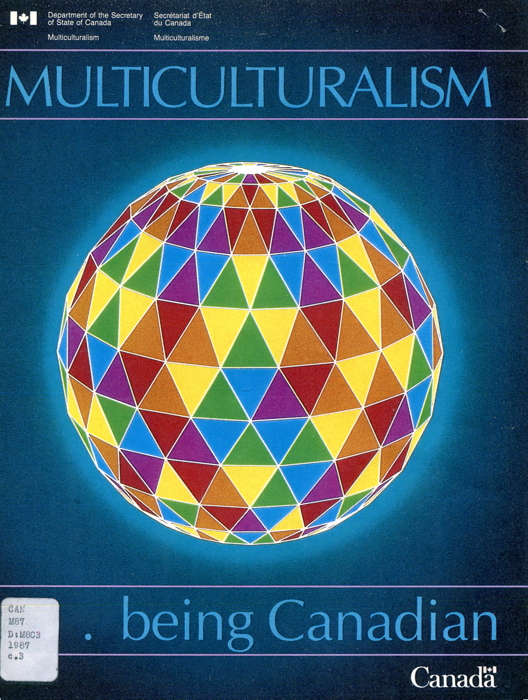
"Cultural and racial diversity have existed in Canada long before the 16th century, when the first European settlers arrived to join the Aboriginal people in the northern half of the continent. Aboriginal society was multicultural as well as multilingual. Today, multiculturalism, which is the recognition of the cultural and racial diversity of Canada and of the equality of Canadians of all origins, is integral to the country's social and economic well being. It has give us a civilized framework within which our diverse population lives together in harmony and respect."
Multiculturalism . . . being Canadian, 1987
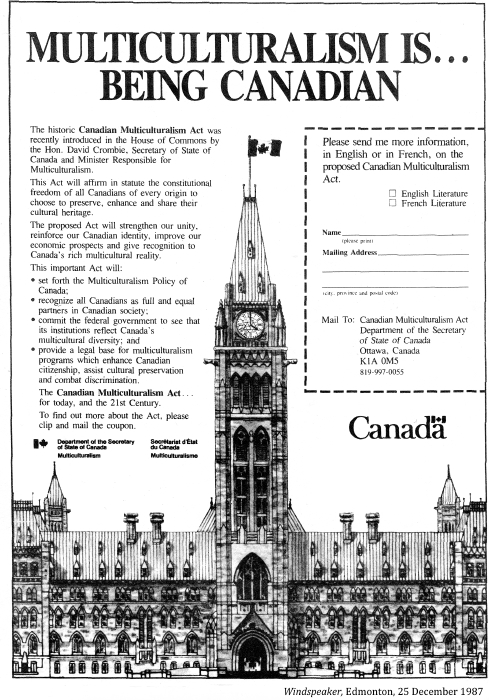
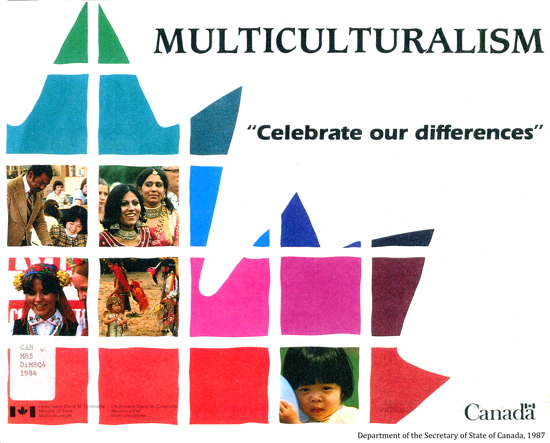
"The policy [of the Canadian Multiculturalism Act] of the Government of Canada act is to recognize and promote the understanding that multiculturalism reflects the cultural and racial diversity of Canadian society and acknowledges the freedom of all members of Canadian society to preserve, enhance and share their cultural heritage."
July 1988
"Nearly half a century ago, in the crisis of wartime, the Government of Canada wrongfully incarcerated, seized the property, and disenfranchised thousands of citizens of Japanese ancestry. We cannot change the past. But we must, as a nation, have the courage to face up to these historical facts."
Brian Mulroney, 22 September 1988
"We have in Canada the ability to bring together two European peoples, complemented by cultures from all around the world, with an indigenous population that has been here for tens of thousands of years. We have the ability to create a culture that will be different from others because we will take from each other and we will give to each other, but we will not have to crush each other."
George Erasmus, speech after Oka, 29 November 1990
Canadian Human Rights Monument erected on 30 September 1990 in Ottawa
"All human beings are born free and equal in dignity and rights - Tous les êtres humains naissent libres et egaux en dignité et en droits." "Equality," "Dignity," and "Rights" "Égalité," "Dignité" et "Droits" and 73 Indigenous languages.
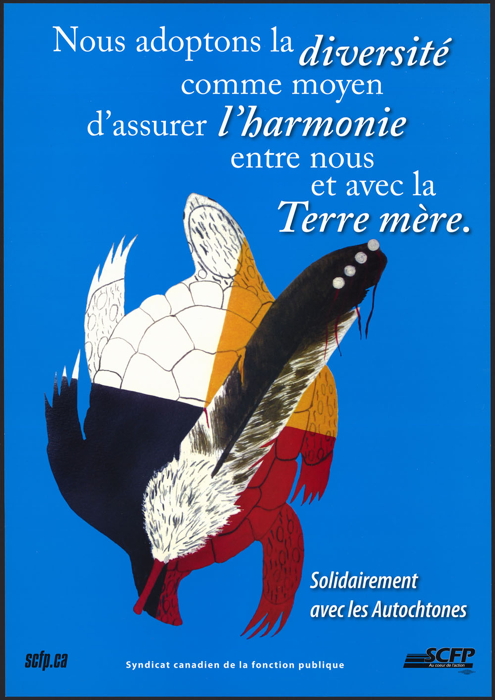
"We Embrace Diversity as part of our way of ensuring harmony with each other and with Mother Earth" . [ca. 1990], LAC Canadian Union of Public Employees fonds /e011202356
"Canada had become officially multicultural . . . Given its colonial past and an effort to cushion the blow of massive non-white immigration, it had adopted propaganda campaigns to convince Canadians that they were at heart racially empathetic people . . . in the newly minted Canada, racism was a thing of the distant past . . . to a degree unsupported by historical evidence."
Mark Cronlund Anderson and Carmen L. Robertson
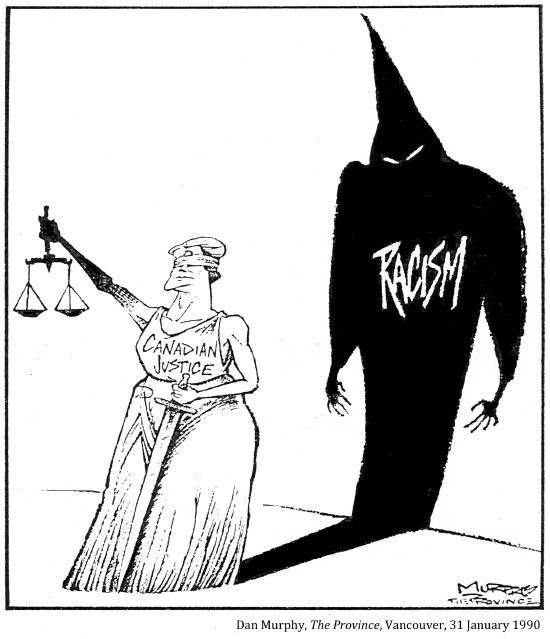
[The Nova Scotia Royal Commission Report on Donald Marshall found a disturbing picture of severe oppression and racial intolerance in the province justice system.]
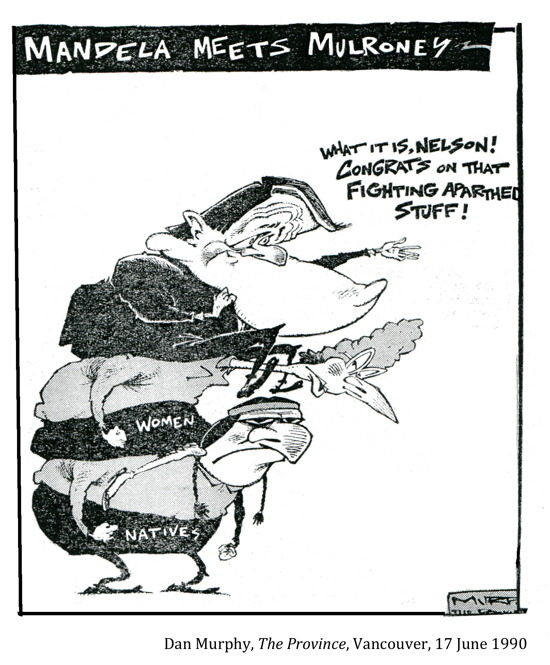
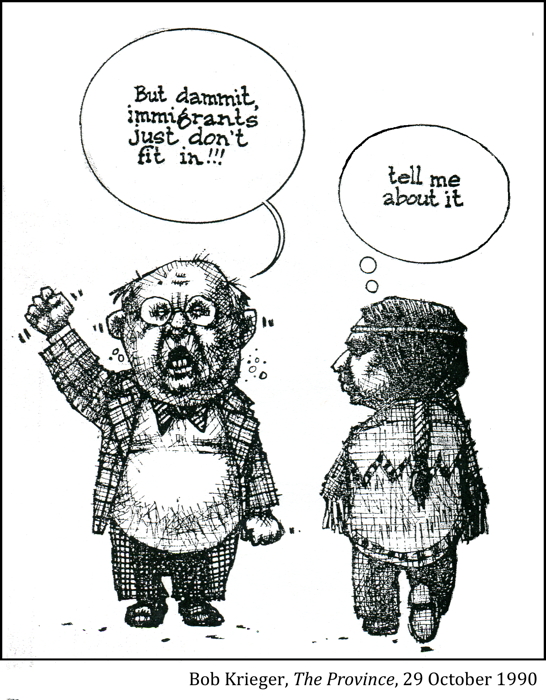
"Canada has an aboriginal past, a biligual present and a multicultural future."
Garry Filmon, The Financial Post, 13 July 1990
"Canadians, even when they are racist, realize that it's not a nice thing to do."
Neil Bissonndath, Other Solitudes, 1990
Canadian Human Rights Monument erected on 30 September 1990 in Ottawa;
"All human beings are born free and equal in dignity and rights - Tous les êtres humains naissent libres et egaux en dignité et en droits." "Equality," "Dignity," and "Rights" "Égalité," "Dignité" et "Droits" and 73 Indigenous languages
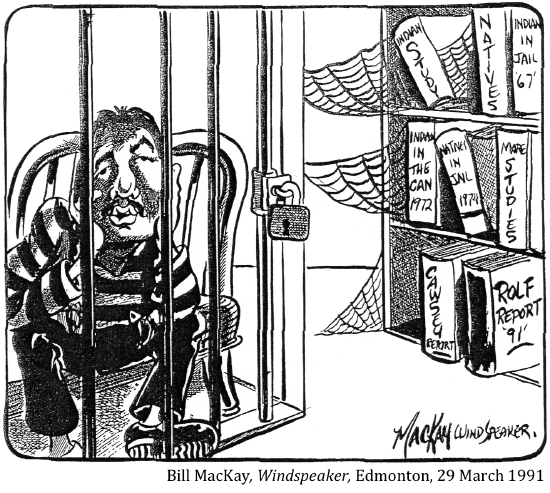
“We have great reason to be proud–great reason to celebrate. We’re acknowledging our shared destiny (Indigenous and different immigrant groups).”
Premier Roy Romanov, 1992
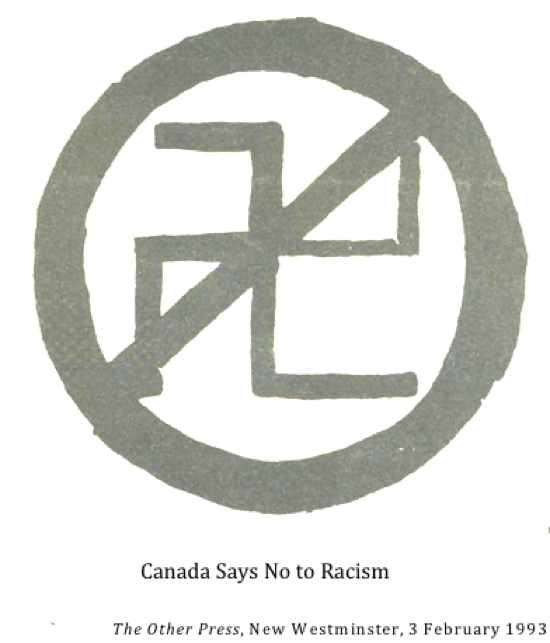
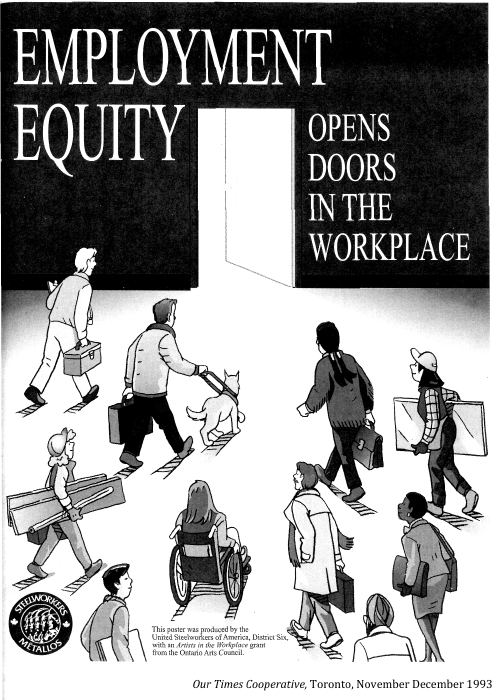

The Manitoban, Winnipeg, 26 October 1994
"What we have built together in Canada is something very great and very noble. A country whose values of tolerance, understanding, generosity have made us what we are: a society where our number one priority is the respect and dignity of all our citizens."
Speech, Jean Chrétien, 1995
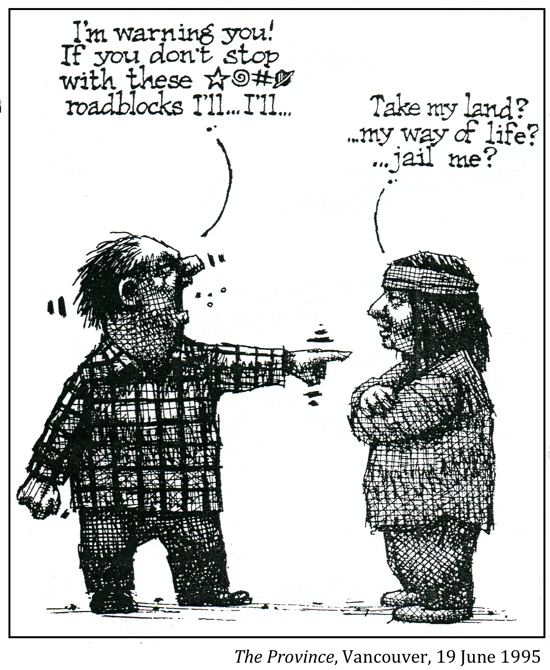
"In a world darkened by ethnic conflicts that literally tear nations apart, Canada has stood for all of us as a model of how people of different cultures can live and work together in peace, prosperity and understanding."
Bill Clinton, House of Commons and the Senate, 23 February 1995
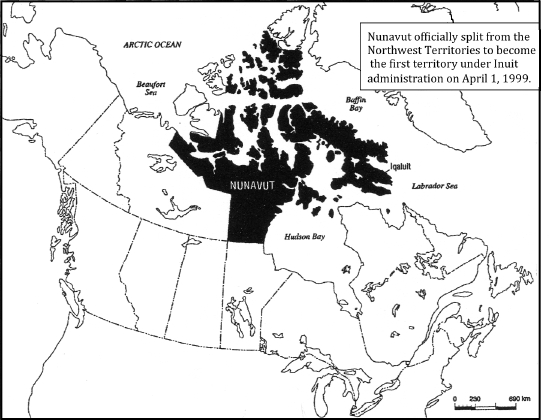
The creation of Nunavut meant that Inuit people could have a say in government decisions, including preserving their language and way of life. February 1972, LAC accession no. 1993-200-94 / e011313589
"I love Toronto. It's cosmopolitan. There's all sorts of different kinds of people everywhere you go in Toronto . . . It's a real melting pot in every sense of the word."
Prince, The Globe and Mail, 29 April 2003
There are not two sides to bigotry
https://www.politico.com/story/2017/08/17/schwarzenegger-jabs-trump-bigotry-241763
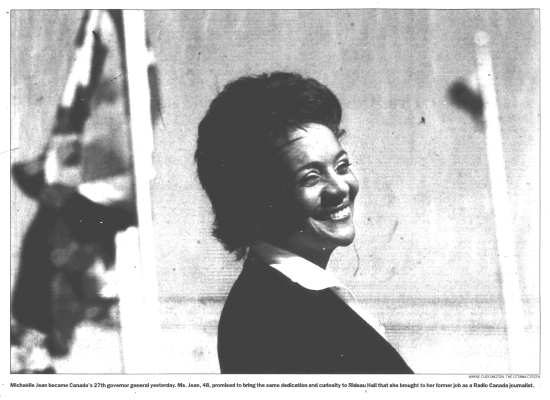
Governor General Michelle Jean, Ottawa Citizen, 27 September 2005
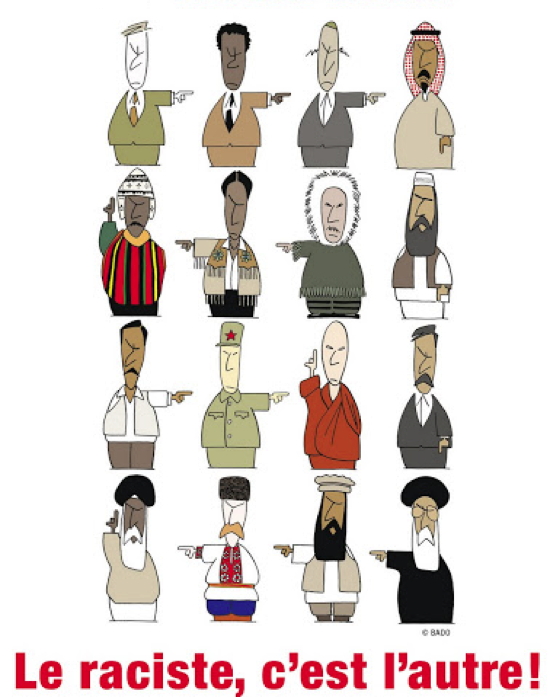
©Guy Badeaux (Bado), 25 March 2007
"The core of our civilization . . . is based on the idea (First Nations idea} of an inclusive circle that expands and gradually adapts as new people join us."
John Ralston Saul, A Fair Country
"In 2010, Naheed Nenshi, who is of South Asian descent, became the first Muslim mayor of a major city in North America when citizens of Calgary elected him to office."
Allan Levine
"White, black and yellow men – they all cry salt tears."
Claude Aveline
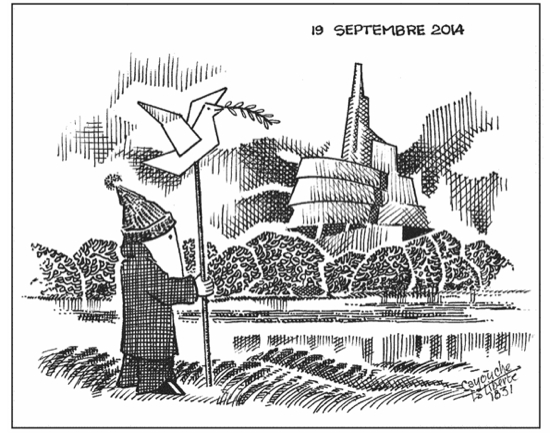
Réal Bérnard (Cayouche), La Liberte, St. Boniface, 24 September 2014
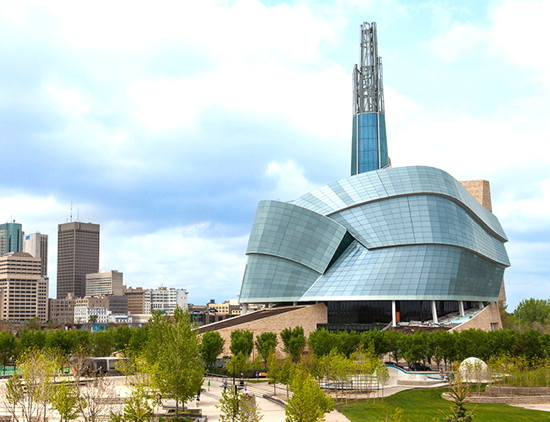
Can Museum for Human Rights, Winnipeg
"Canada's success is rooted in its unique approach to liberty through inclusive diversity (multiculturalism)."
Justin Trudeau
"When former B.C. premier Ujjal Dosanjh came to Canada almost 50 years ago, he was among the many newcomers who found the West Coast a "fair and inclusive" place compared to where he had been [India]. . . Dosanjh believes it 's wise to put past incidents of B.C. racism into perspective. 'We have learned in B.C. And we've been moving forward, including on the First Nations file. To not acknowledge the distance we have come is to do an injustice to Canada,' he says."
Douglas Todd, The Vancouver Sun, 5 December 2015
"In 2016 Indigenous and Black people accounted for 4.8 per cent and 3.5 per cent of the Canadian population but made up 25.5 per cent and 8.7 per cent of those in federal prison [Statistics Canada]. . . There's absolutely no doubt in my mind that there is systematic racism in federal corrections, says Dr. Ivan Zinger, Canada's correctional investigator."
Globe and Mail, Toronto, 24 October 2020
"Black men are nearly 24 per cent more likely than white men to receive a 'maximum' initial security rating, the worst possible score, which affects access to treatment programs. Indigenous men, meanwhile, are roughly 30 per cent more likely than their white counterparts to be assigned the worst possible reintegration potential score, which plays a significant role in parole decisions. . . [even though] Indigenous men are 9 per cent less likely to reoffend than white men, and Black people a full 41.1 per cent less likely to do so."
Globe and Mail, Toronto, 25 October 2020
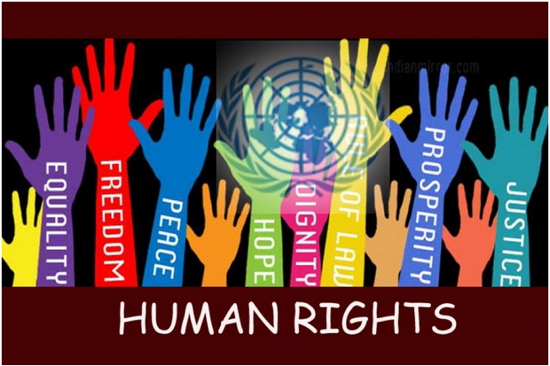
Arrupe Tribal Cultural Centre Indian, 18 March 2017
https://www.environicsinstitute.org/projects/project-details/race-relations-in-canada-2019
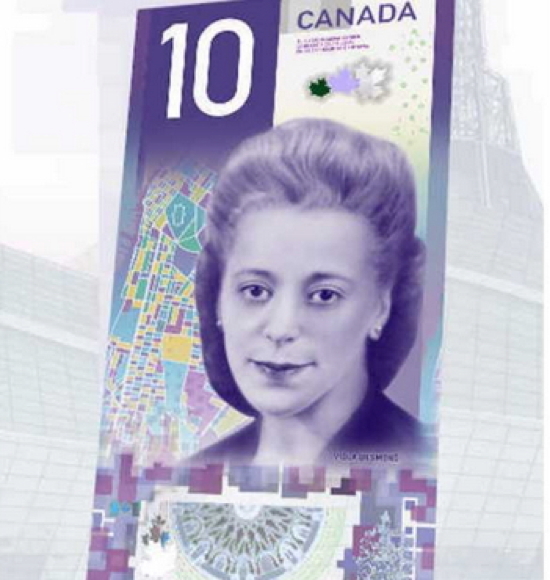
Viola Desmond, Bank of Canada 2019
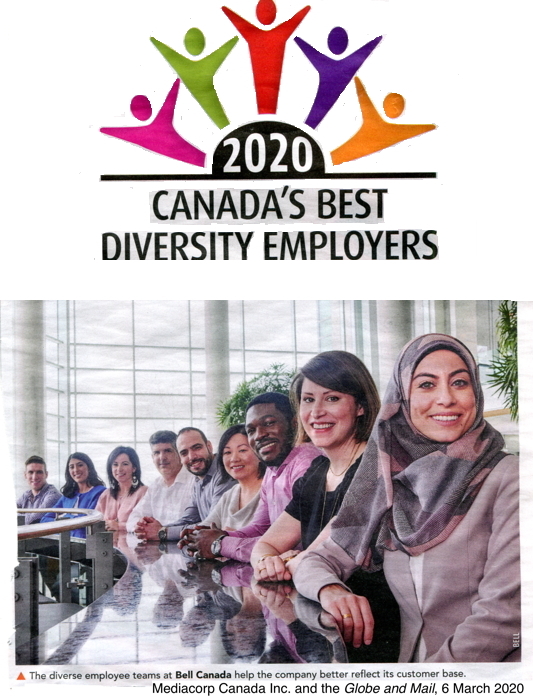
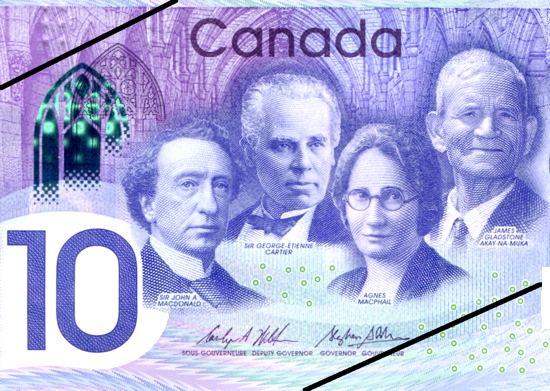
"To the three original components of that shared civic culture [brought by English-speaking settlers]– parliamentary democracy, constitutional government, and monarchy– three more components have been added: federalism, respect for ethnic diversity, and human rights."
Peter H. Russell, Canada's Odyssey, p.349
Visible Minorities
Population of Canada, 2016 34.46 Million
Visible minorities
(other than aboriginal) 7.67
South Asian 1.92
Chinese 1.52
Black 1.20
Fillipino .780
Latin America .447
Arab .523
South East Asian .313
West Asian .264
Korean .188
Other
(visible not indicated) .132
Multiple visibleness .232
1961 less than 1% 1 in 100
1981 4.7%
1991 9.4%
2001 13.4%
2011 19.1%
2016 22.2%
2020 1 in 3
Source: National Post, 10 June 2020
"Canada is a multicultural, multiracial and multi-linguistic society. . . [so we need to] understand people from diverse perspectives."
Dr. Annette Henry
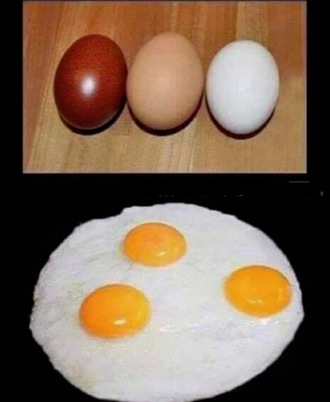
Brotherhood, Facebook, 2020

|




















































































































































































































































































































































































































































